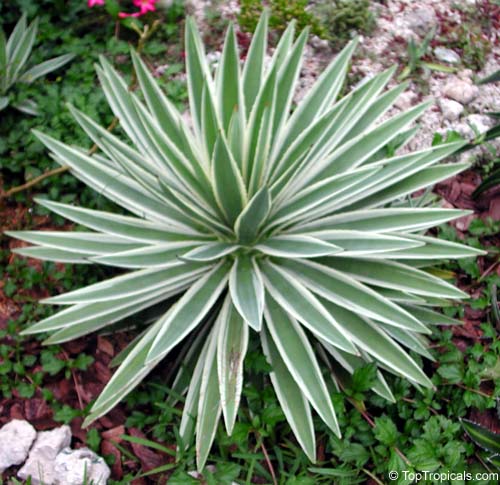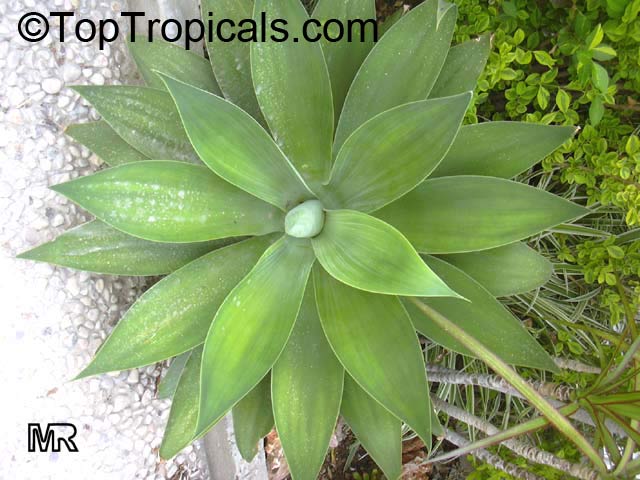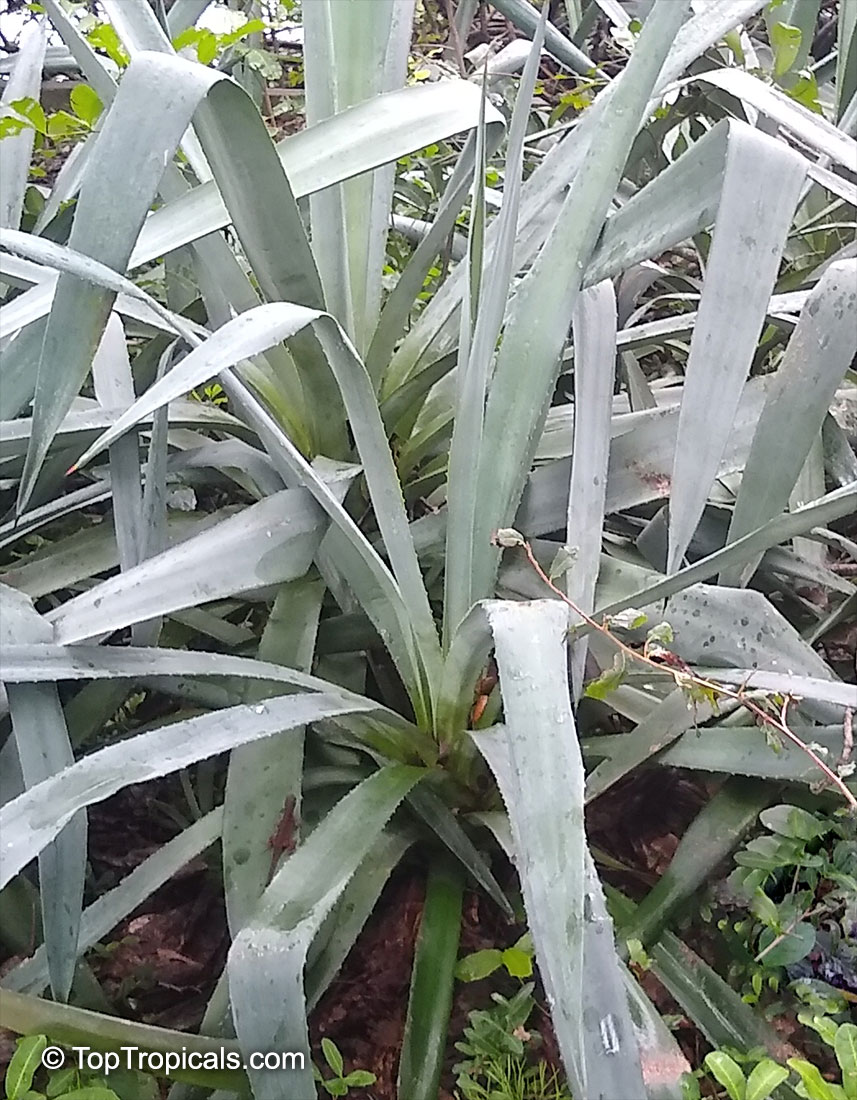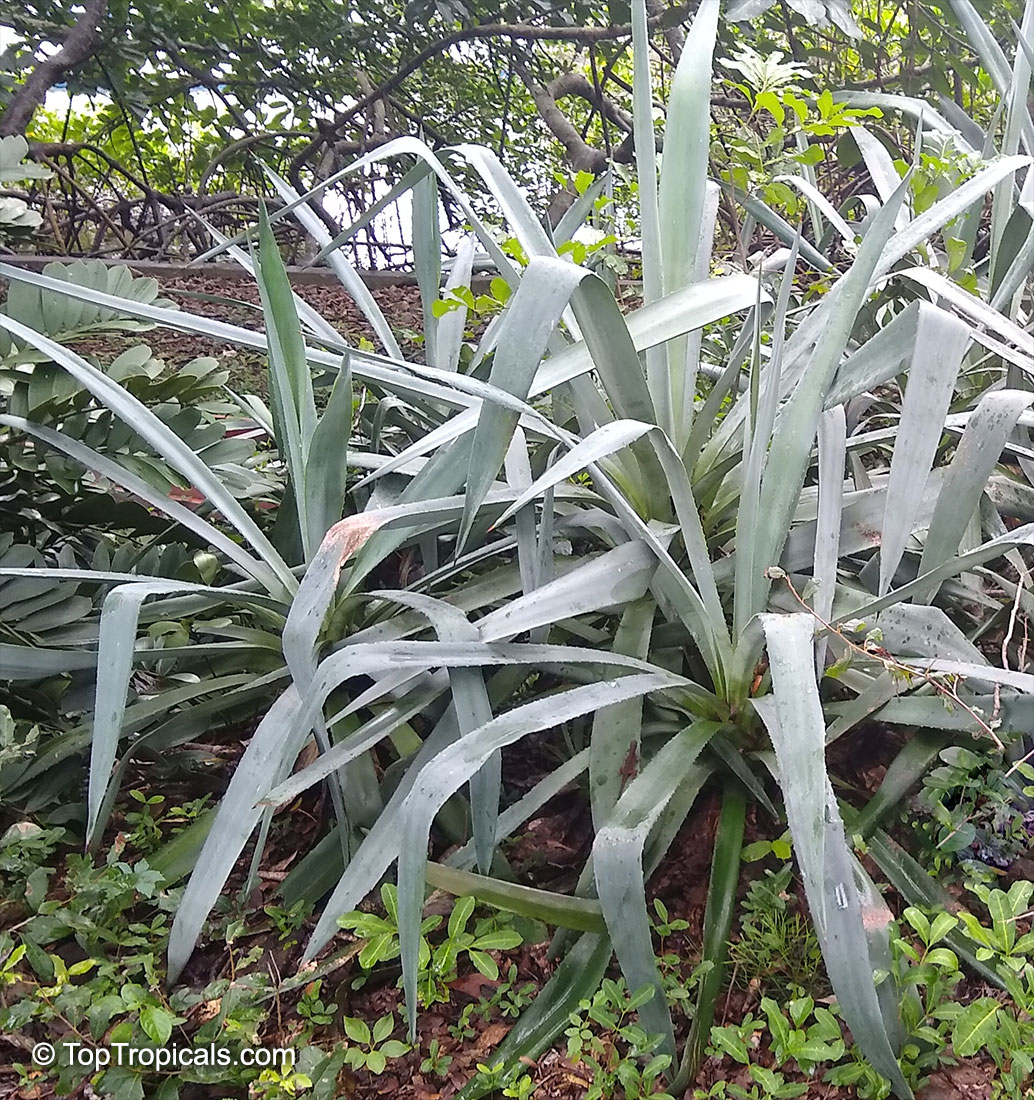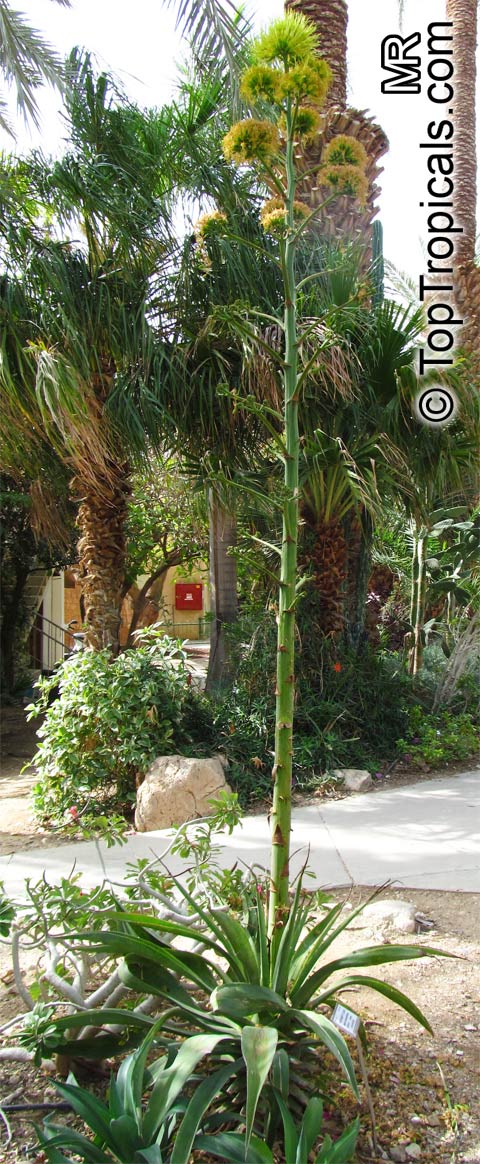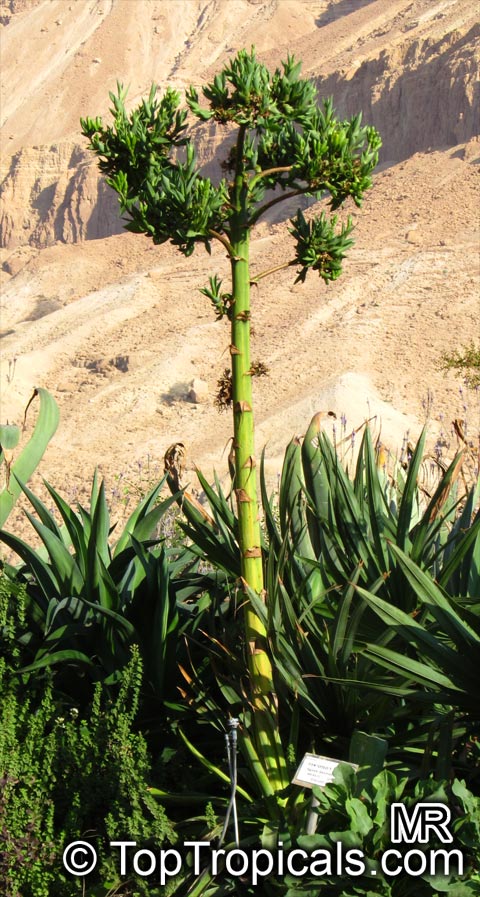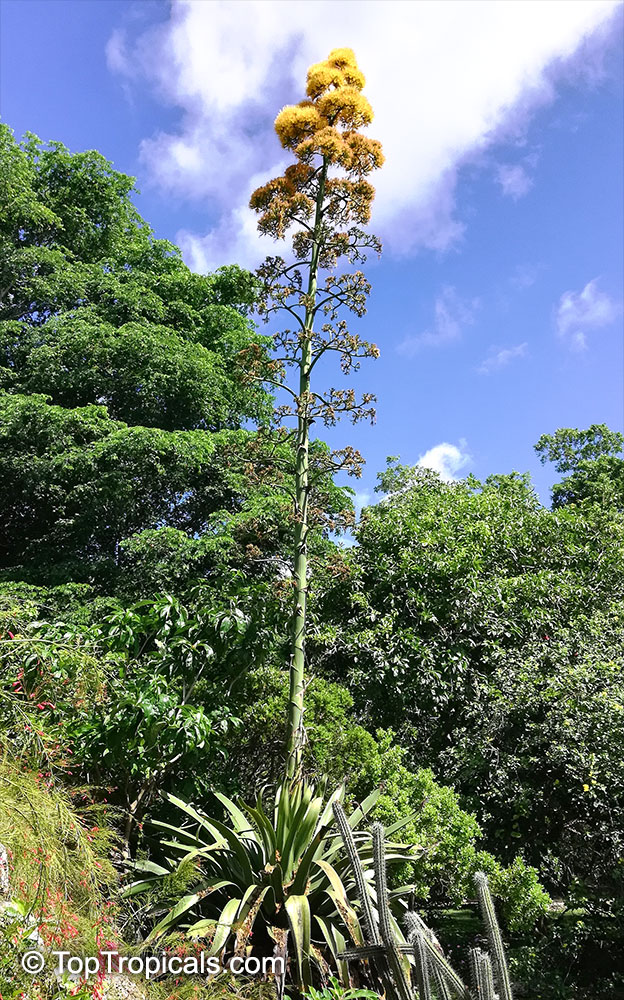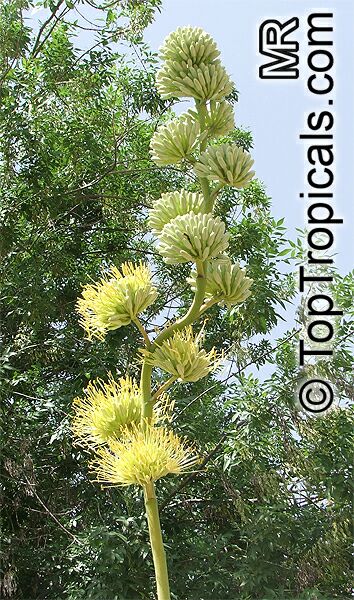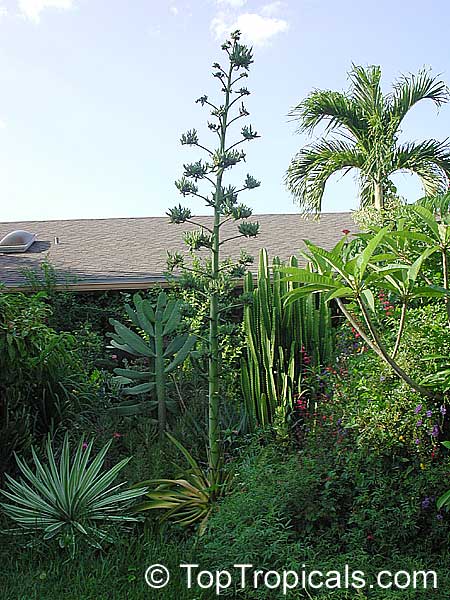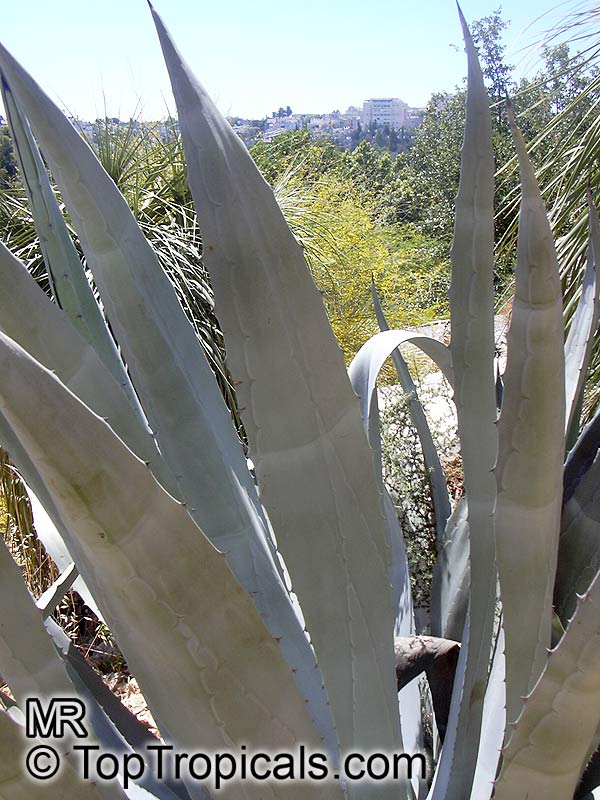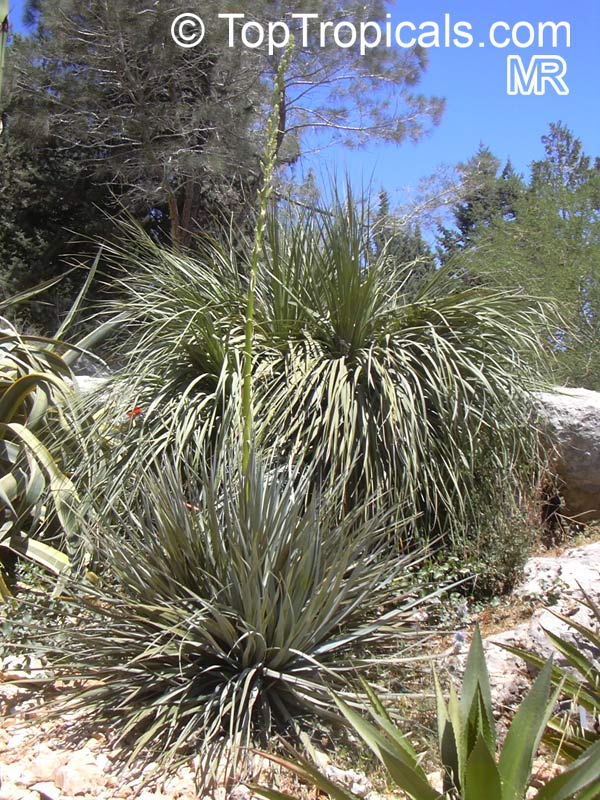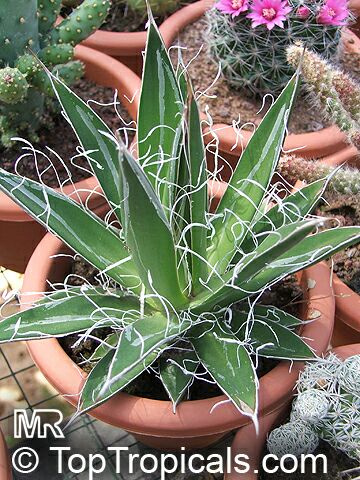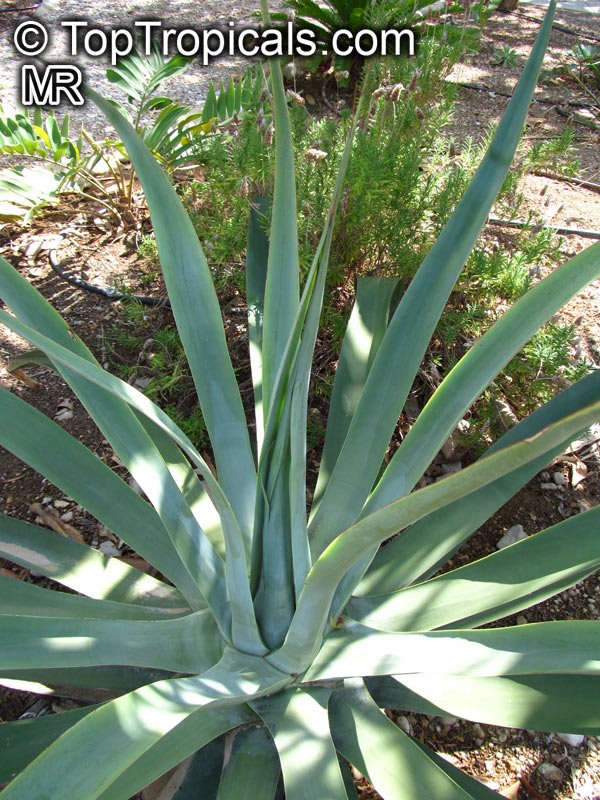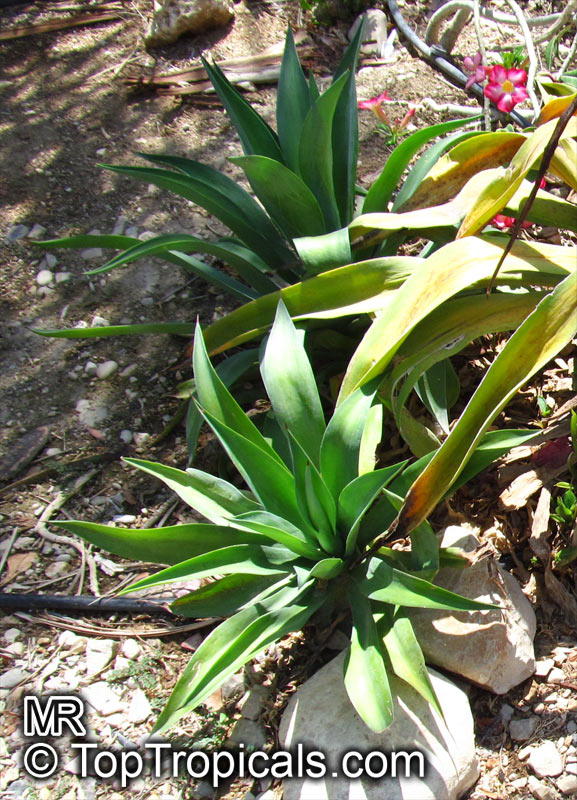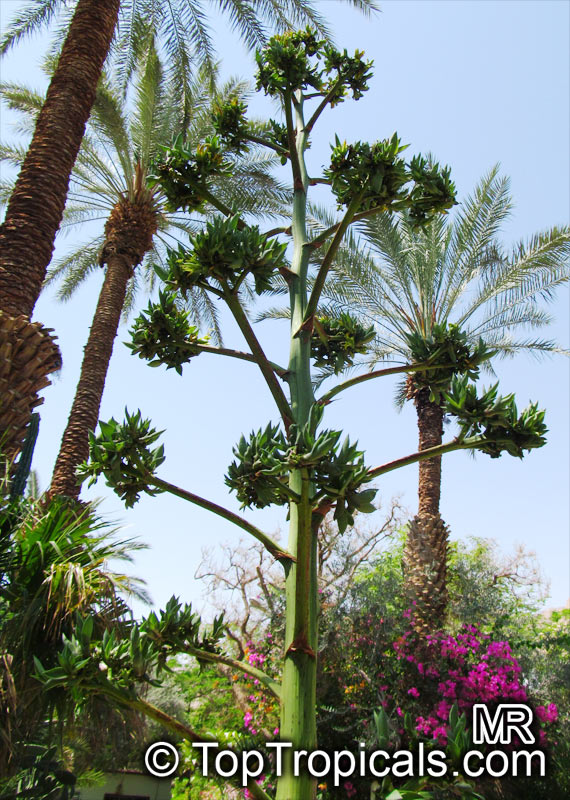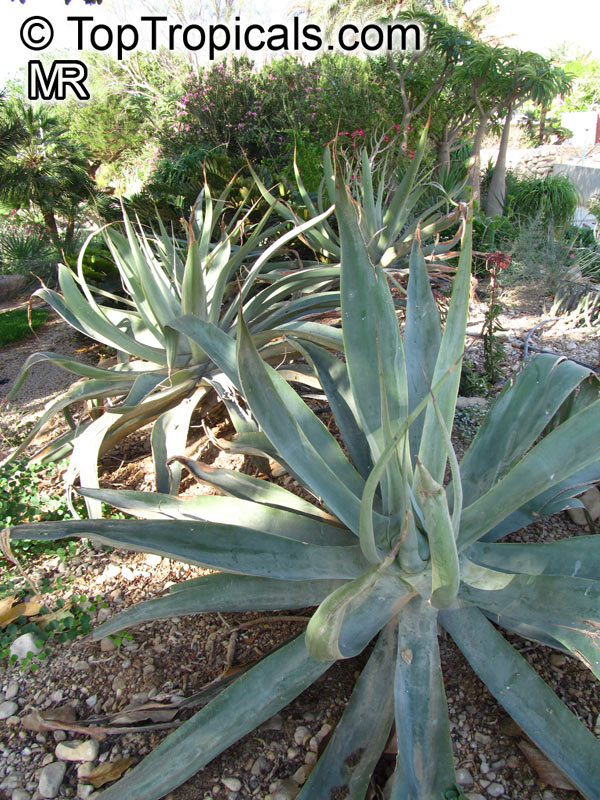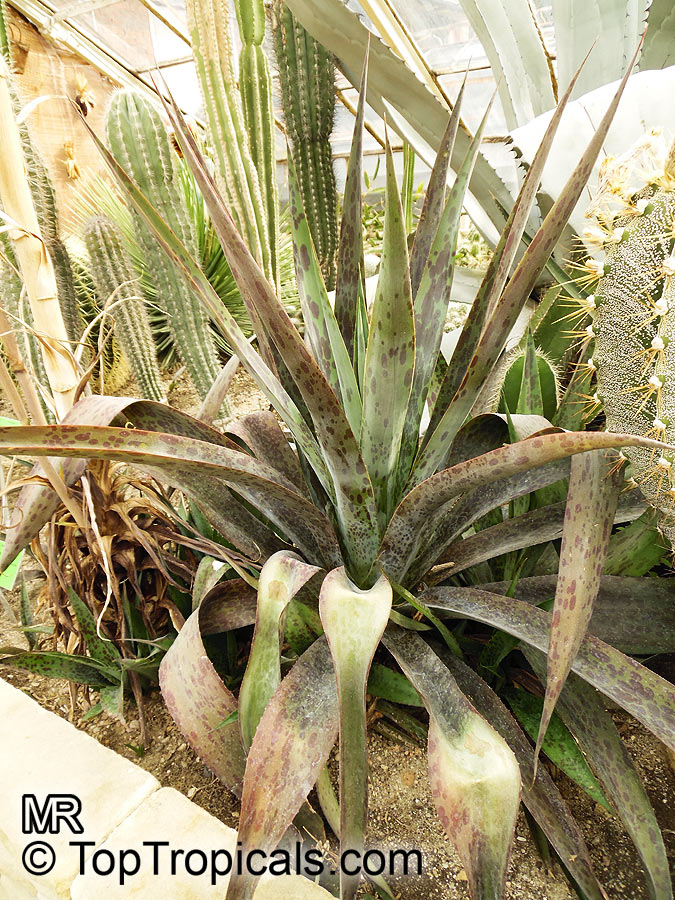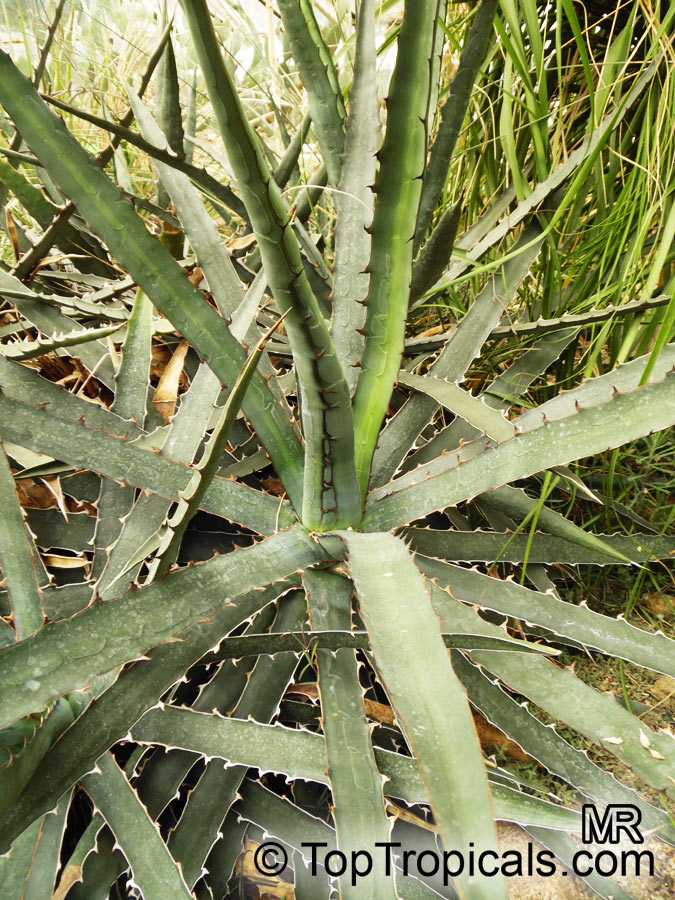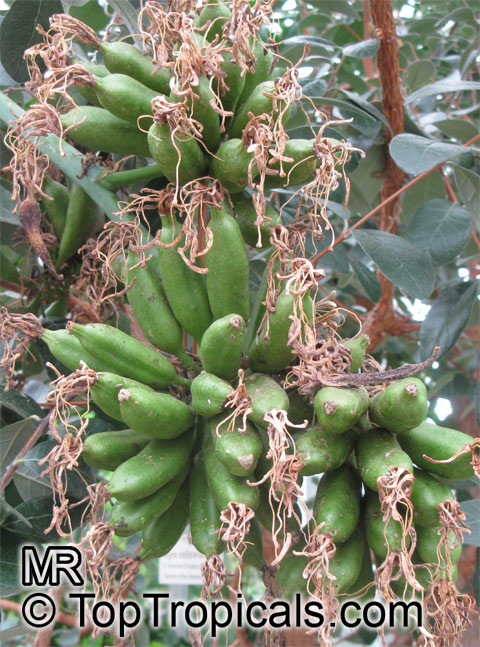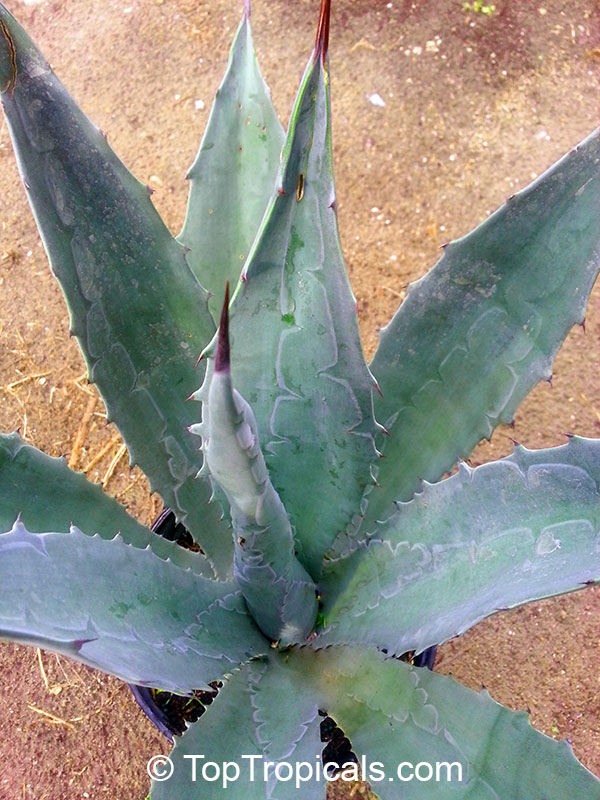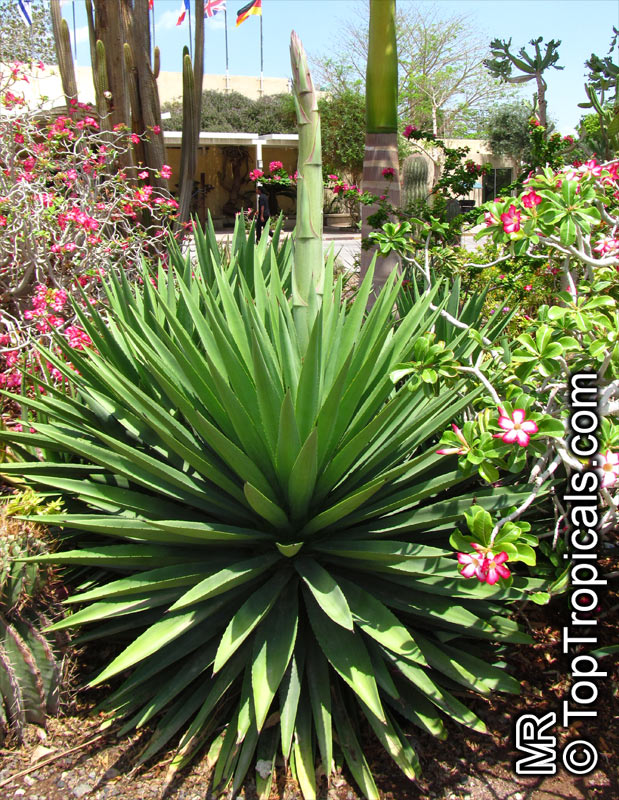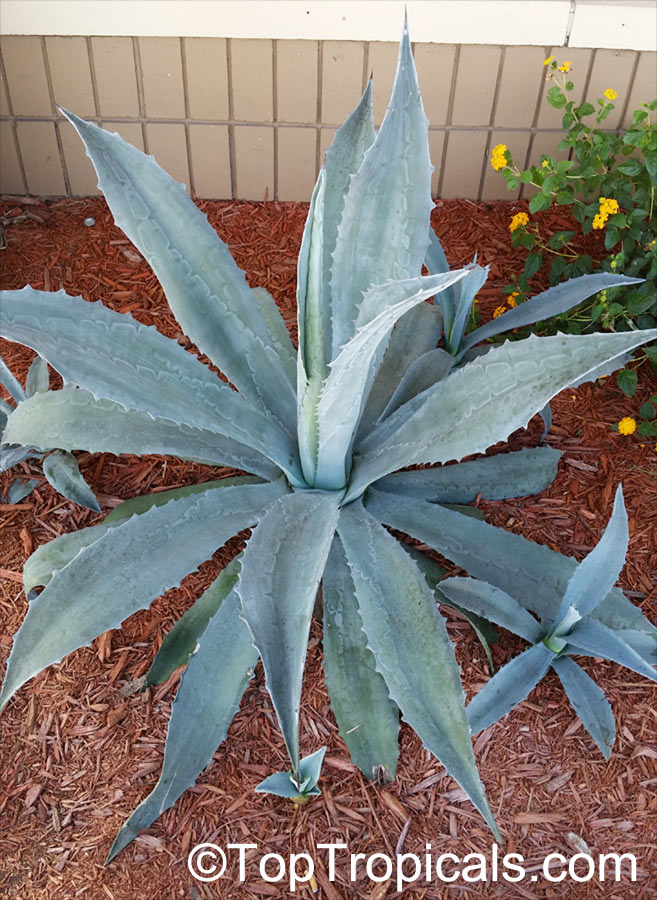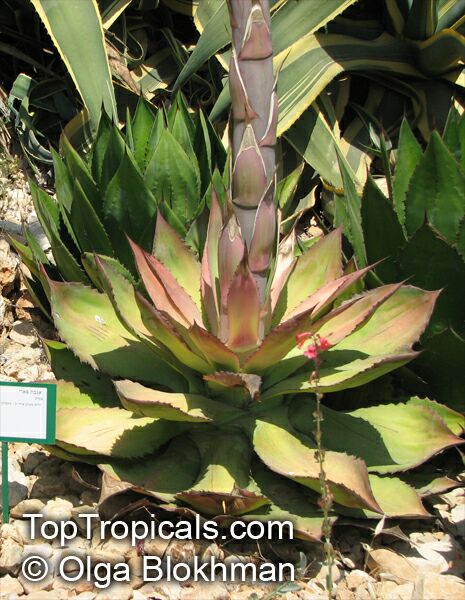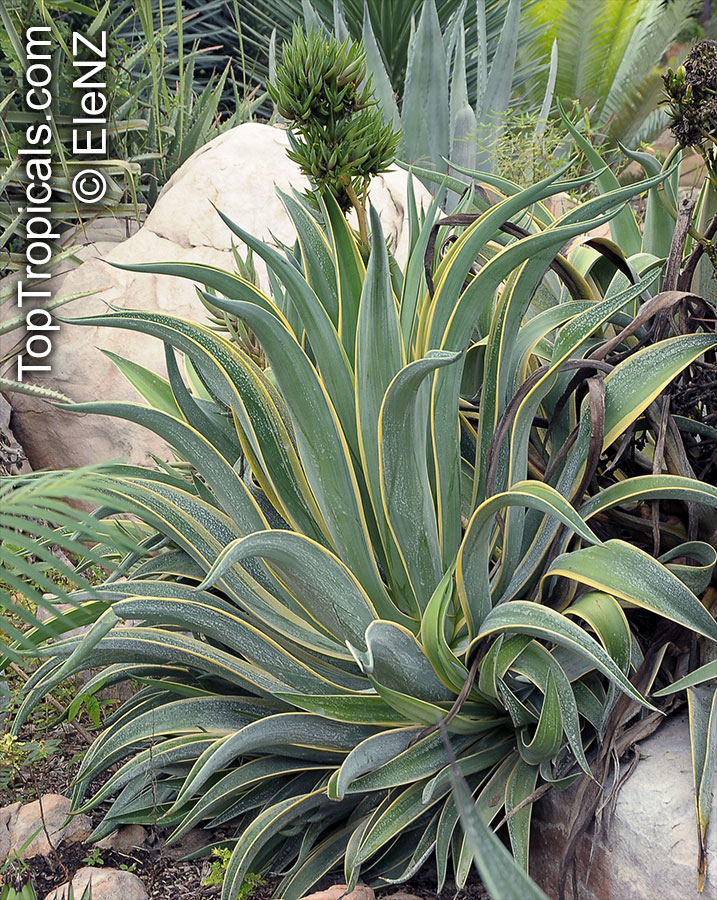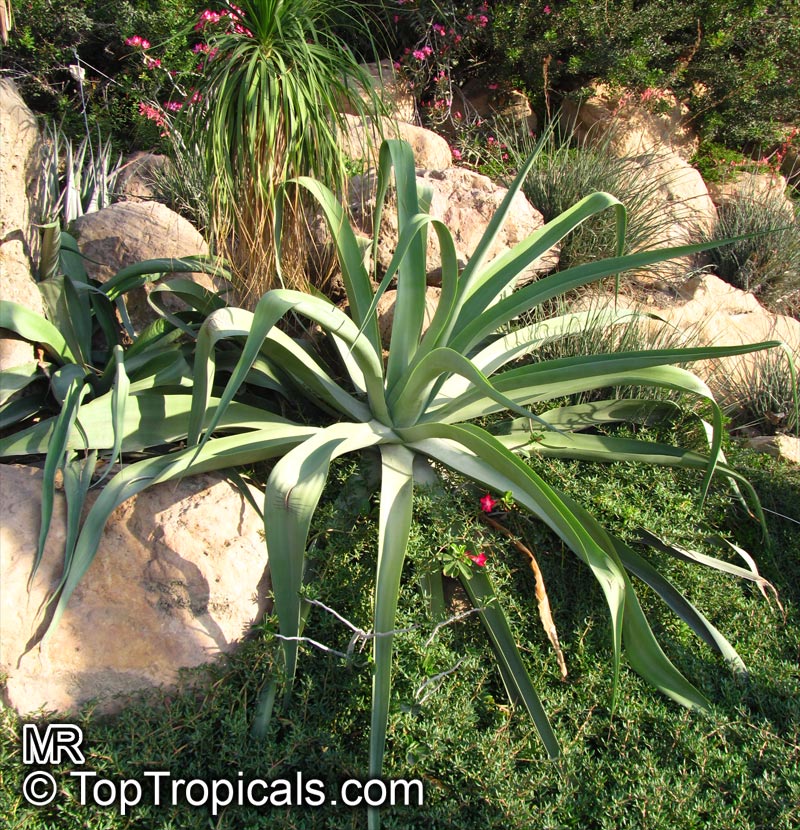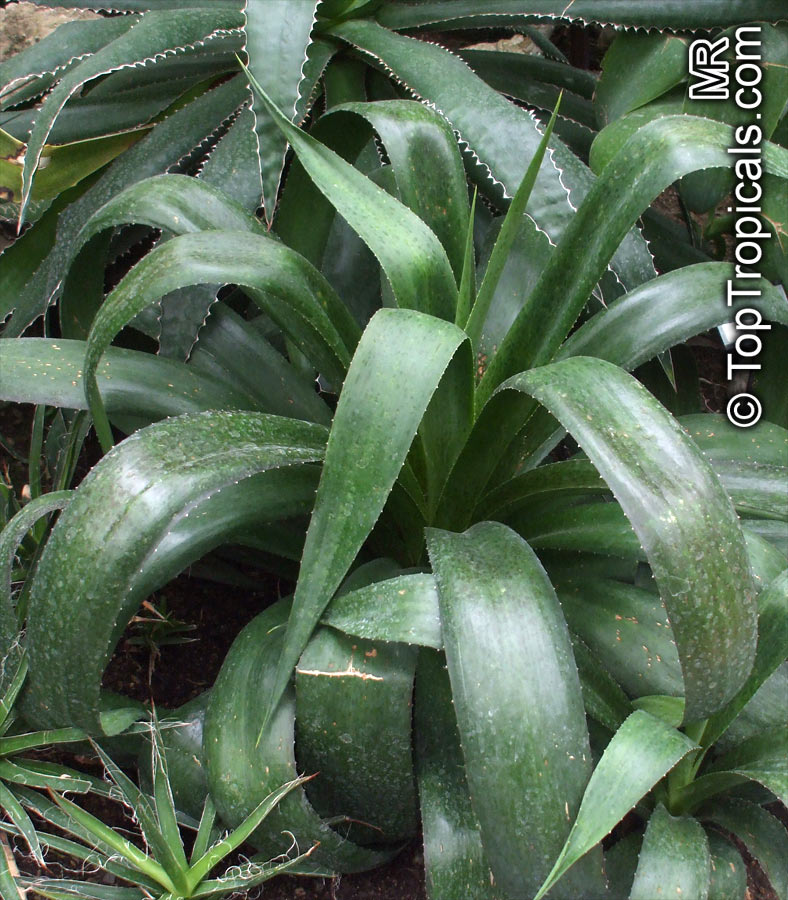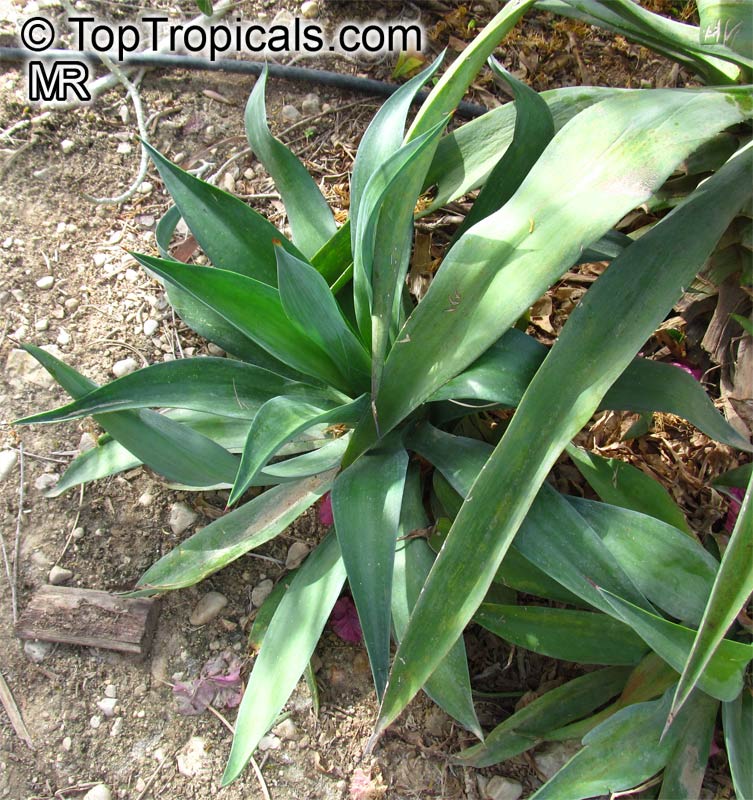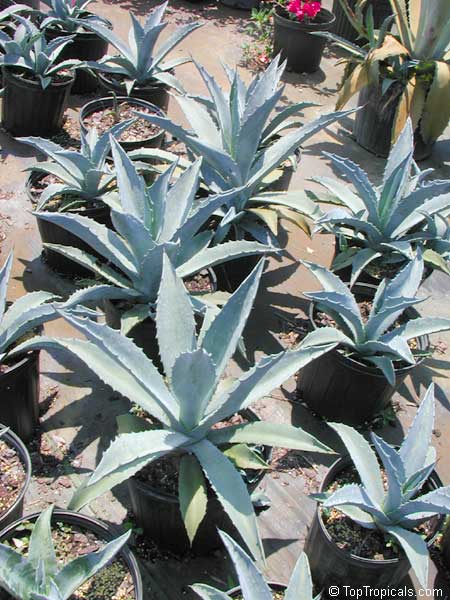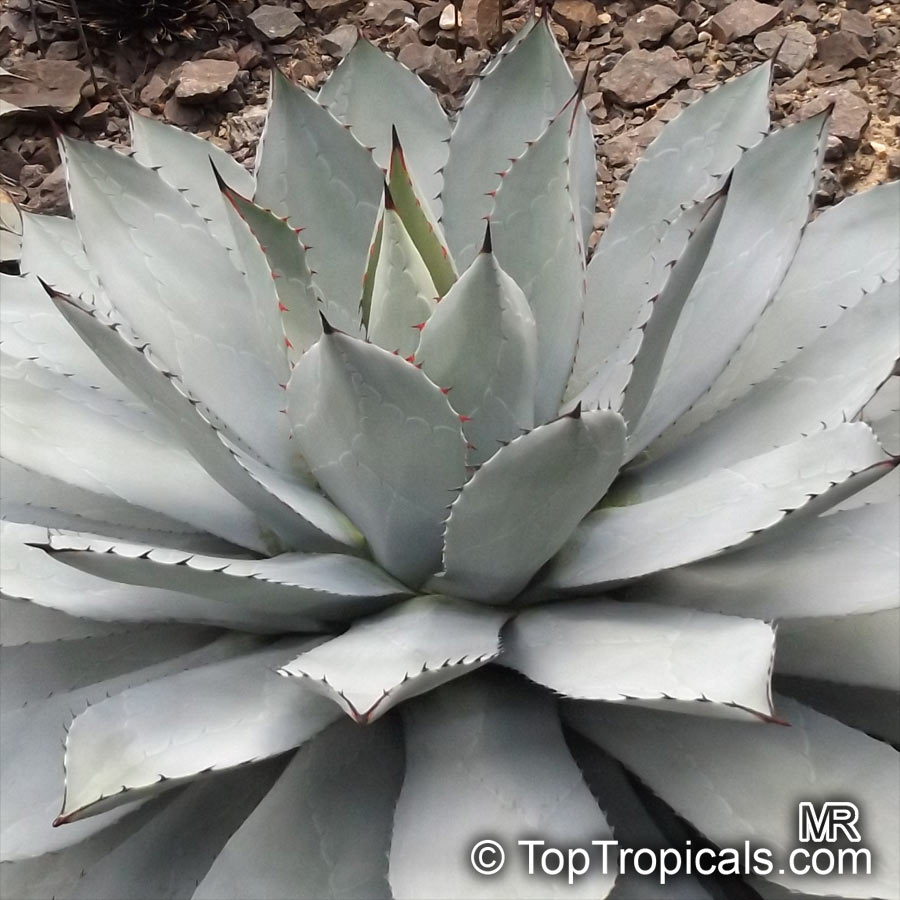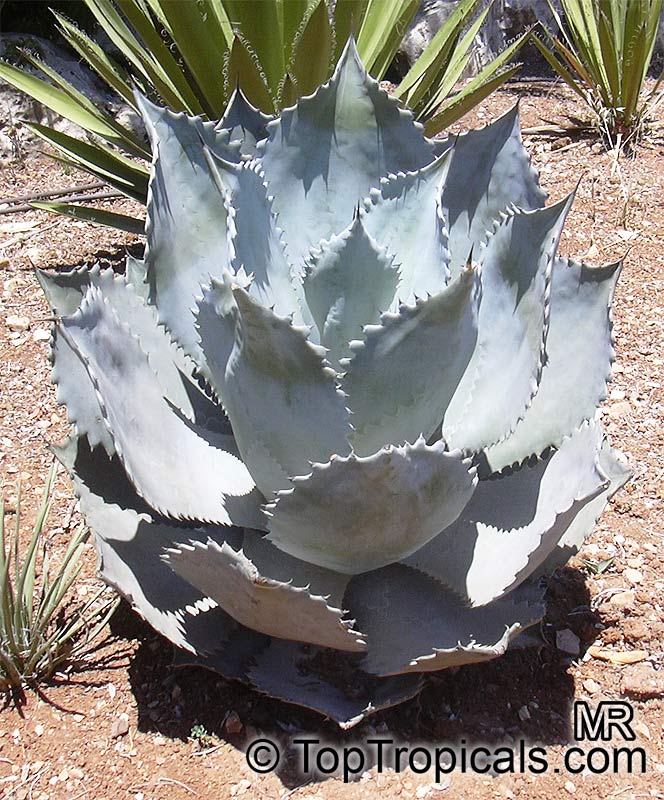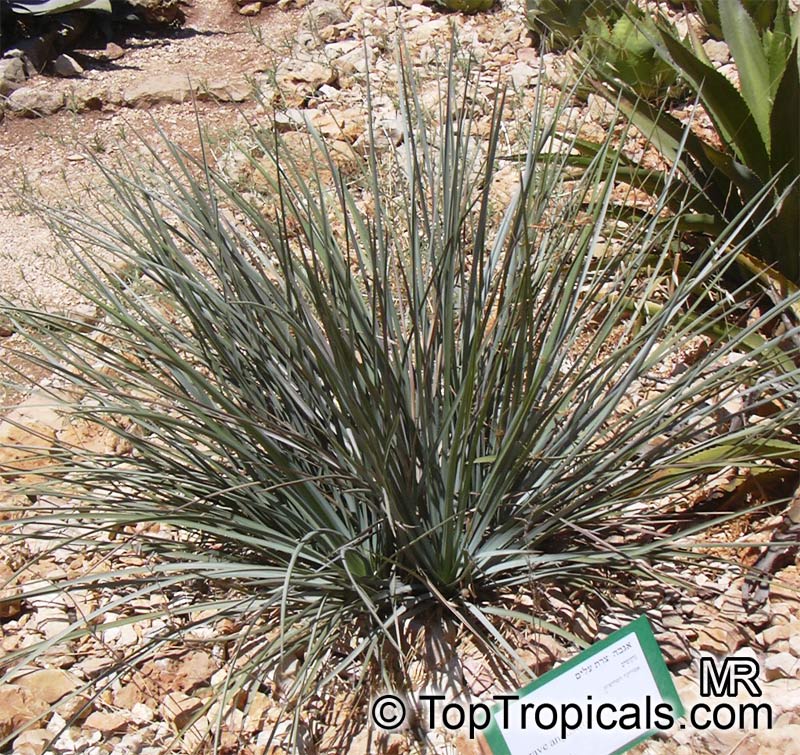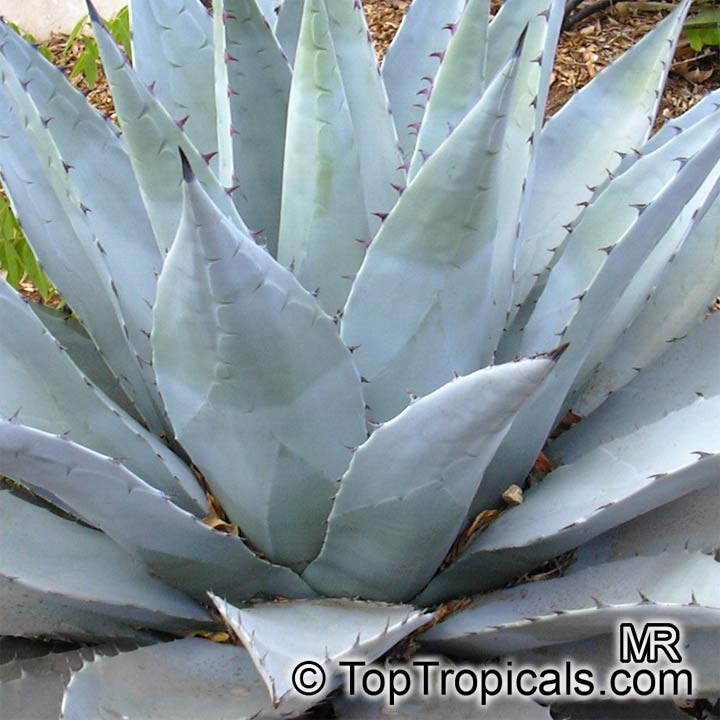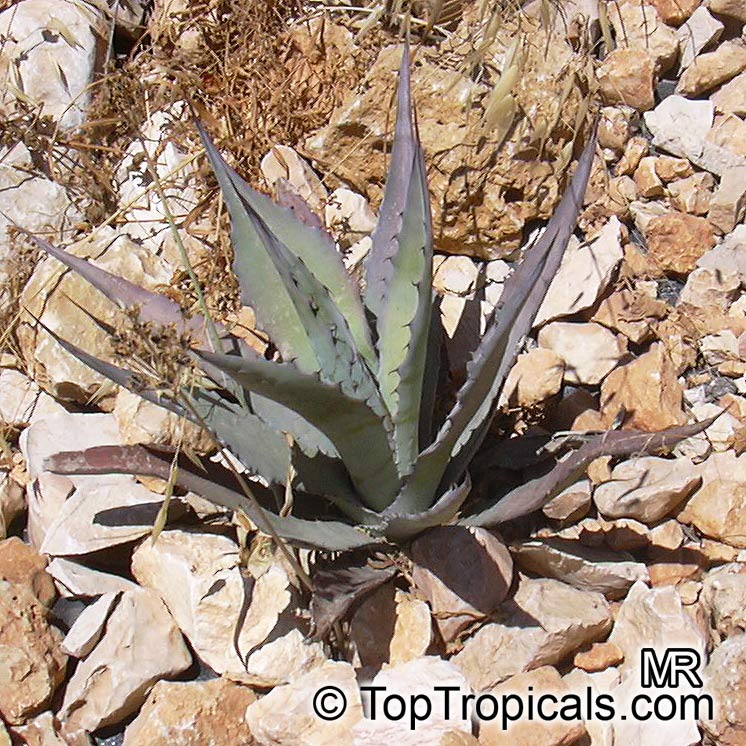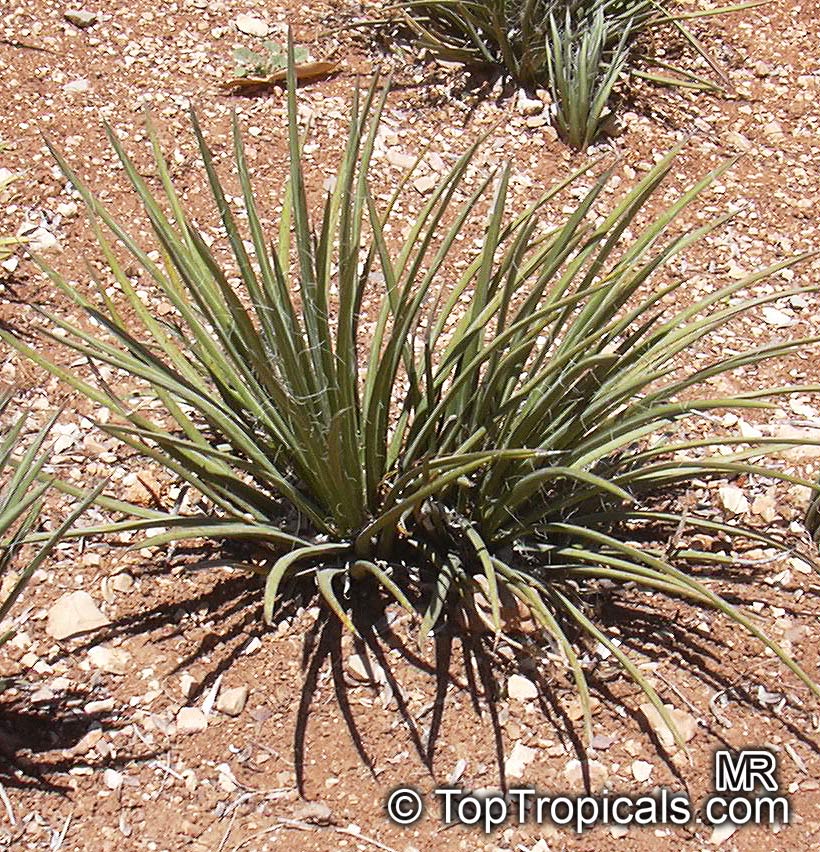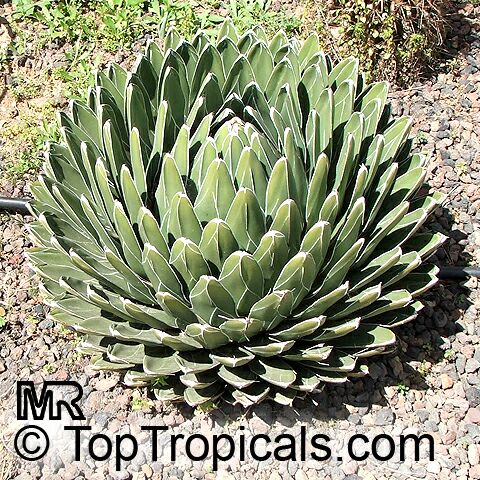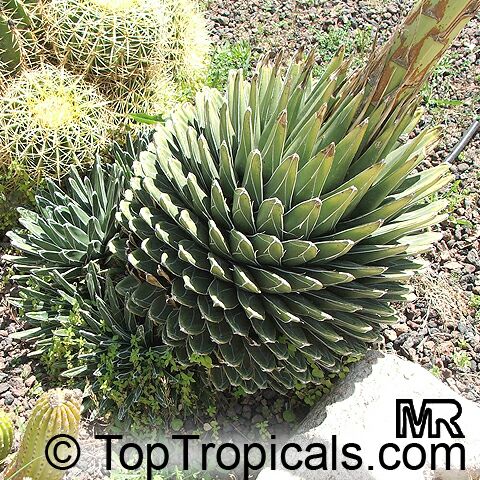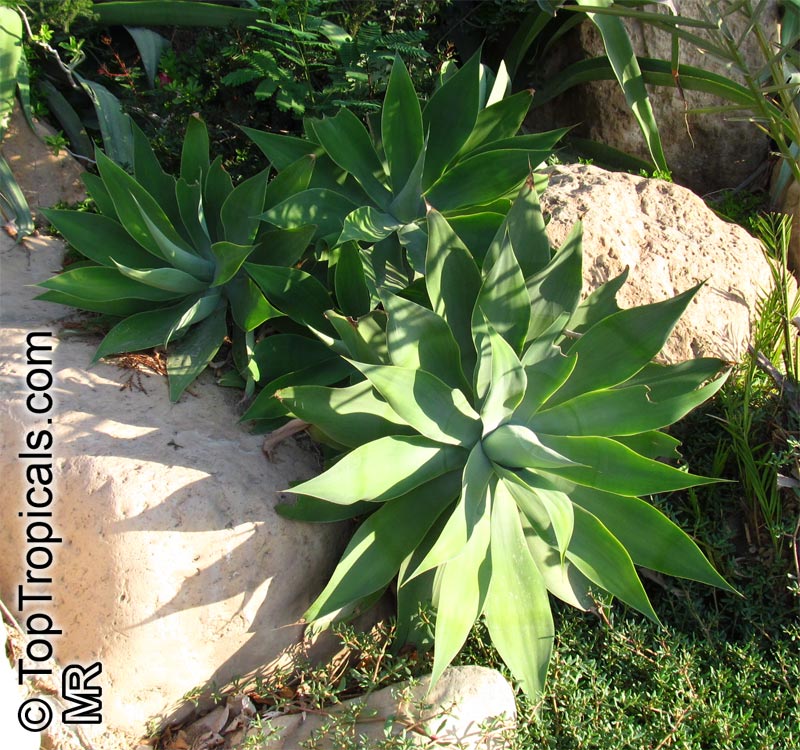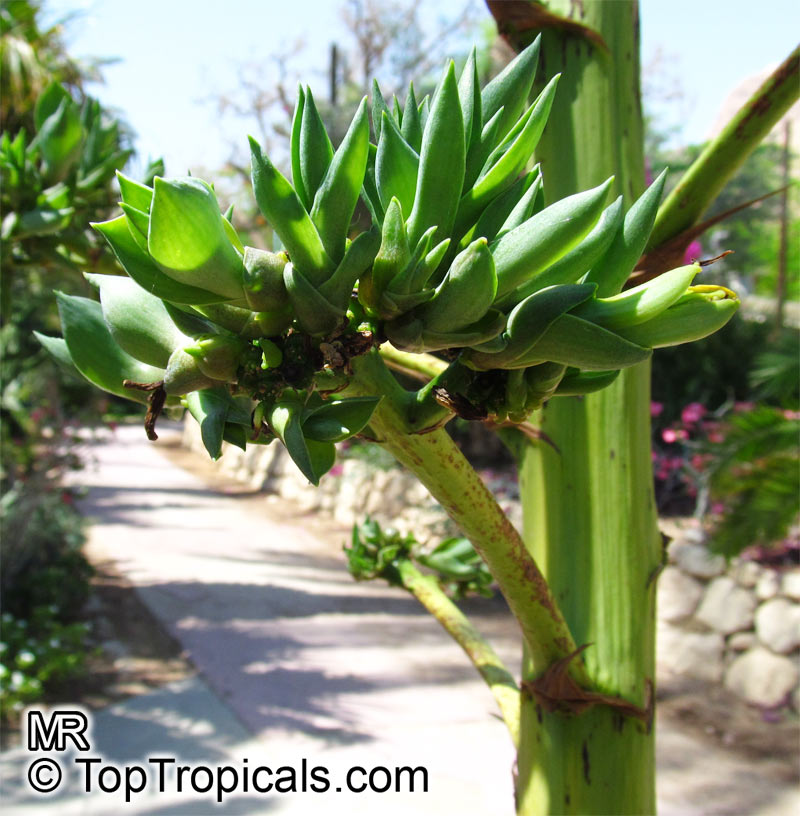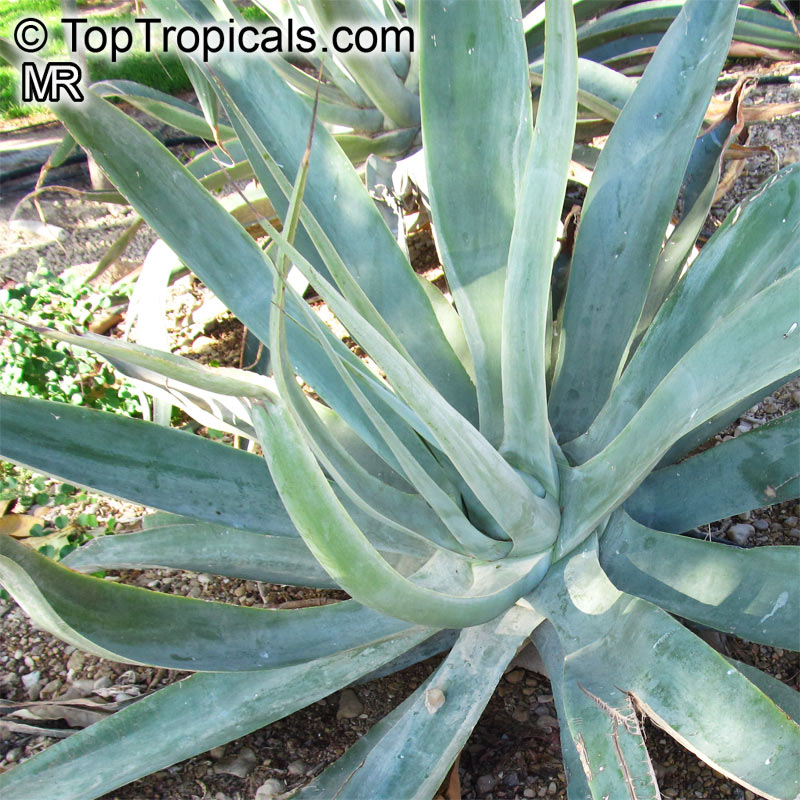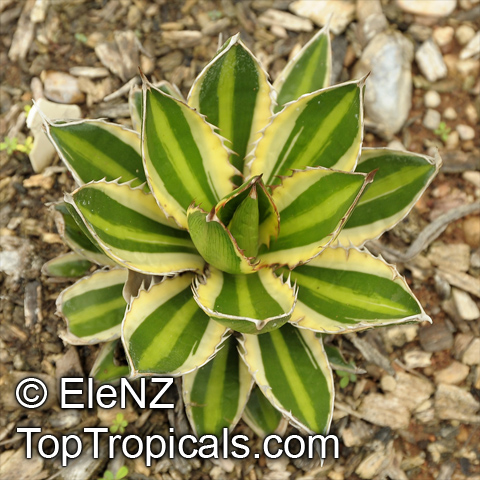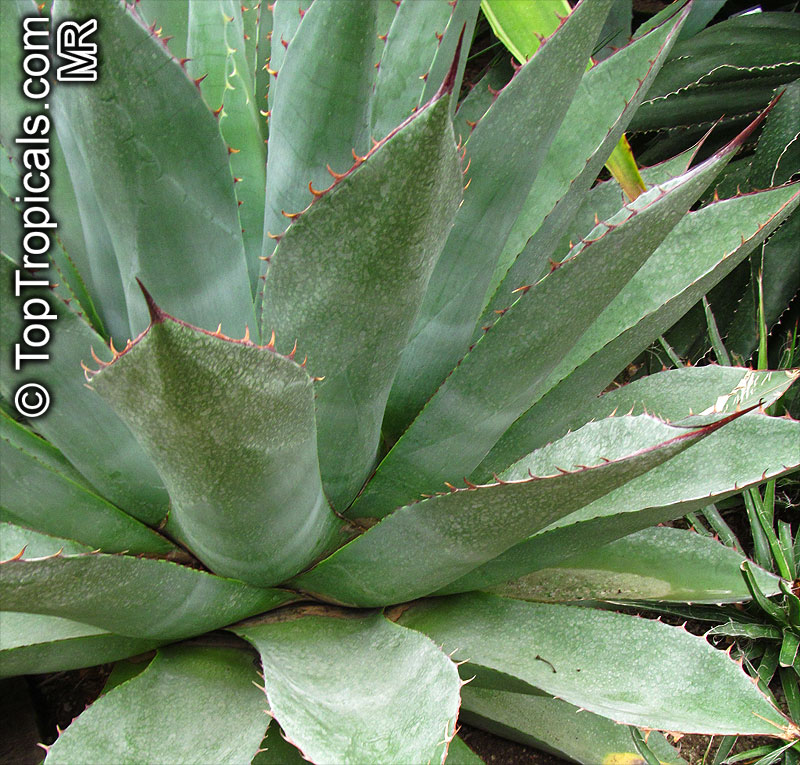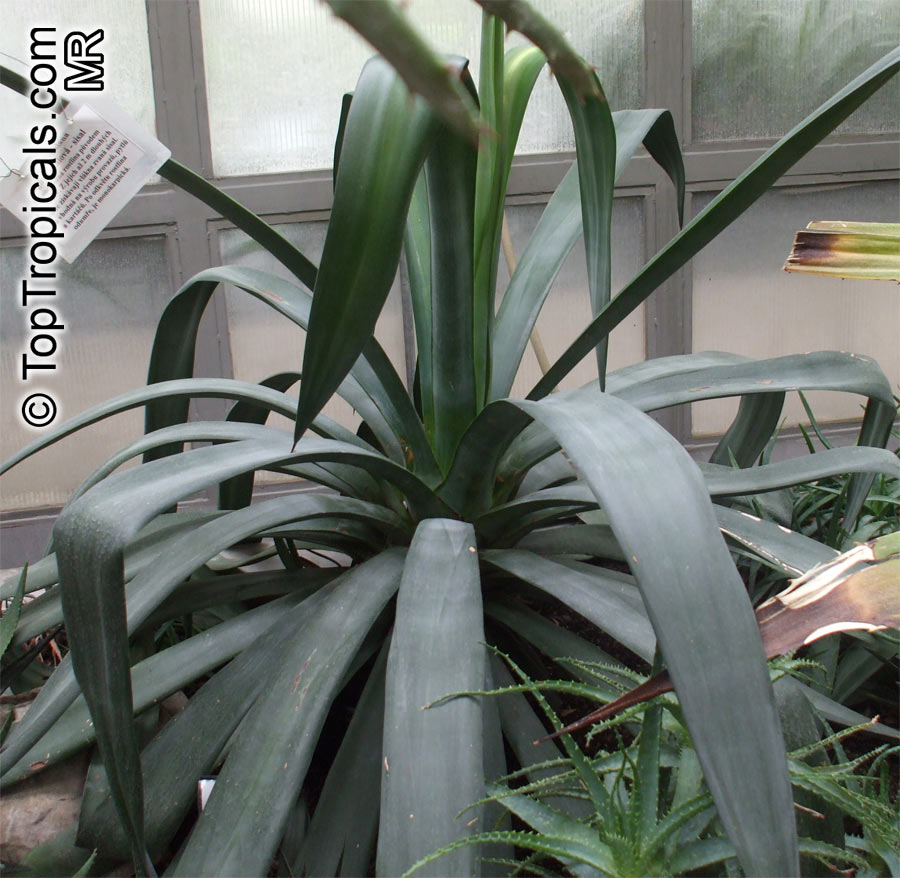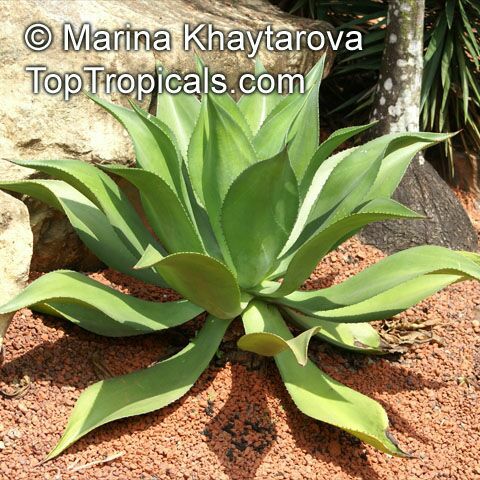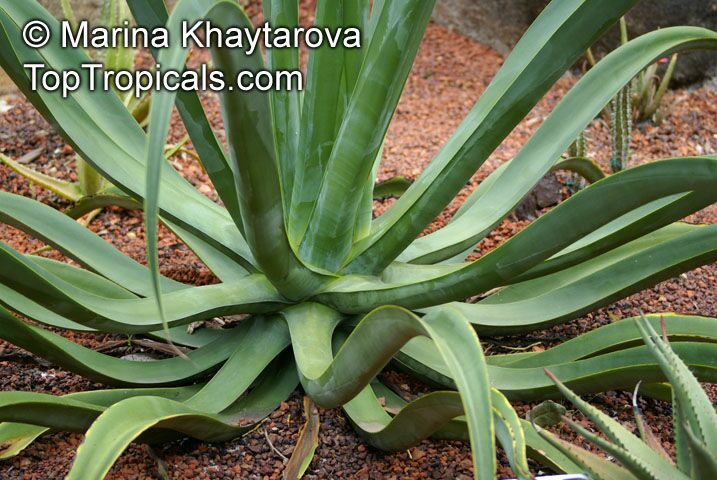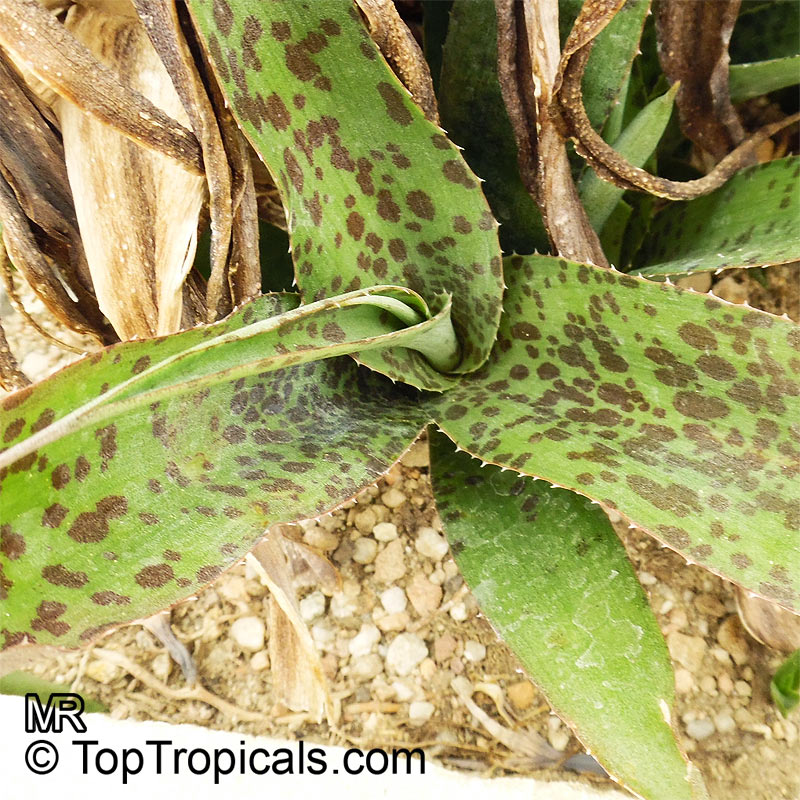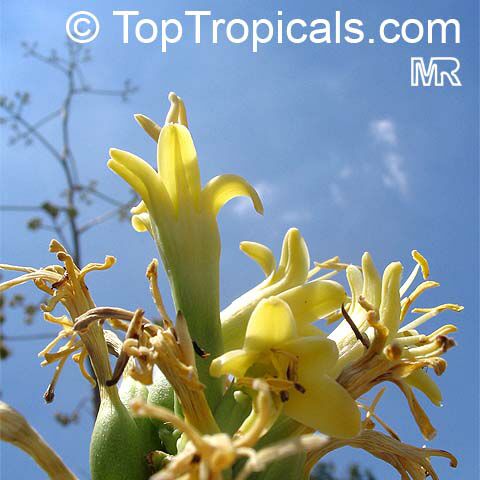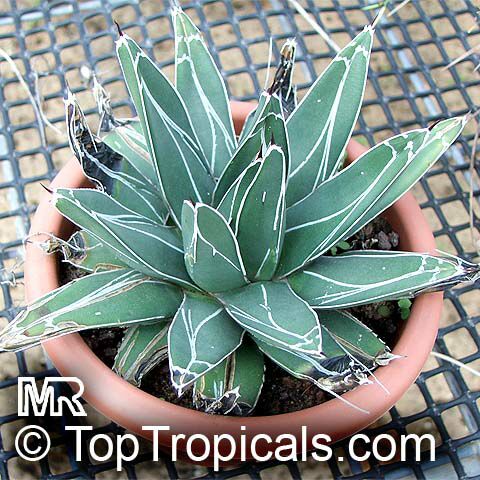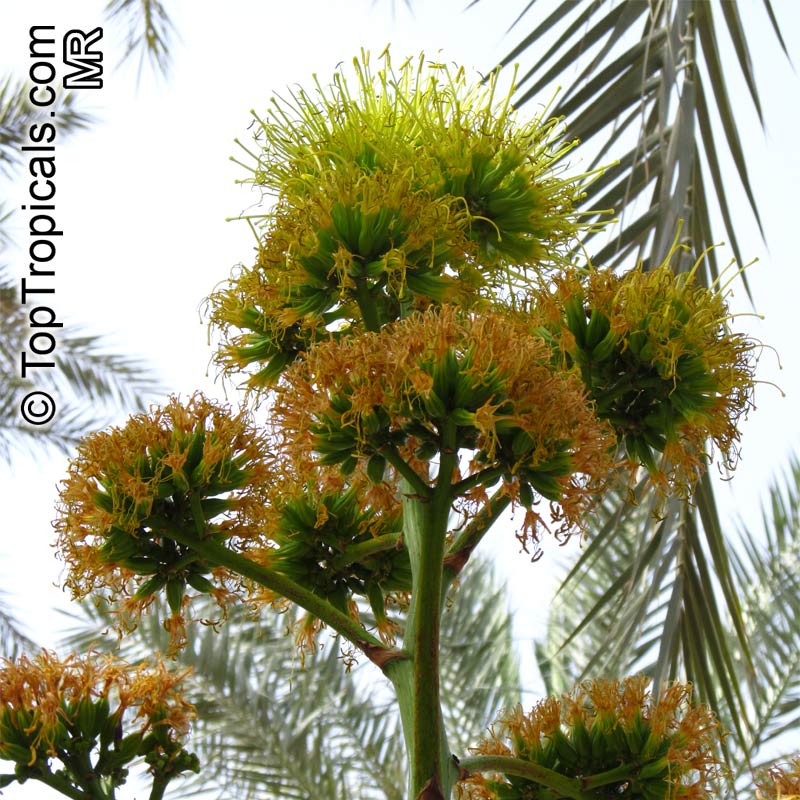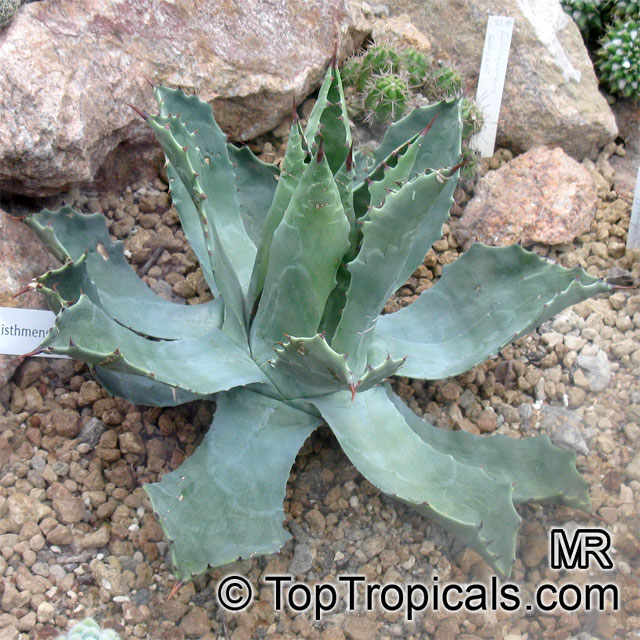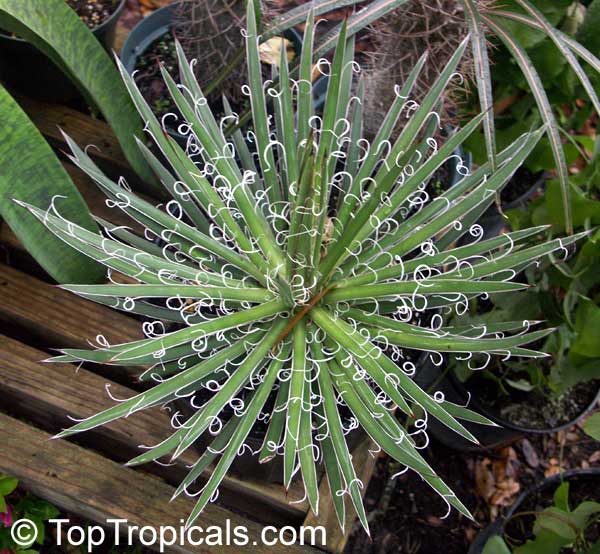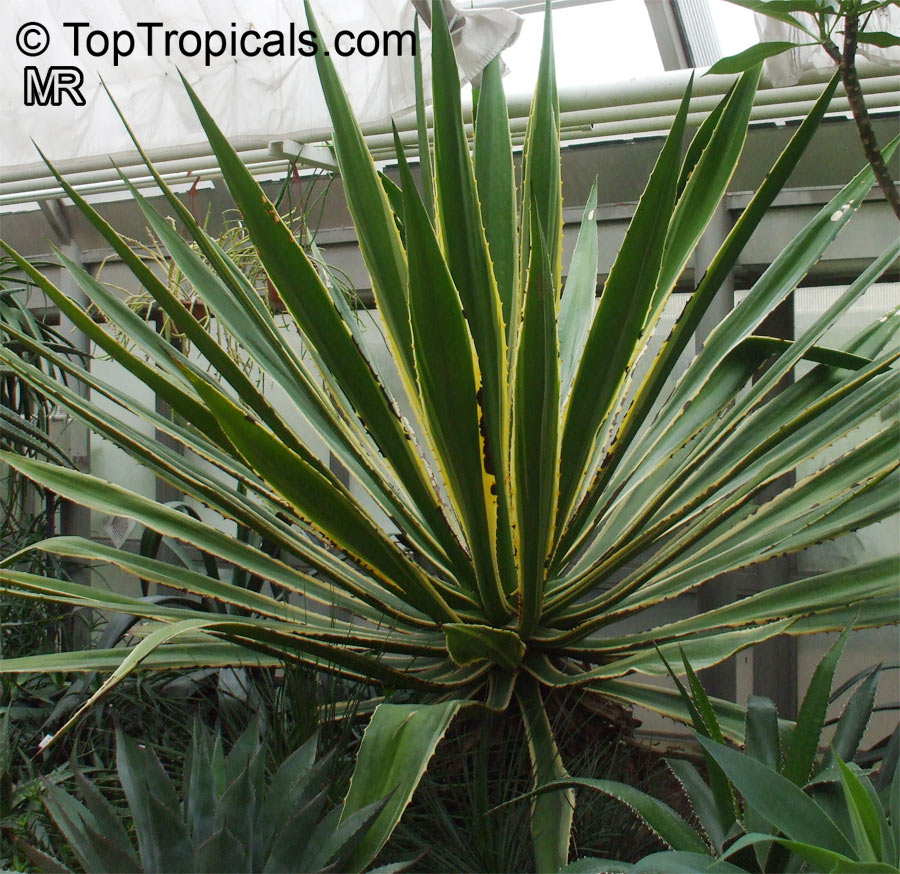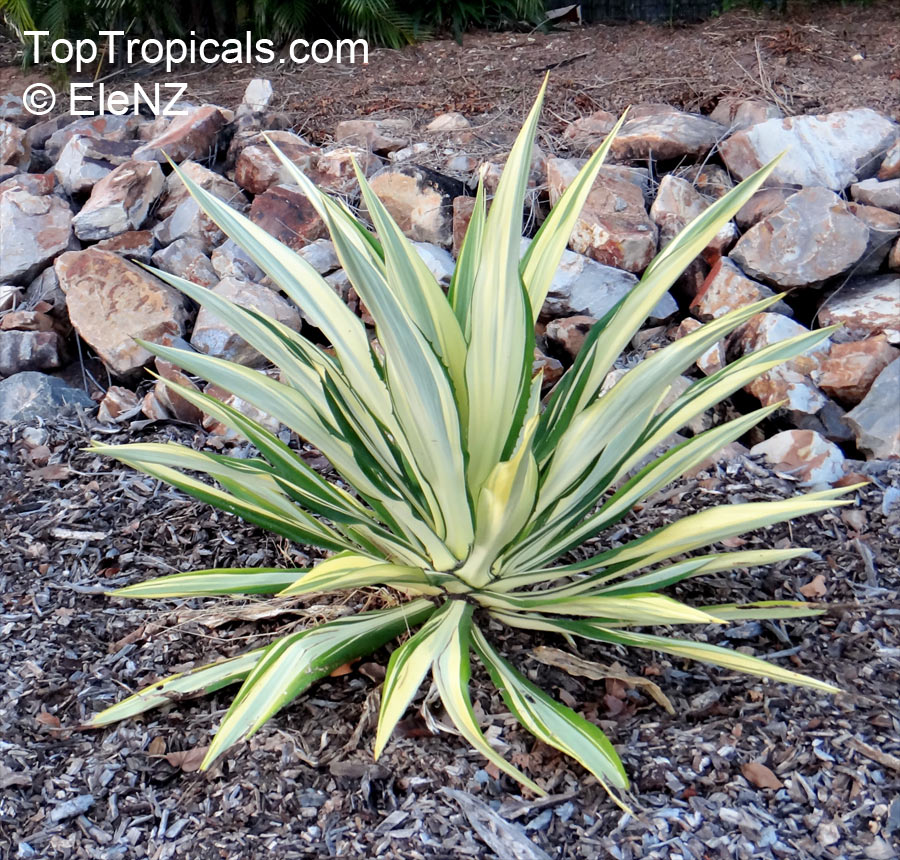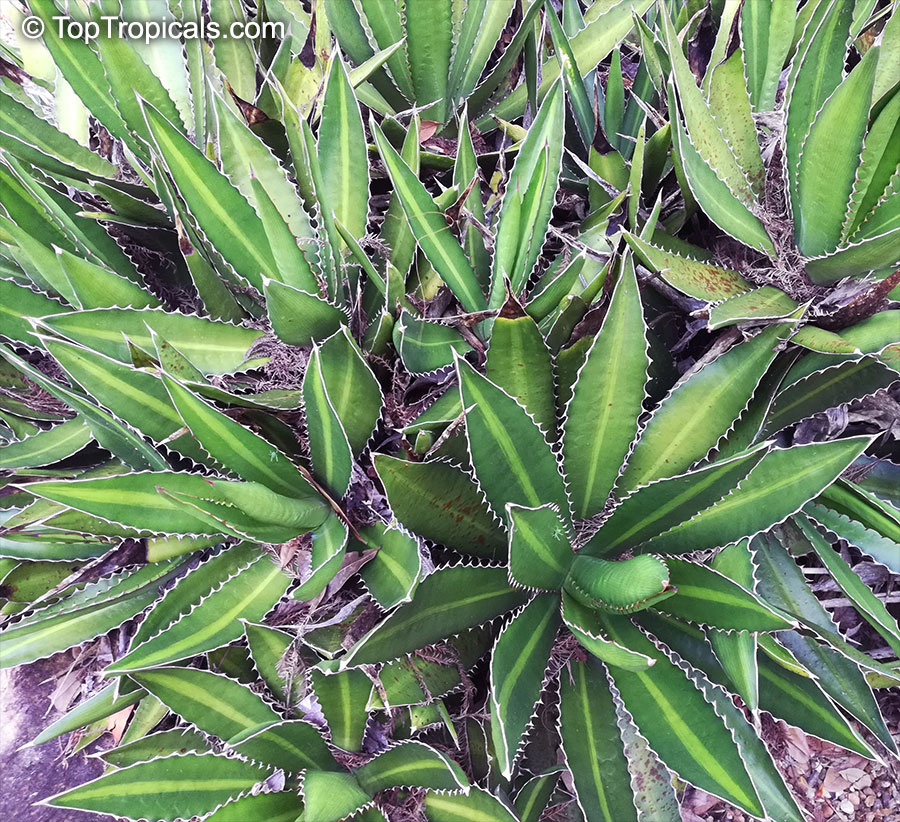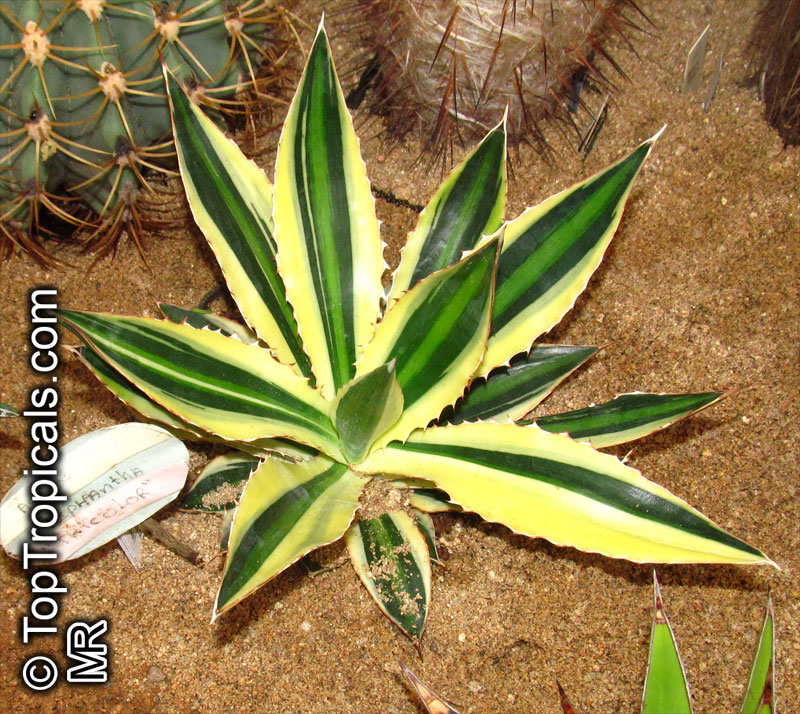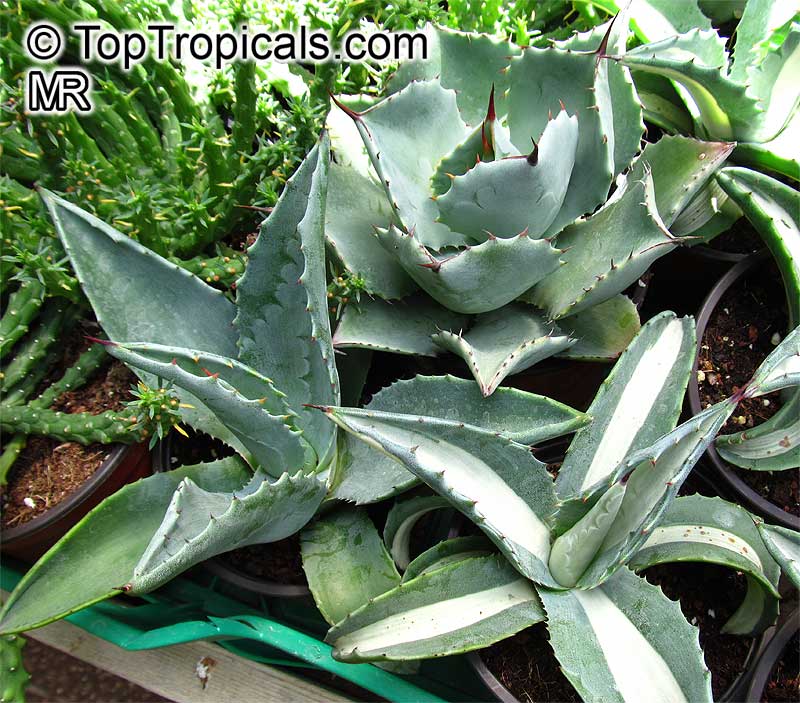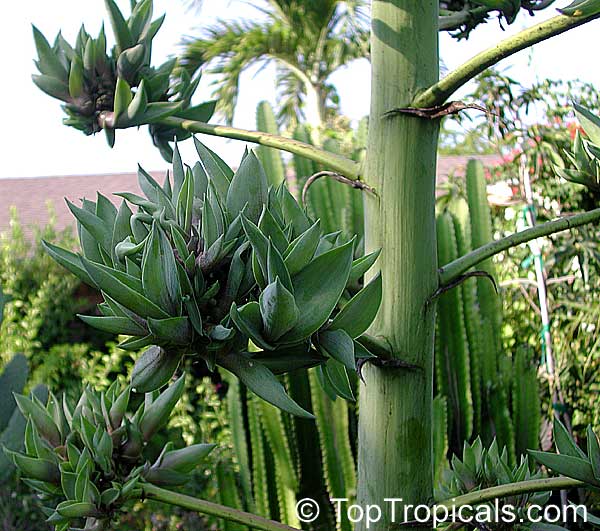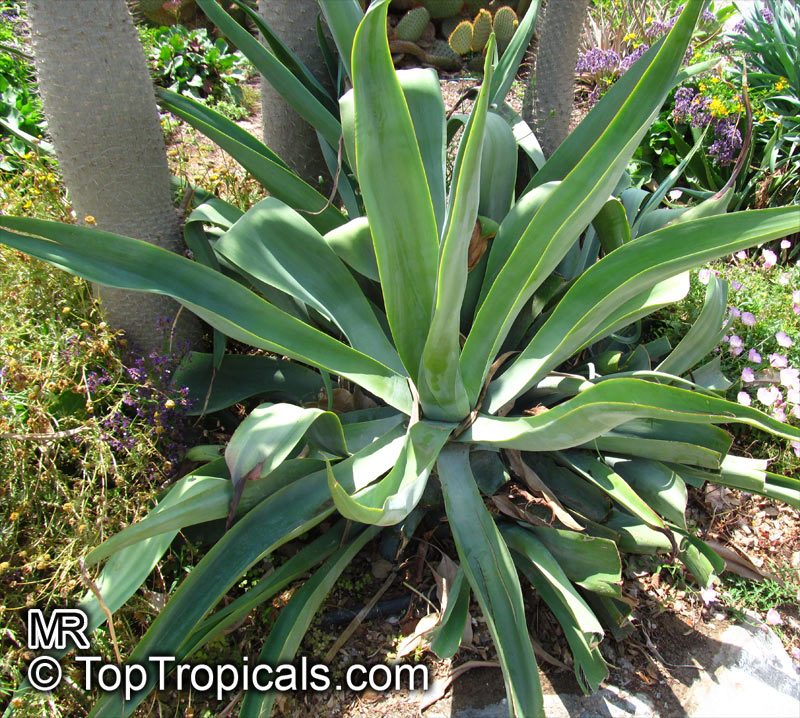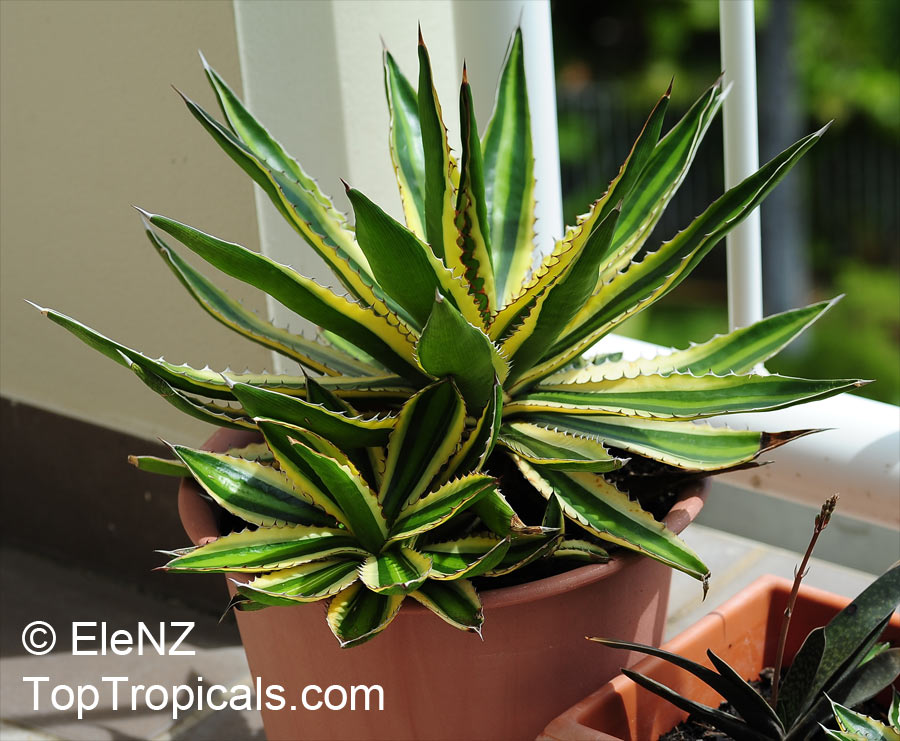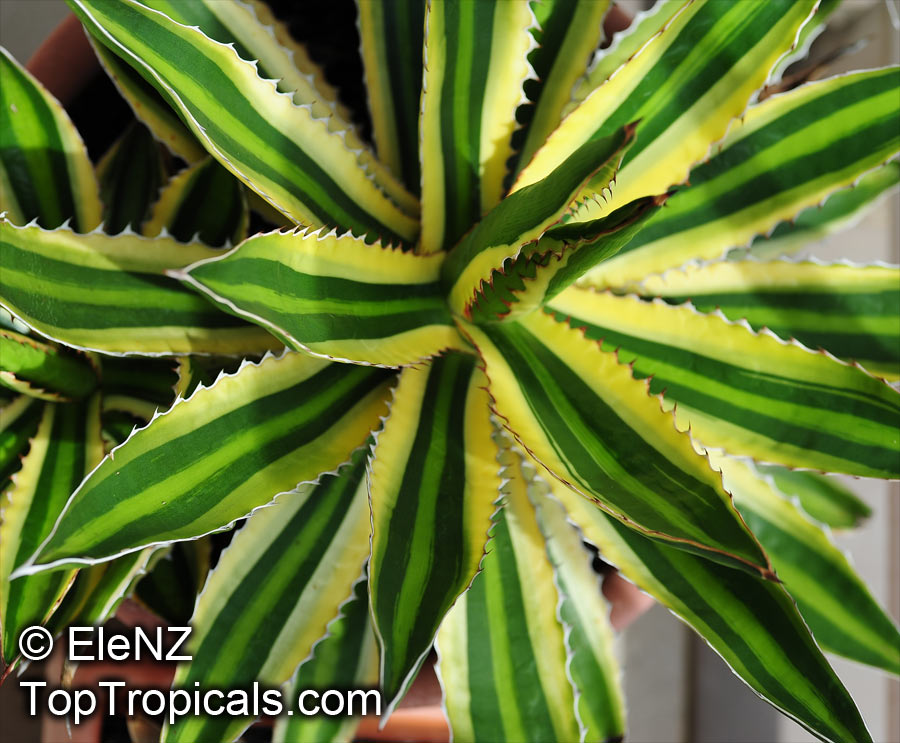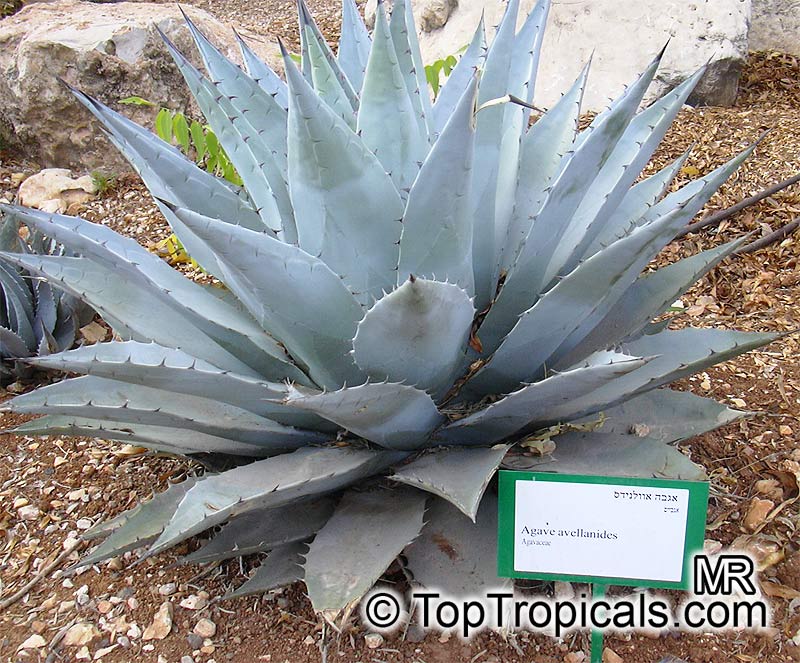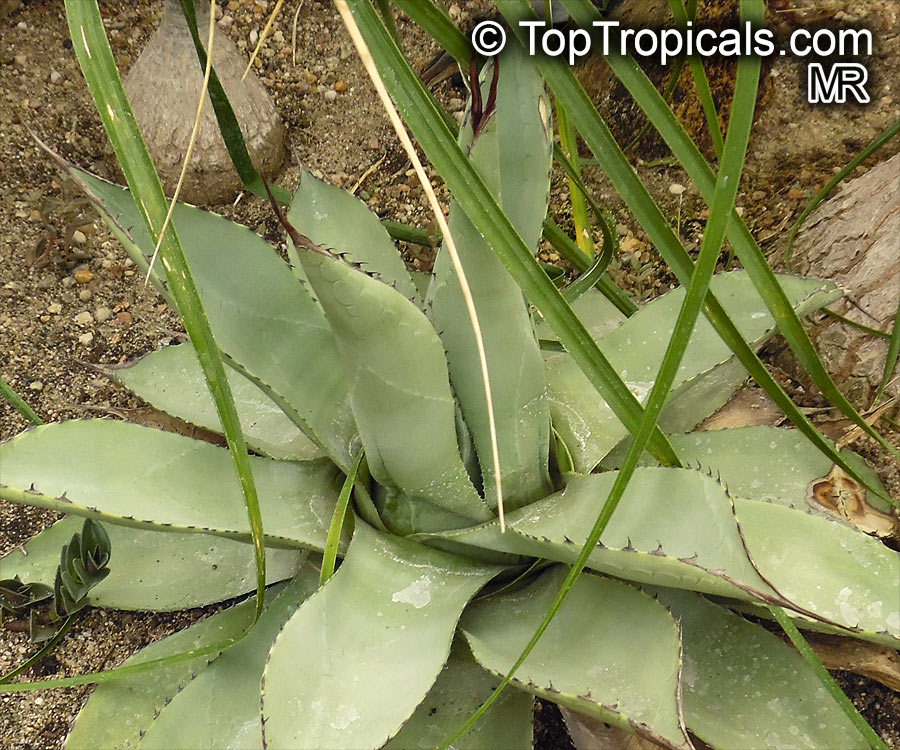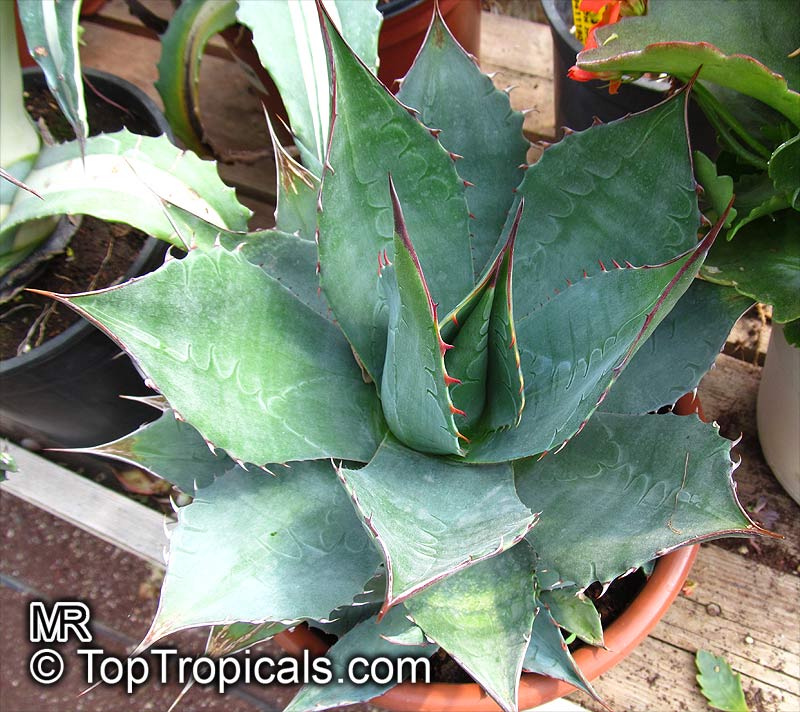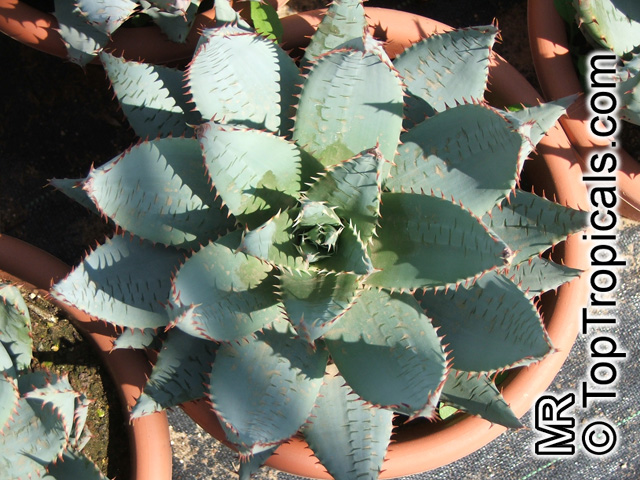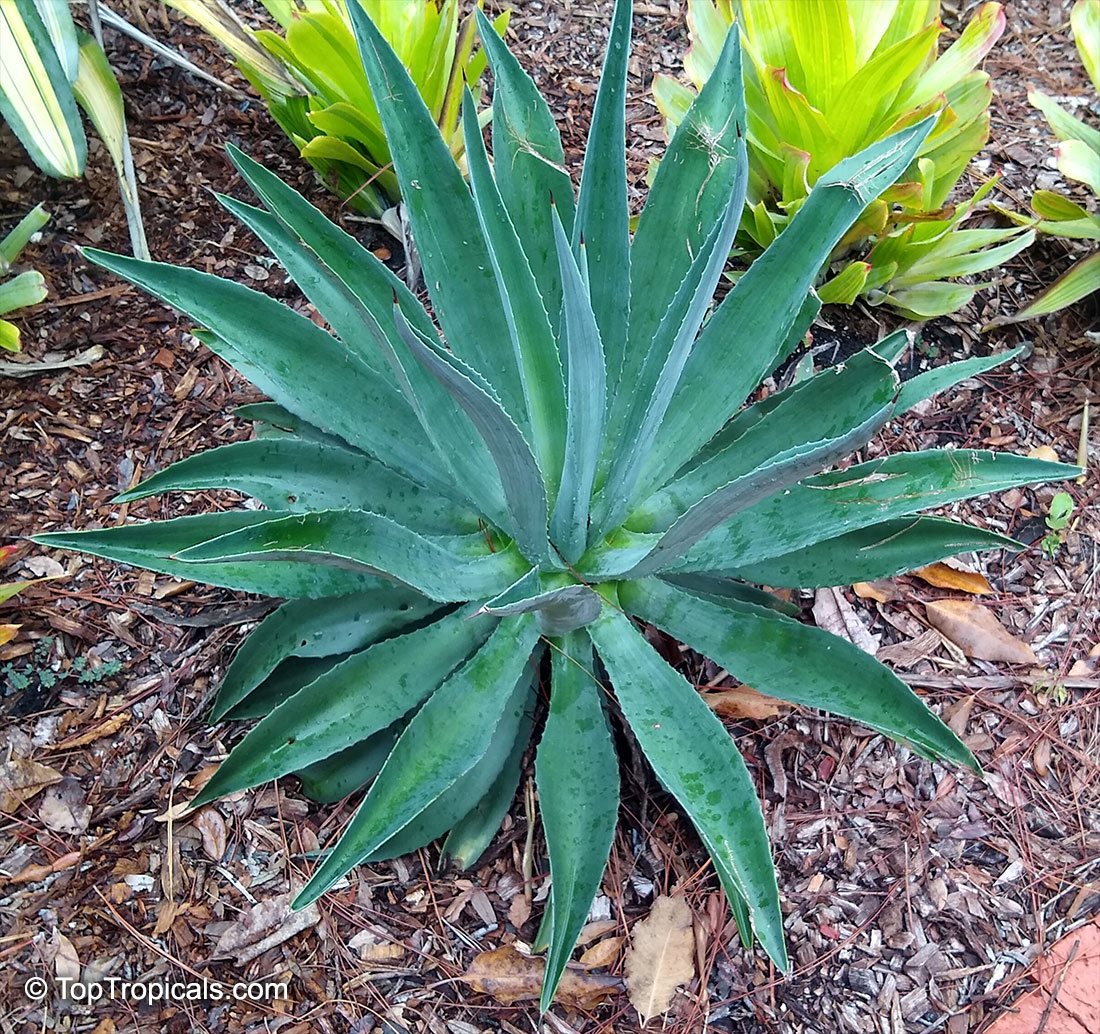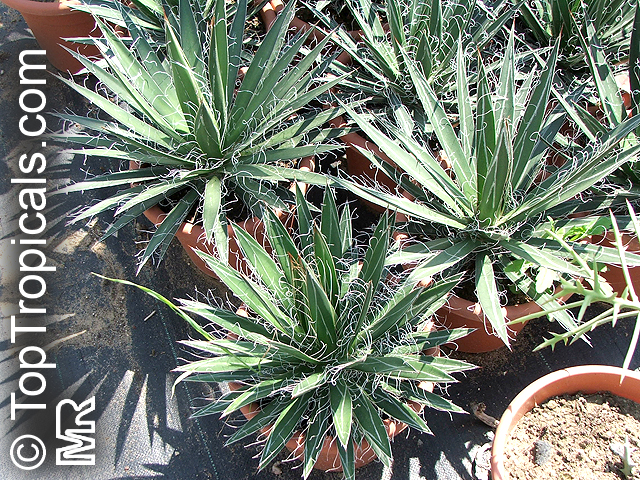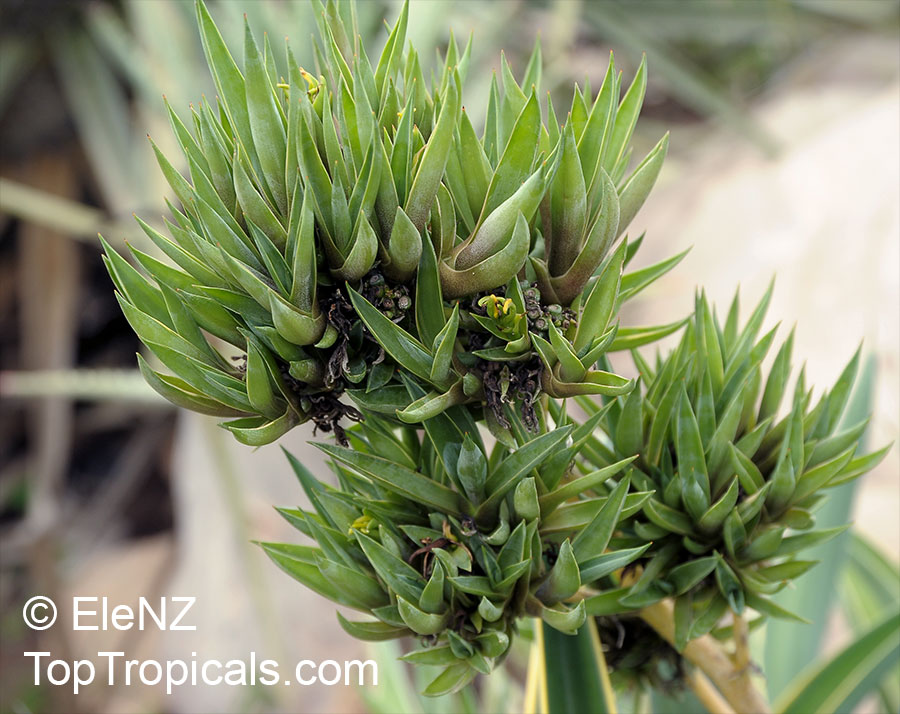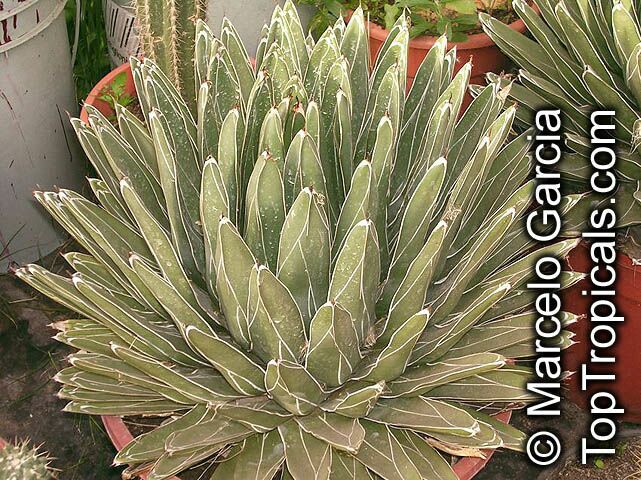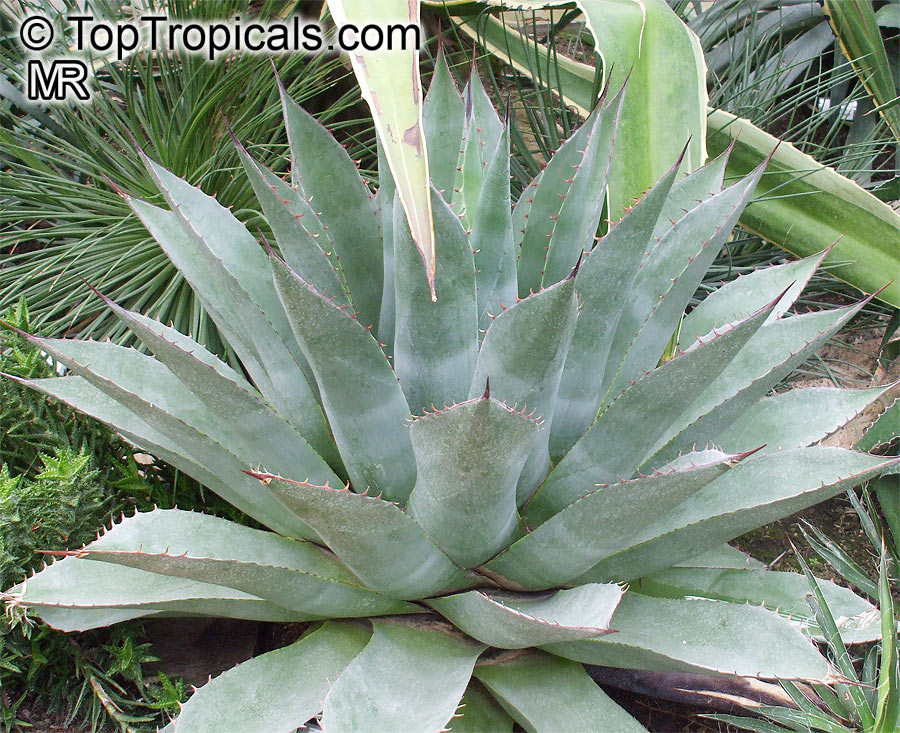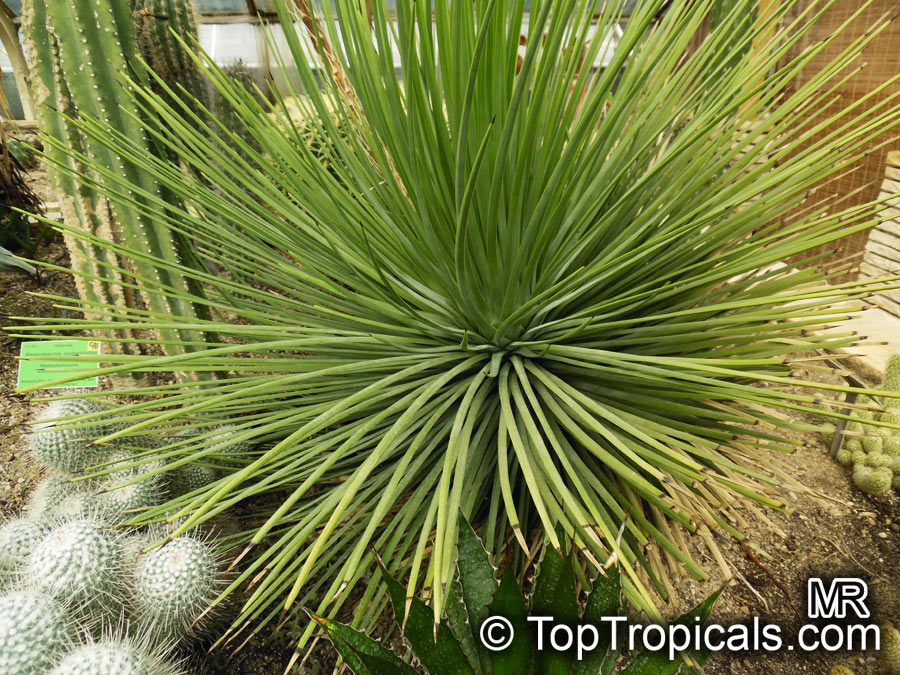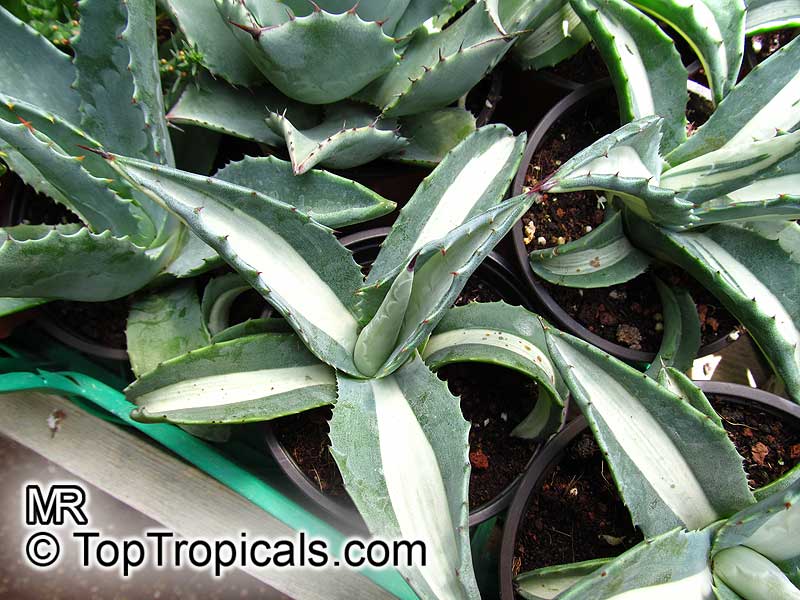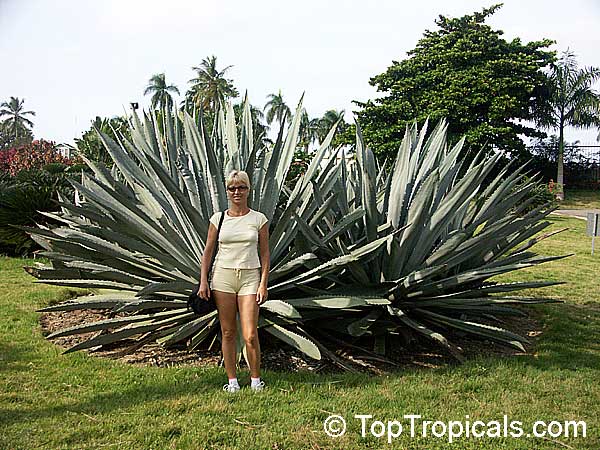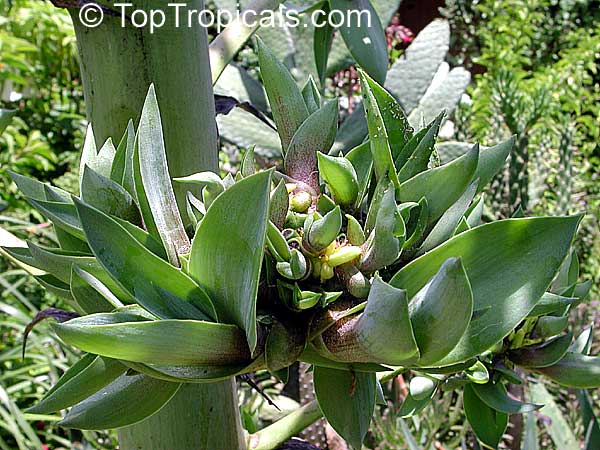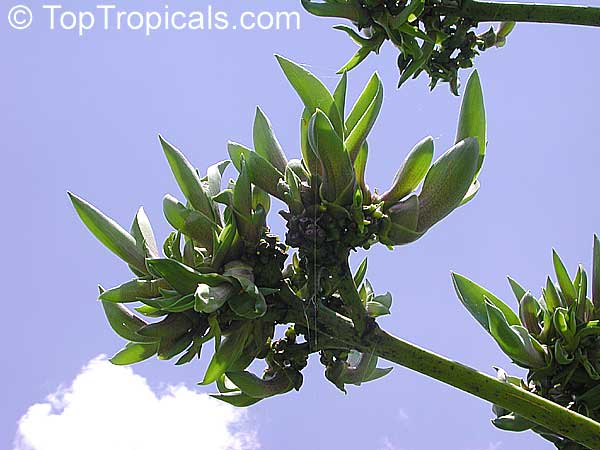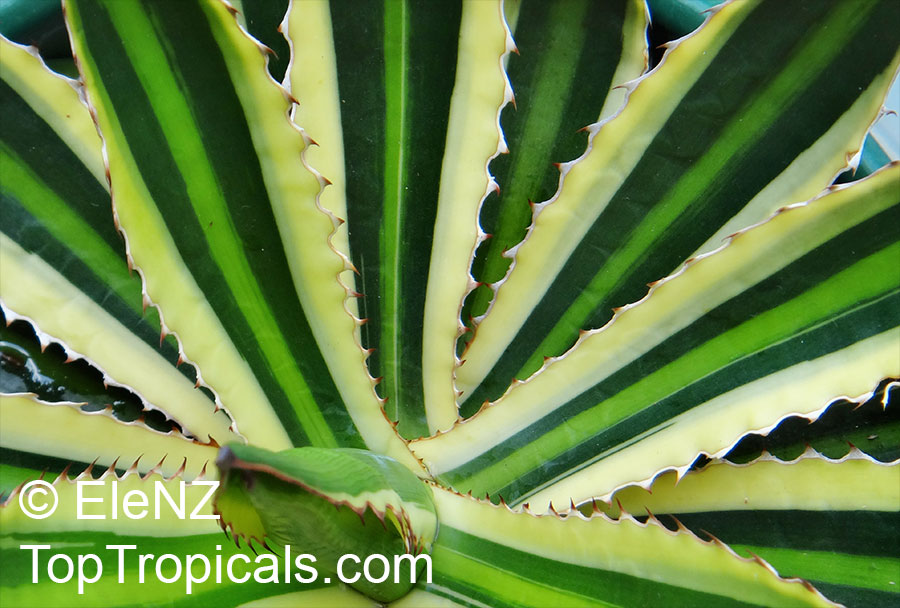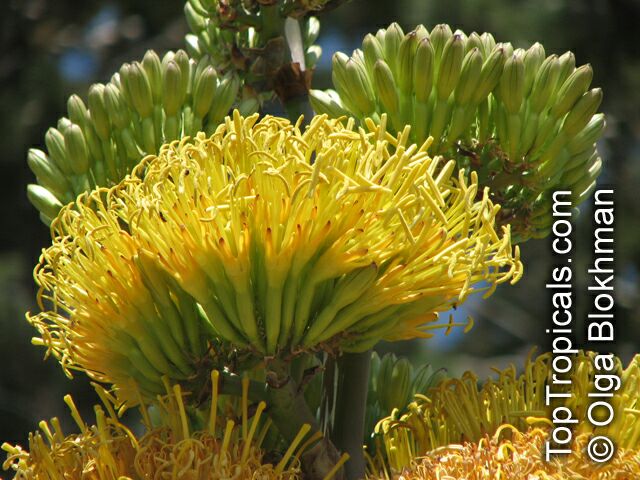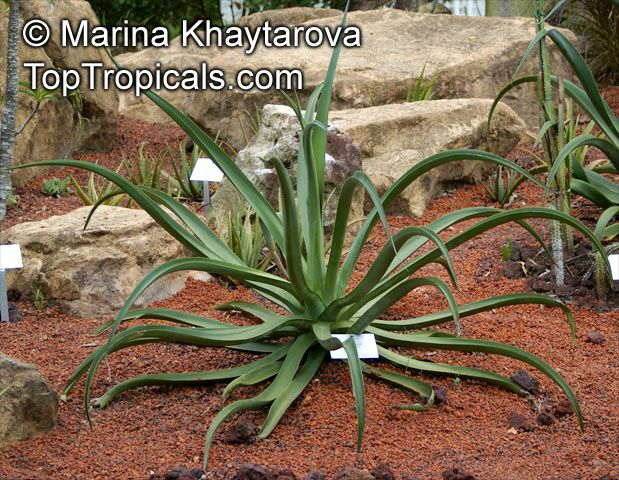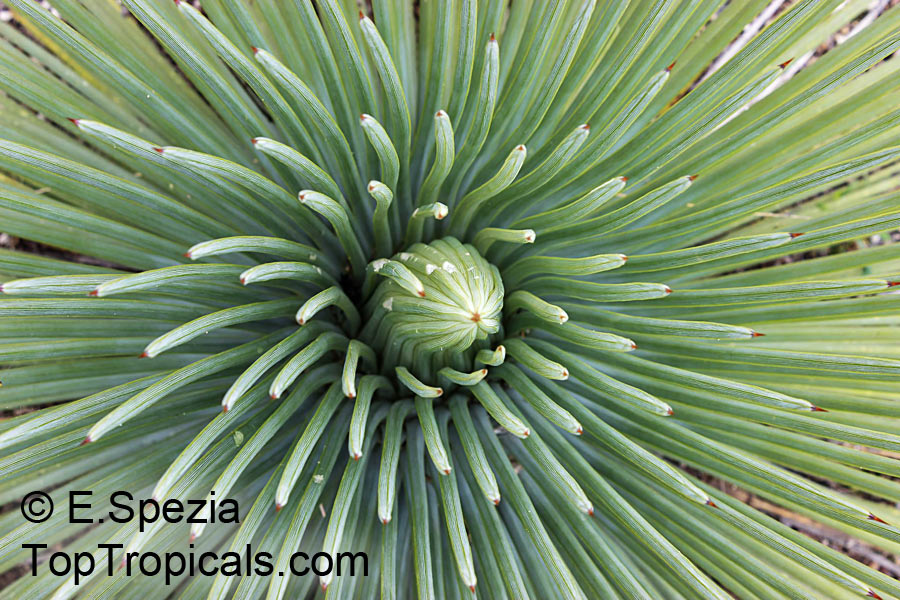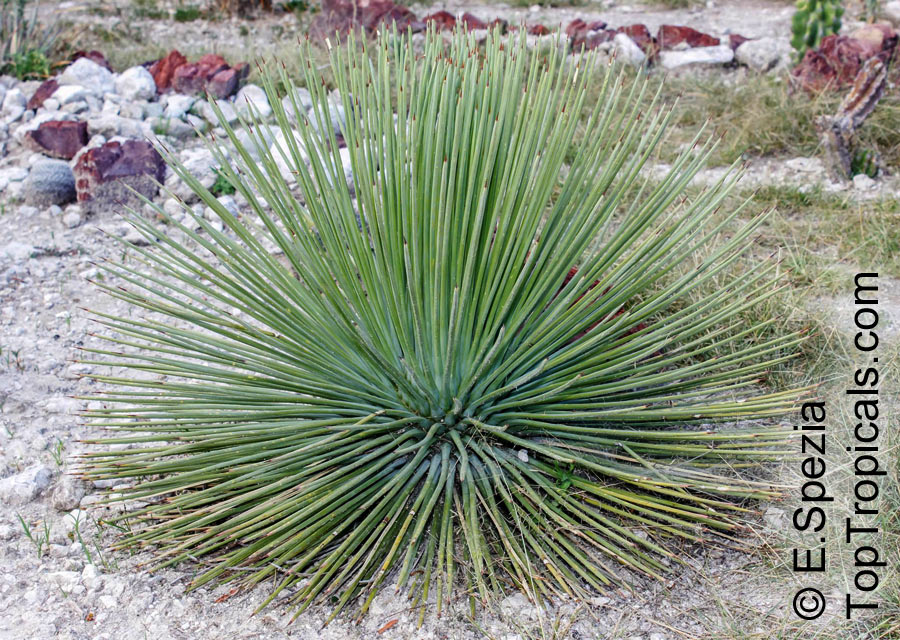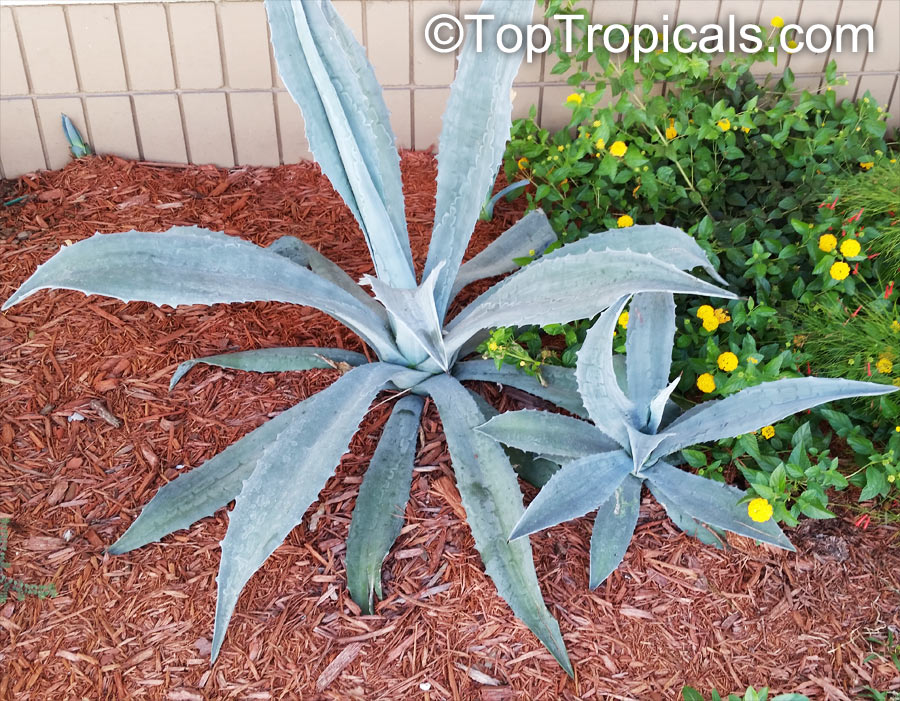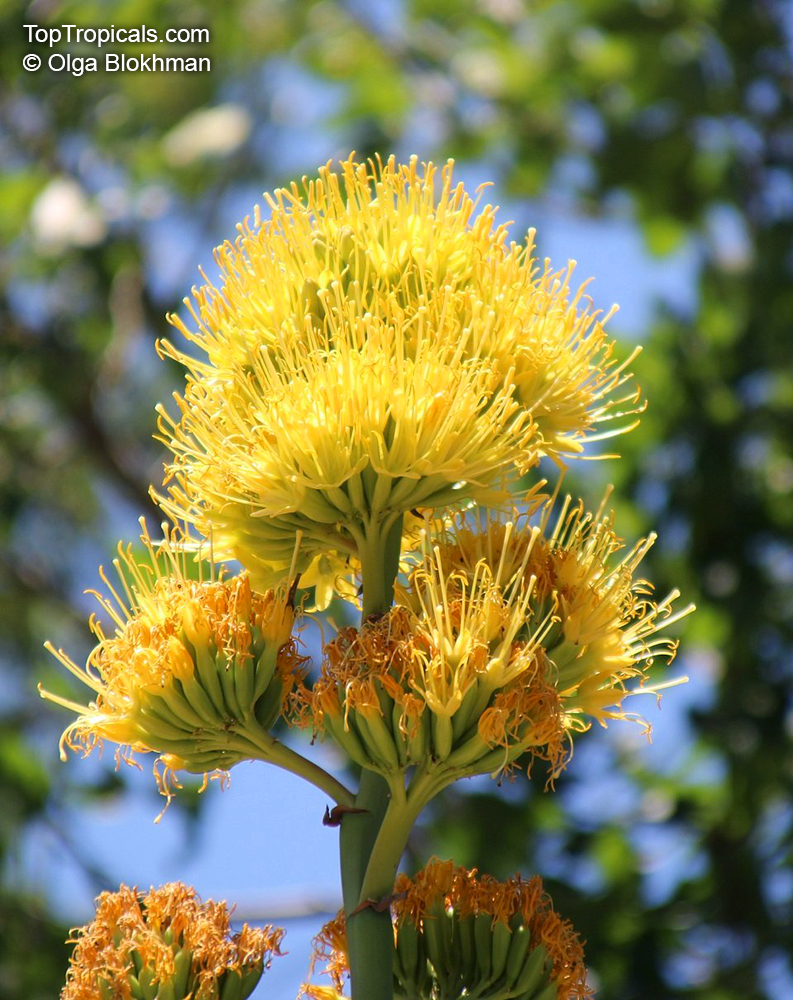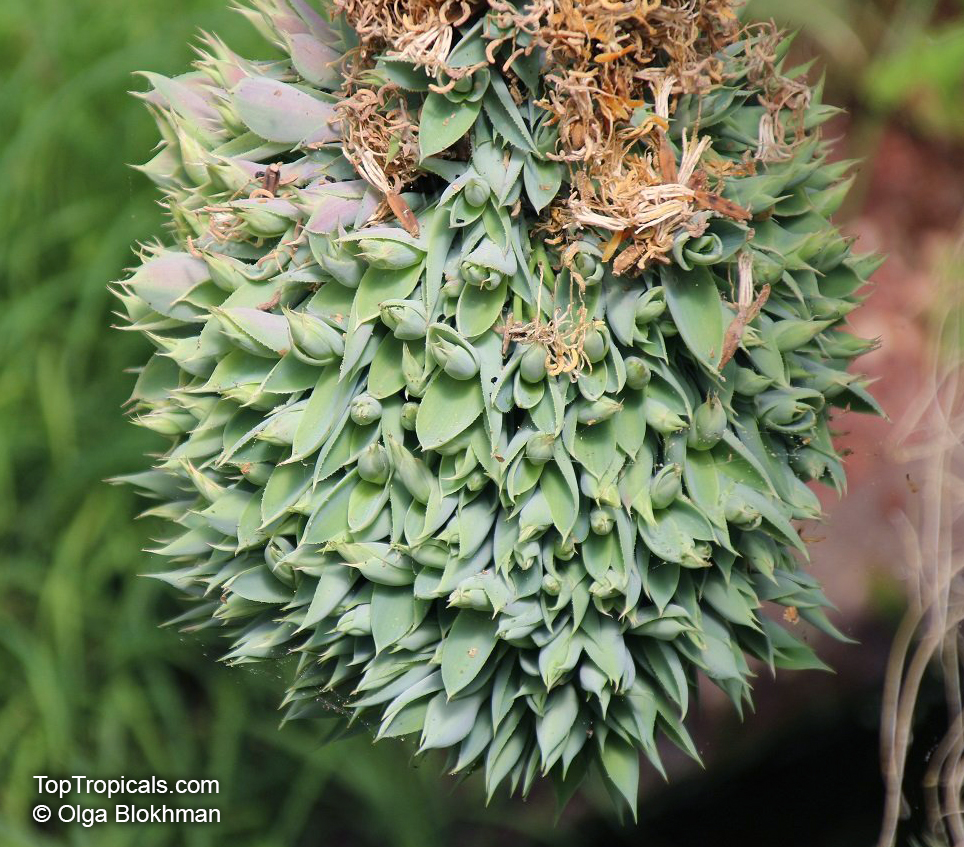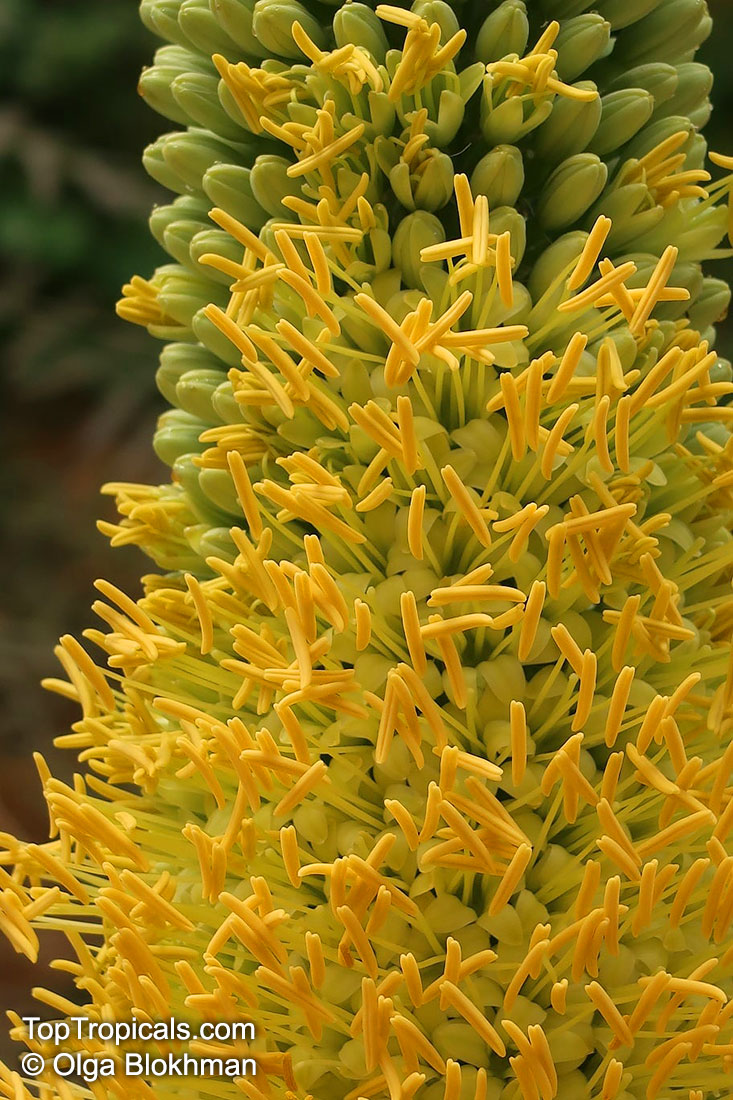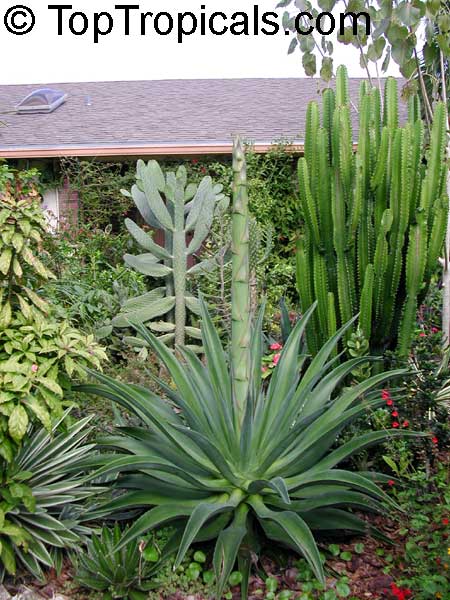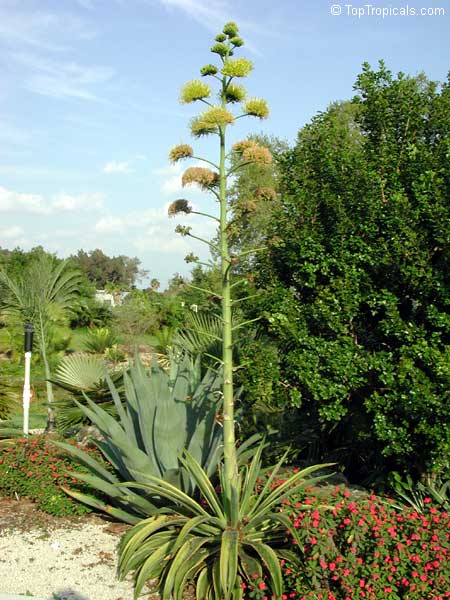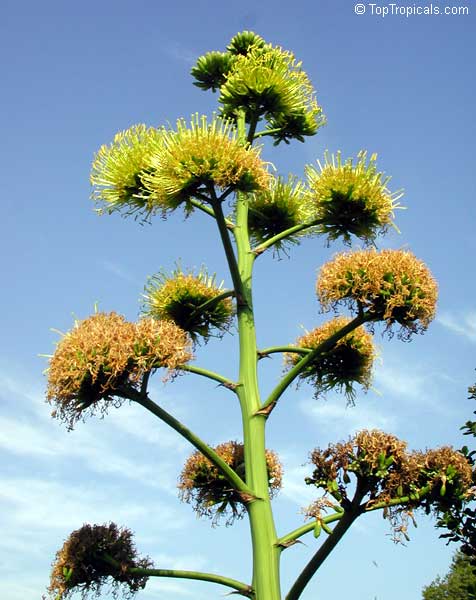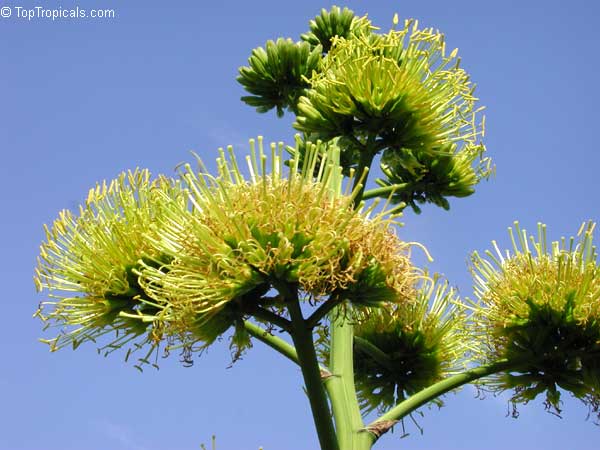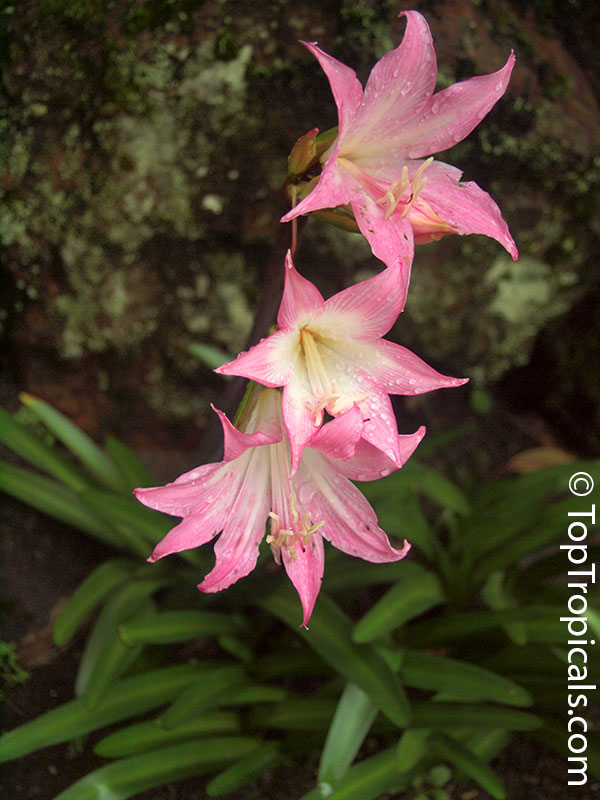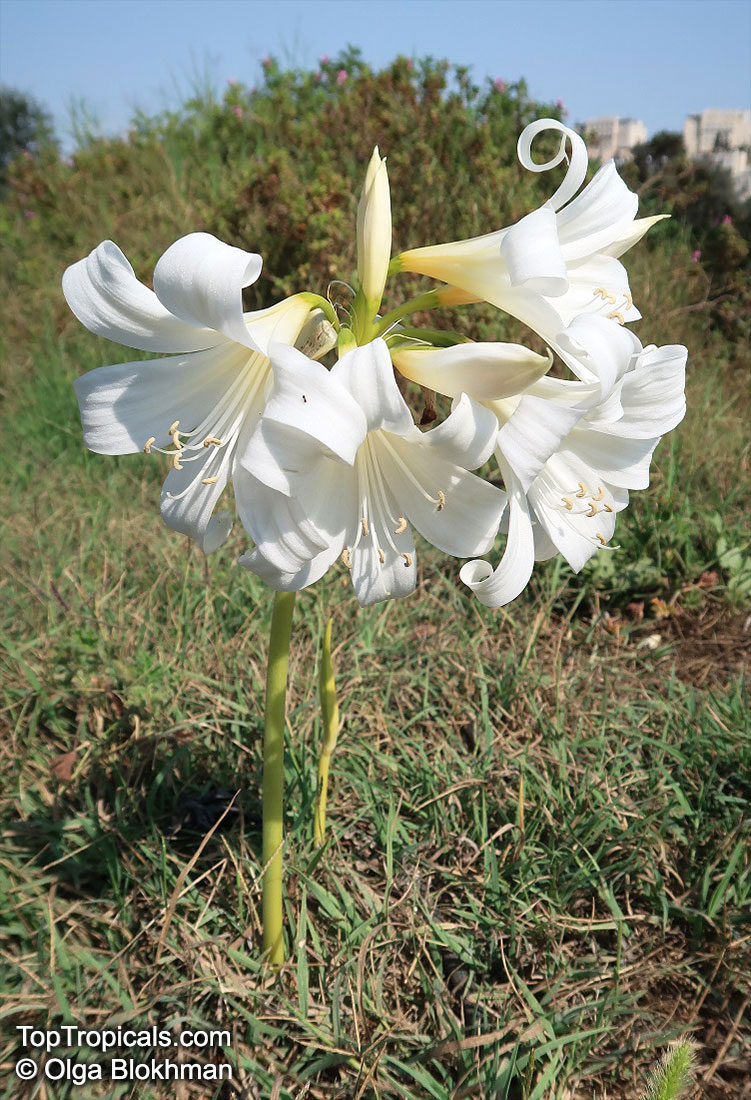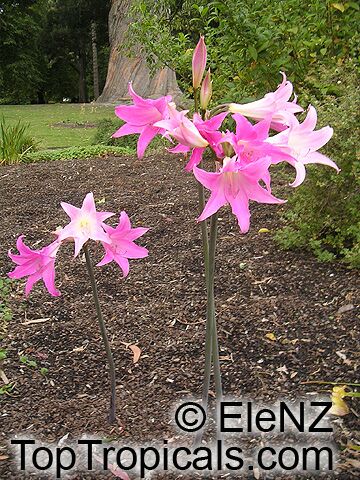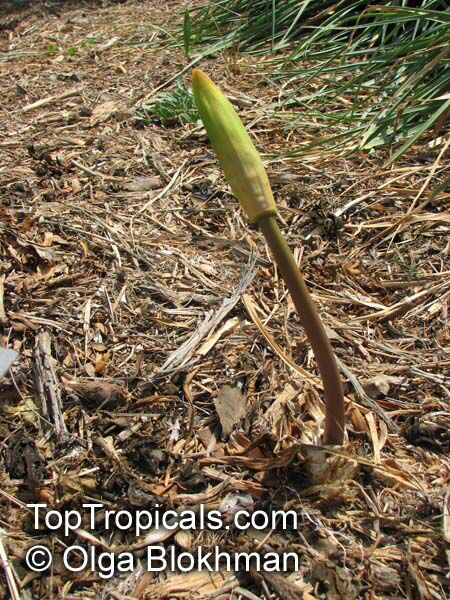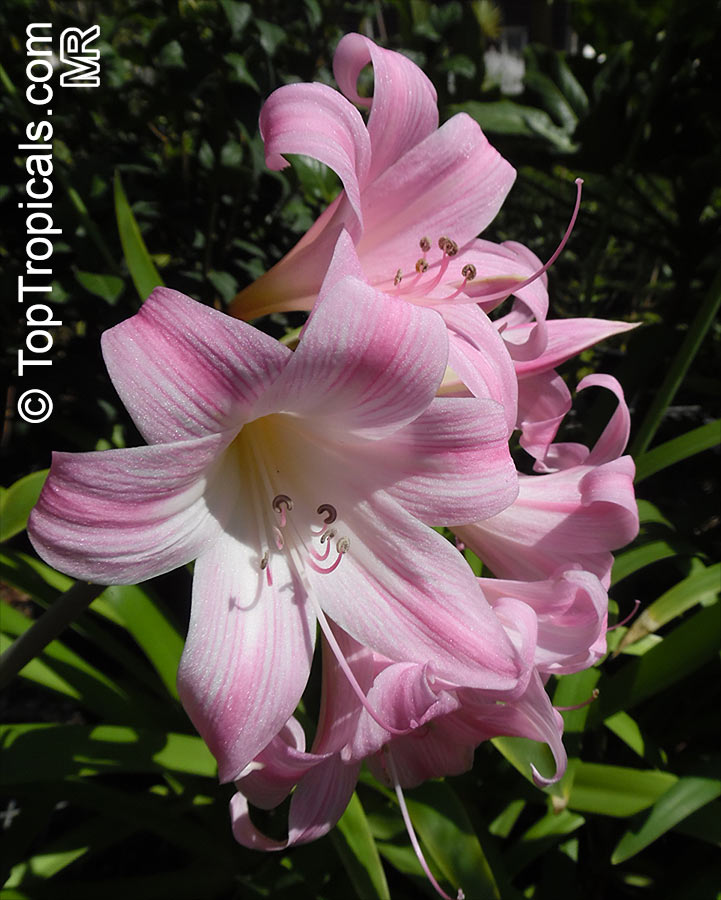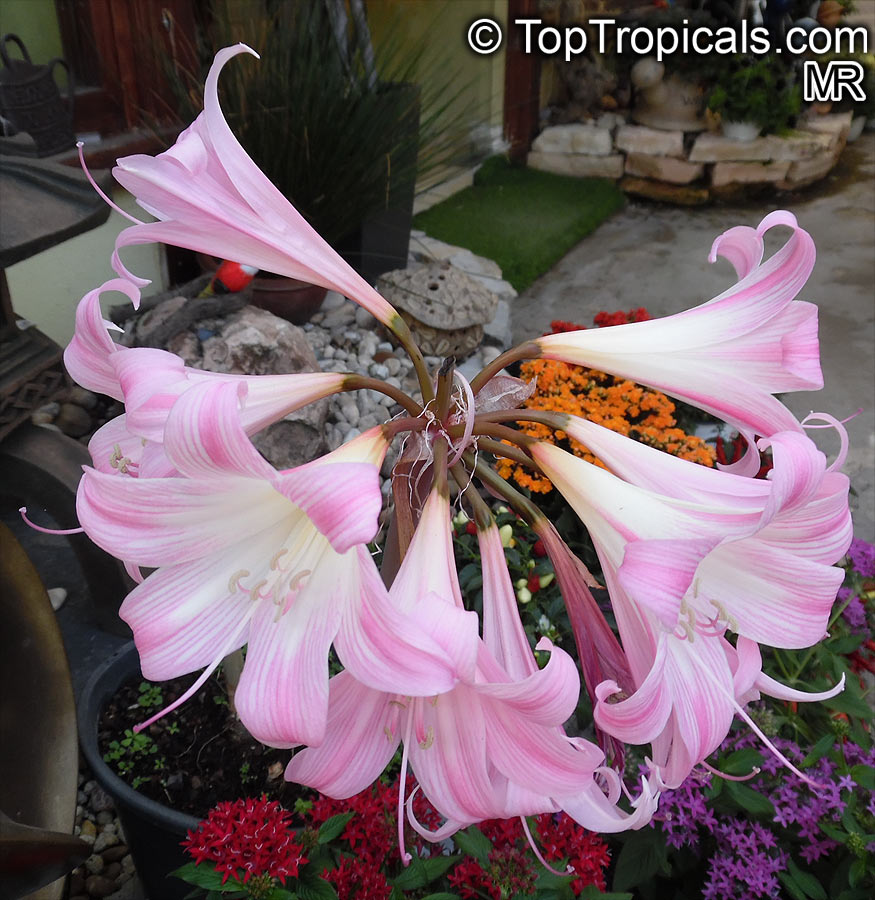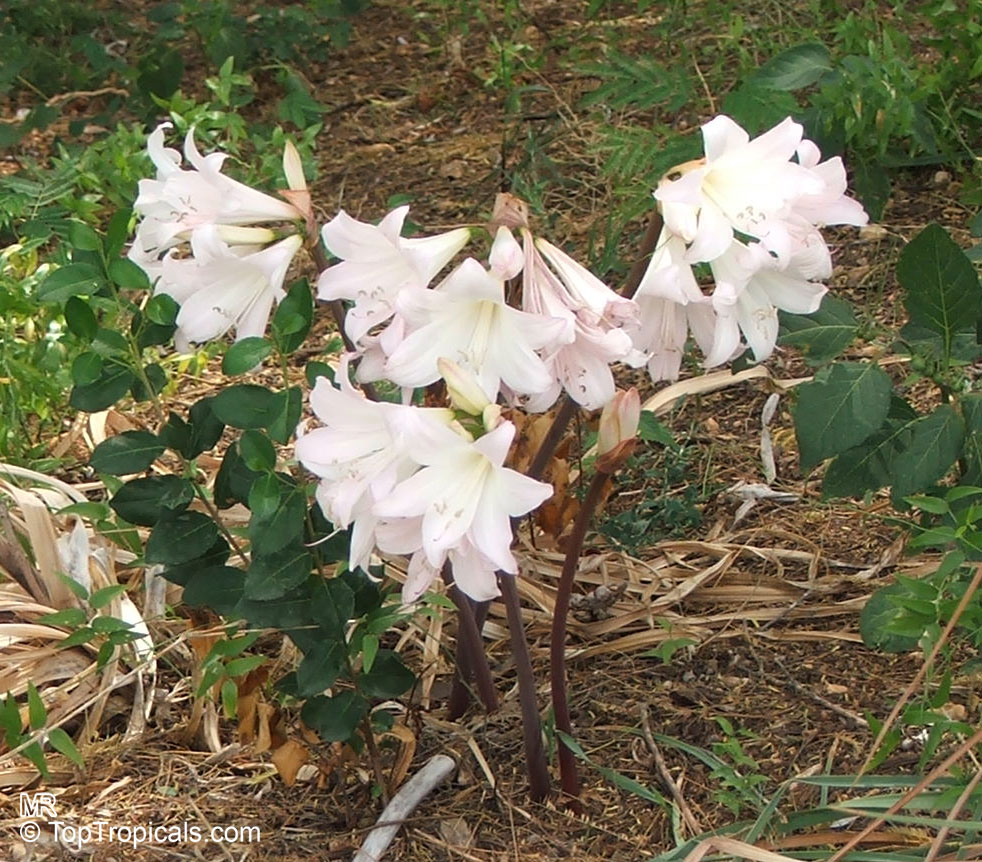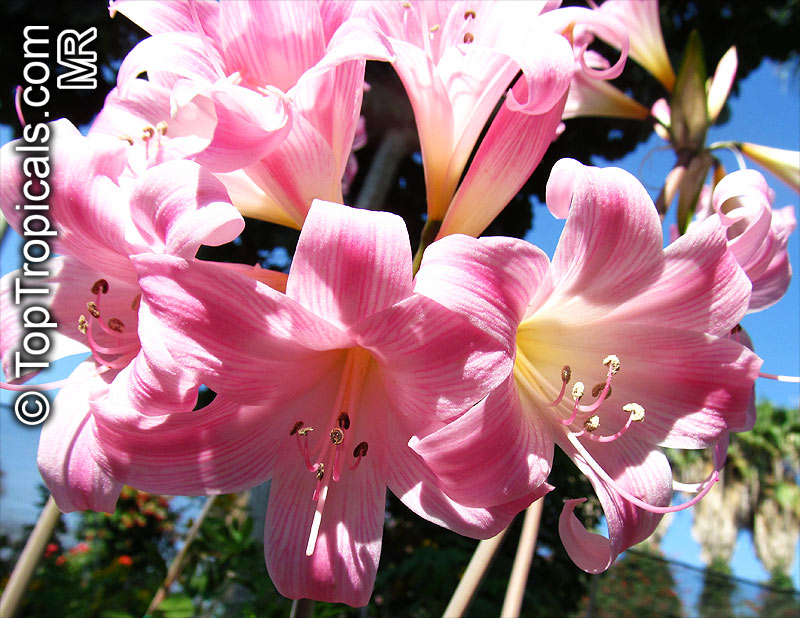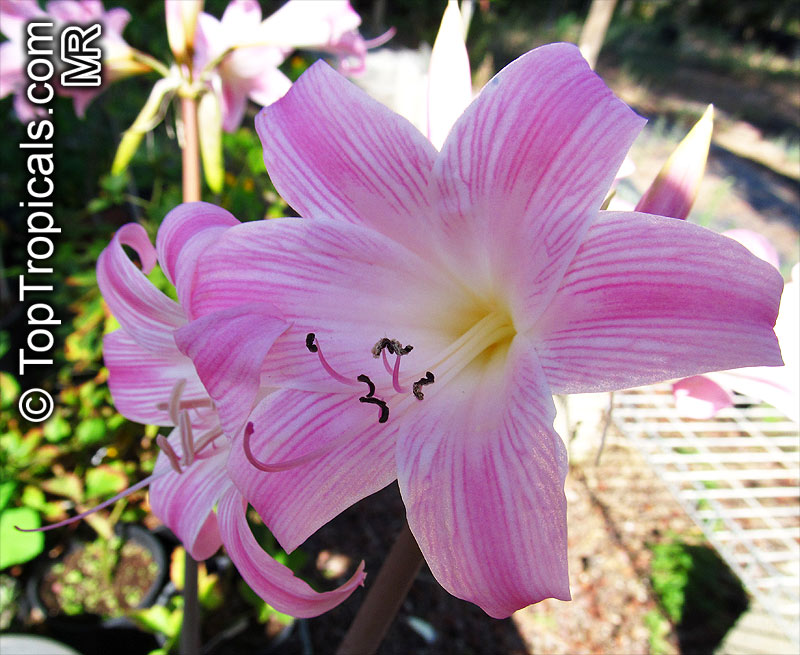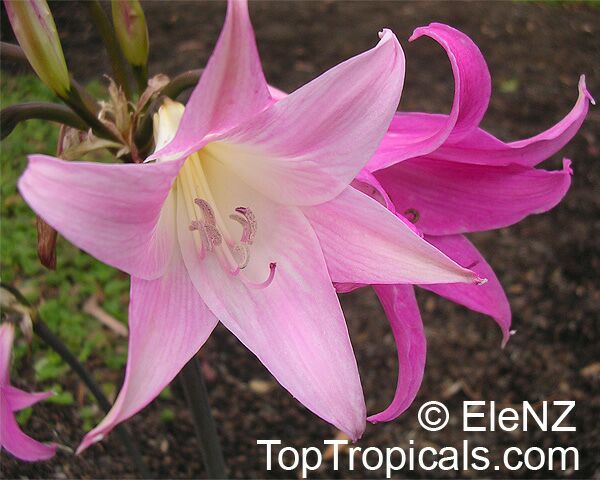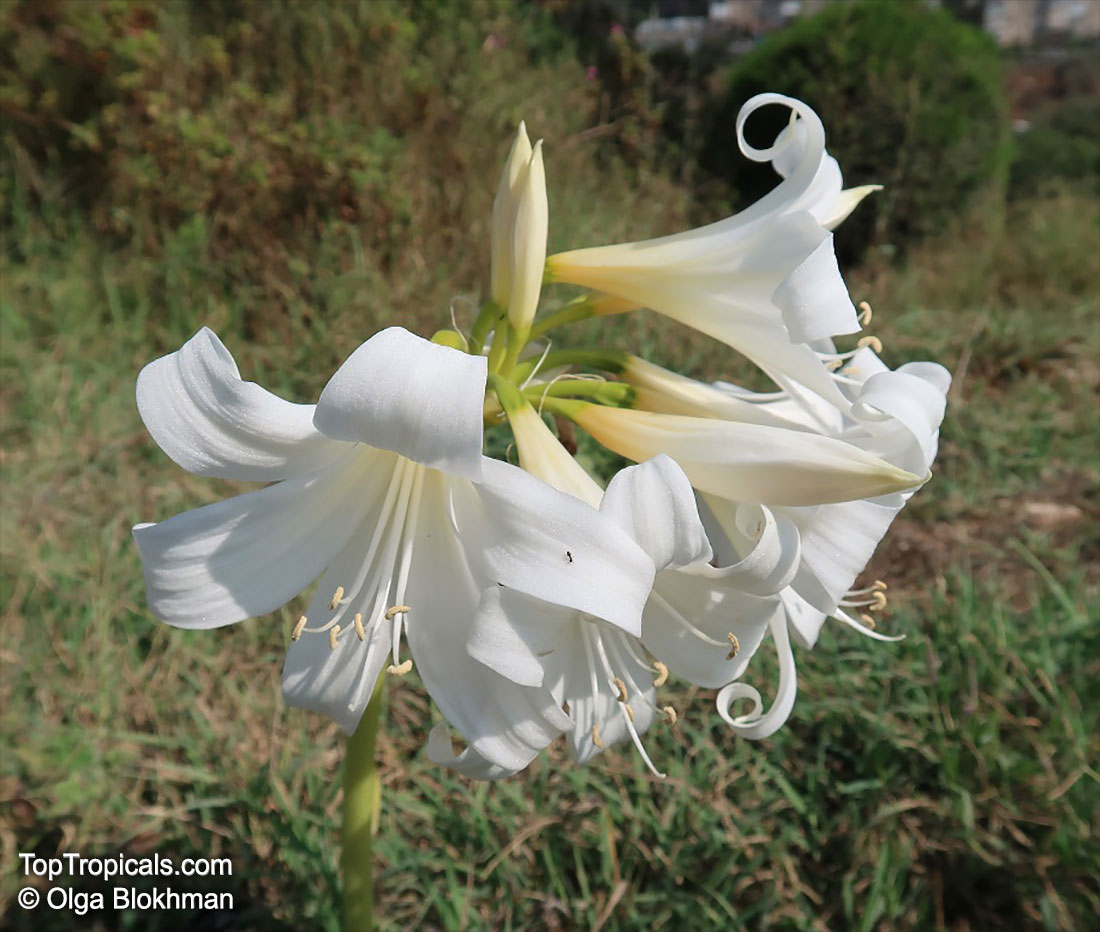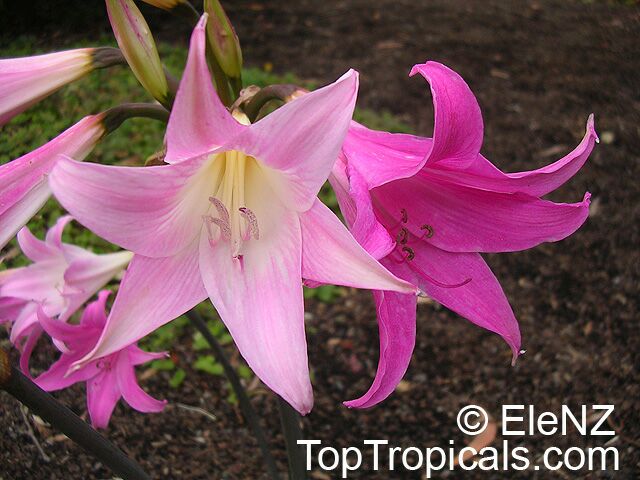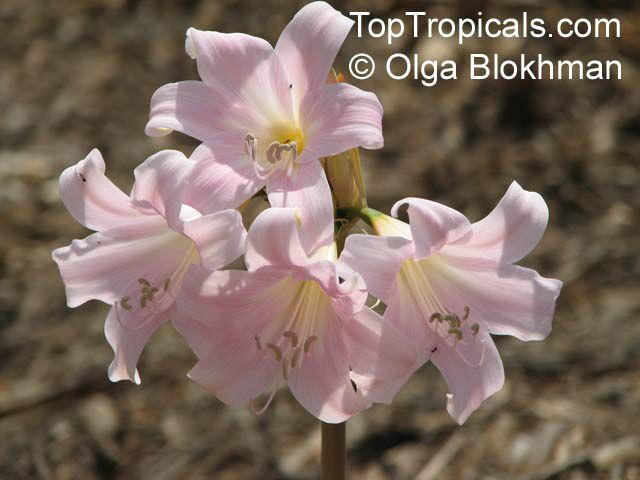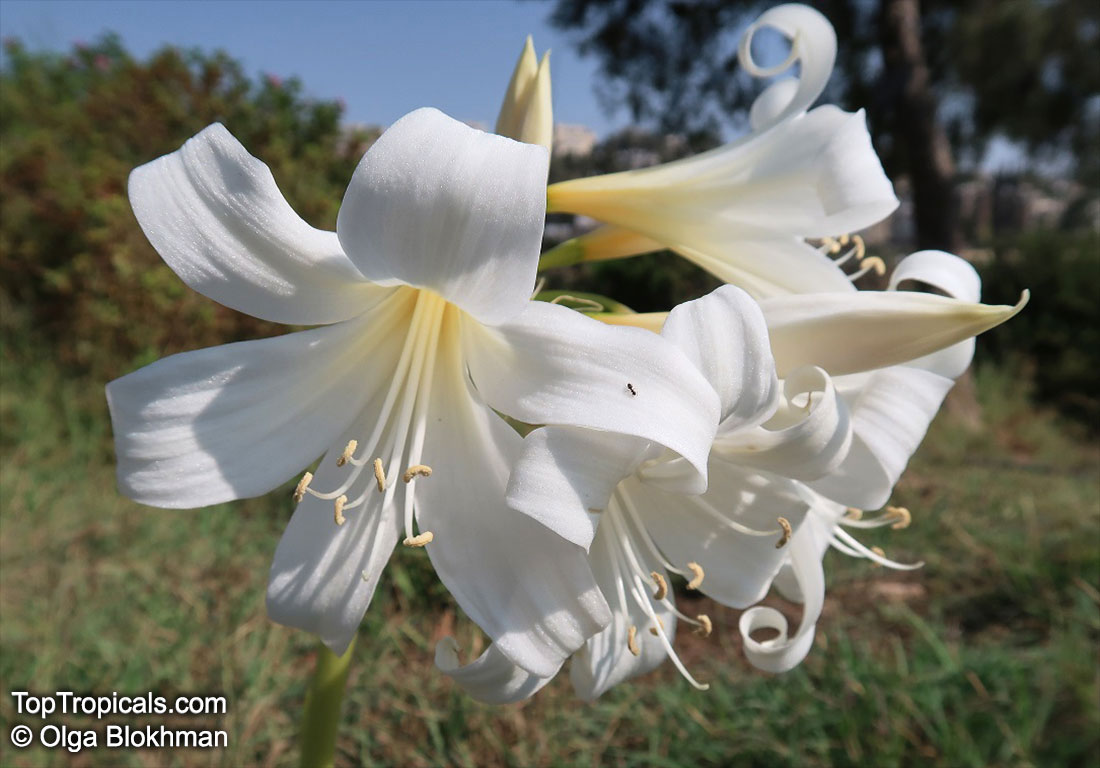Amaryllidaceae - Botanical Family
Top Tropicals Plant Encyclopedia
| Number of plants found: 46 | Next | 
|
Go to page: | 1 | 2 | 3 | 4 | 5 |
Botanical name: Adenium sp.
Common name: 'Black Amaryllis' Desert Rose
Cultivar: 'Black Amaryllis'
Family: Amaryllidaceae



Adenium 'Black Amaryllis' striking double flower with deep crimson edges blending into creamy white, resembling a painted amaryllis. A true showstopper for warm, sunny spots.
Botanical name: Agapanthus sp.
Common name: African Lily
Family: Amaryllidaceae (Formerly:Alliaceae / Liliaceae /Amaryllidaceae)
Subfamily: Agapanthoideae
Origin: South Africa








Sky blue funnel-shaped flowers occur in many-flowered cymes on long, erect stems. Agapanthus is originating from Southern Africa. Both deciduous and evergreen, some have thick, strappy leaves and others grass-like foliage. They range from fully hardy to half hardy, with the evergreen varieties generally the most tender.
Botanical name: Agave americana
Common name: Century plant
Family: Asparagaceae (Formerly:Agavaceae / Amaryllidaceae)
Subfamily: Agavoideae
Origin: Mexican highlands






Agave americana, commonly known as the century plant, is a striking succulent renowned for its dramatic, spiky leaves and towering flower stalk that can reach heights of up to 30 feet. Native to Mexico, this hardy plant is celebrated for its adaptability to arid environments and its ability to produce a spectacular bloom just once in its lifetime, typically after several decades. Its versatility extends beyond ornamental use, as it has been traditionally utilized for its fibers, sweet sap, and medicinal properties.
The genus of more than 200 species of rosette-forming, mostly monocarpic, or sometimes perennial succulents from the desert and mountainous regions of the Americas. The most popular Agave is the Century Plant, so-called because of the mistaken belief that it flowers only once every 100 years. There are two colorful varietis - Agava americana marginata (green leaves edged with yellow) and Agava americana mediopicta (cream leaves edged with green). These plants produce leaves 3 or 4 feet long, and their size makes them unsuitable for an ordinary room. In winter watering this plant can be done once every 1-2 months, there is no need to mist the leaves.
Botanical names: Agave amica, Polianthes tuberosa
Common name: Tuberose
Family: Asparagaceae (Formerly:Agavaceae / Amaryllidaceae)
Subfamily: Agavoideae
Origin: Mexico









The Tuberose grows in elongated spikes up to 45 cm (18 in) long that produce clusters of fragrant waxy white flowers that bloom from the bottom towards the top of the spike. It has long, bright green leaves clustered at the base of the plant and smaller, clasping leaves along the stem.
Tuberose may grow wild in Mexico and surrounding countries, but the cultivation of tuberose is usually in Morocco, the Comores Islands, France, Hawaii, South Africa, India, and China.
Long-lasting as a cut flower in water (with lots of changes.)Most flowers begin to lose their scent when they are picked. Not so with tuberose, like jasmine, the heady floral scent continues to produce itself. In Ayurvedic medicine, attars are held in high esteem not only for their exquisite fragrance, but their healing properties. Tuberose is known to improve one's capacity for emotional depth.
Botanical name: Agave angustifolia
Common name: Agave Maguey Lechugilla
Cultivar: 'Marginata'
Family: Asparagaceae (Formerly:Agavaceae / Amaryllidaceae)
Subfamily: Agavoideae
Origin: Mexico





Agave angustifolia Marginata, more commonly known as the Agave Maguey Lechugilla, is a small shrub native to Mexico. This spiny or thorny succulent is popular for its ornamental foliage and grows between 2-5 feet in full sun, and in dry conditions. This is a hardy succulent, suitable for use in xeriscaping and is grown in USDA zone 9-11.
Agave Maguey Lechugilla, like most succulents, will produce best results in well-draining soil. Watering should be done sparingly and with care, as too much water can lead to the plant's death. When water is necessary, it should be done deep and slow. During the winter months, when growth is at a minimum, water should be reduced even more.
In cold regions, where freezing temperatures are expected, the best way to grow Agave Maguey Lechugilla is in a pot. Containers should also ensure adequate drainage, and during the hot summer months should be moved to a sunny spot outdoors and brought inside during winter.
Overall, the Agave Maguey Lechugilla is an attractive and hardy plant. When growing conditions are provided and cared for, the plant will grow to a maximum of 5 feet. Foliage is normally very ornamental, and is sure to be a winning addition to any xeriscape or cacti garden.
Botanical name: Agave attenuata
Common names: Fox Tail Agave, Swan's Neck Agave
Family: Asparagaceae (Formerly:Agavaceae / Amaryllidaceae)
Subfamily: Agavoideae
Origin: Mexico






Native to the tropical climates of Mexico, Agave attenuata (Fox Tail Agave) is a small shrub that grows between 2 - 5 feet. It prefers full sun to light shade, and requires moderate wateringthough it doesn't tolerate overly wet conditions. It prefers to grow in dry, well-draining soils. The plant is renowned for its light grey-green wavy-edged leaves with a hint of ivory powder. Fox Tail Agave's short, flowering stems emerge from the heart of the plant in summer or fall and produce yellow or orange clusters of fragrant flowers. The spiny or thorny leaves help to deter browsing animals and offer a unique addition to gardens and landscapes.
Agave attenuata is an excellent home garden choice because it is low-maintenance, drought tolerant and can survive in a range of conditions. In addition, it can be grown in USDA Hardiness Zones 9-11 with minimal care. However, if you are located in a colder region and plan to grow this plant in a pot, you should move it indoors during the winter months to protect it from the frost. As long as you ensure your Fox Tail Agave has plenty of sun and water it should thrive in your garden or home.
Botanical name: Agave neglecta
Common name: Small agave
Family: Asparagaceae (Formerly:Agavaceae / Amaryllidaceae)
Origin: Florida





Agave neglecta has been regarded as endemic to Florida, but is now treated as the same species as the Mexican Agave weberi and only naturalized in Florida through human agency.
Botanical name: Agave sp.
Common name: Agave
Family: Asparagaceae (Formerly:Agavaceae / Amaryllidaceae)
Subfamily: Agavoideae
Origin: Mexico
Hardiness: 20°F







Agaves are rosette plants that live for many several years before flowering. Each rosette will flower only once, then die. The English common name, Century Plant, is based on the mistaken belief that the plants grow for 100 years before blooming. In fact, some of the smaller species flower when only 3 to 4 years old. The larger species may live for 40 to 50 years before flowering. They may be planted outdoors in mild climates, especially those that are desert and semi-desert; otherwise, they may be grown in a greenhouse and when small as houseplants. In regions with harsh winters, Agaves may be planted outdoors in the summer and brought in during the winter. The sizes of the Agaves vary from 6 inches to 15 feet wide between the species.
Botanical name: Agave tequilana
Common names: Tequila Agave, Century Plant
Family: Asparagaceae (Formerly:Agavaceae / Amaryllidaceae)
Subfamily: Agavoideae
Origin: Mexico






Tequila Agave, Century Plant. Agave tequilana, commonly called blue agave (agave azul) or tequila agave, is an agave plant that is an important economic product of Jalisco, Mexico, due to its role as the base ingredient of tequila, a popular distilled beverage. The high production of sugars, mostly fructose, in the core of the plant is the main characteristic that makes it suitable for the preparation of alcoholic beverages. Great addition to cactus - rock gardens - ethno-botanical collections. Drought-tolerant; suitable for xeriscaping. Grows fairly fast in summer if provided with extra water.
Botanical names: Amaryllis belladonna, Callicore rosea
Common names: Belladonna Lily, March Lily, Naked Lady
Family: Amaryllidaceae (Formerly:Amaryllidaceae / Liliaceae)
Subfamily: Amaryllidoideae
Origin: South Africa









The large clusters of scented, trumpet-shaped pink or white flowers are carried on a long purplish-red and green stem appearing 50cm above the soil. Up to twelve flowers are produced from the flowering stem. These flowers are 10cm long and apically flare open about 8cm. The inflorescence tends to face the direction that receives the most sun.
The strap-like leaves are deciduous and are produced after flowering.
| Next |  |
Use link to repeat this search:
https://toptropicals.com/cgi-bin/garden_catalog/cat.cgi?search_op=and&keyword_op=and&language=e&family=Amaryllidaceae
&number=10&no_change_lang=1&user=tt&sale=1&first=0
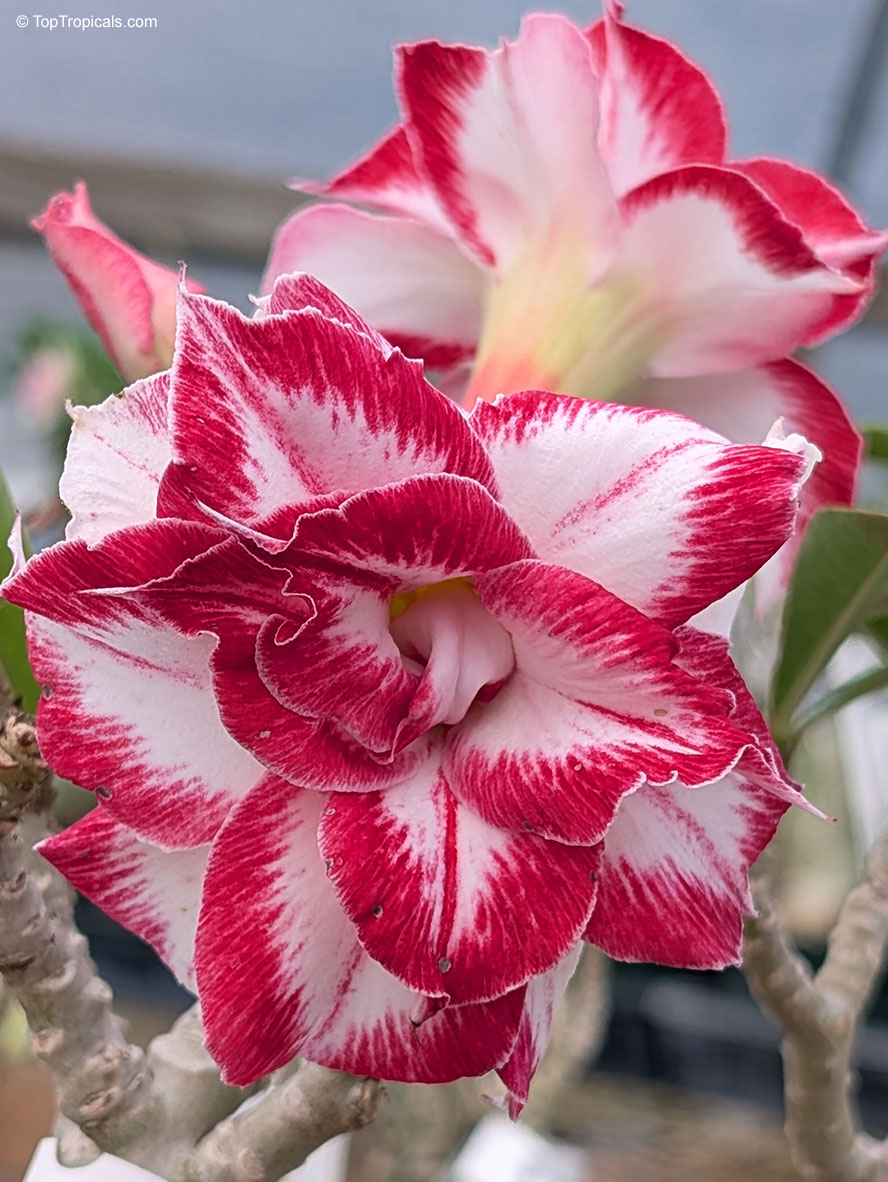
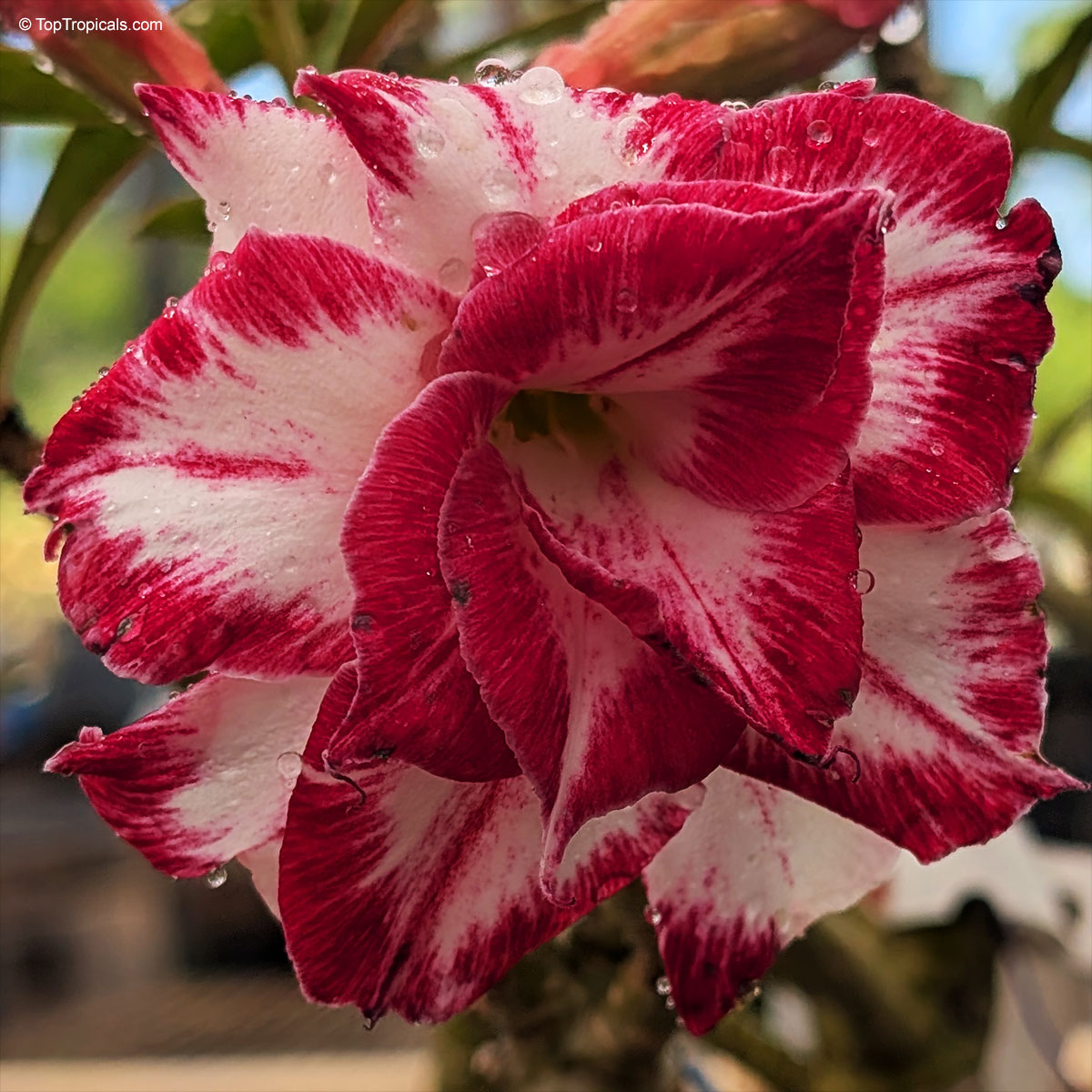
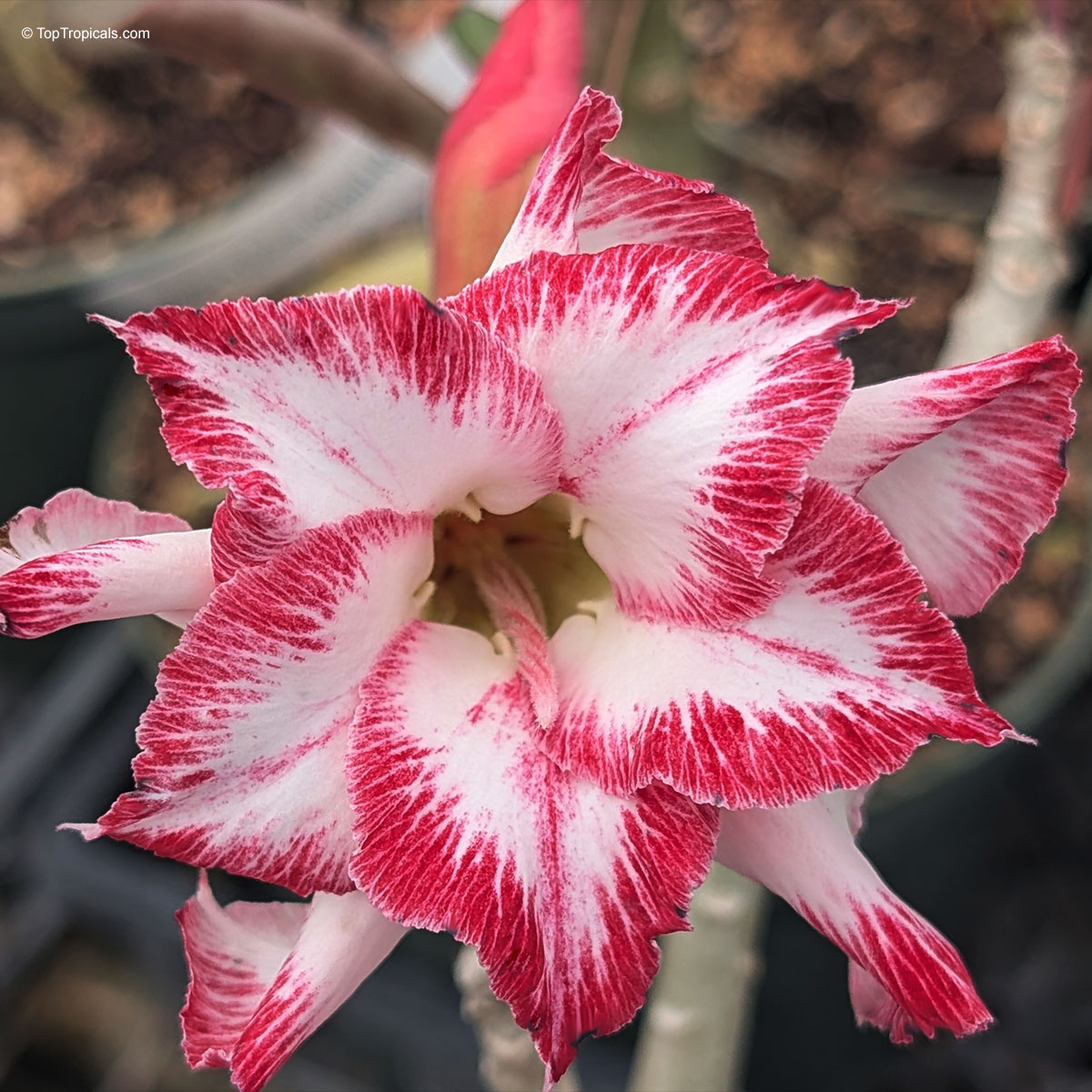

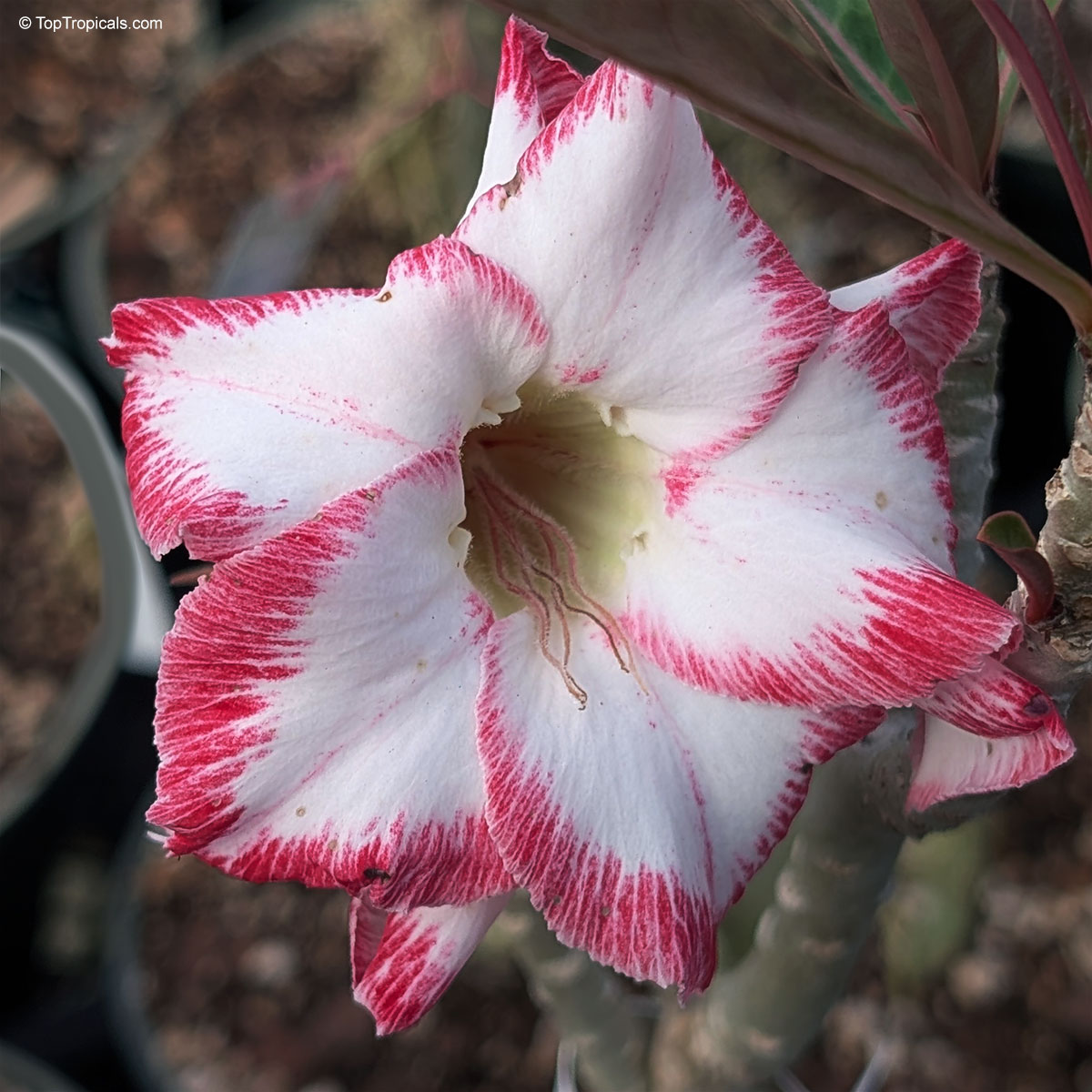
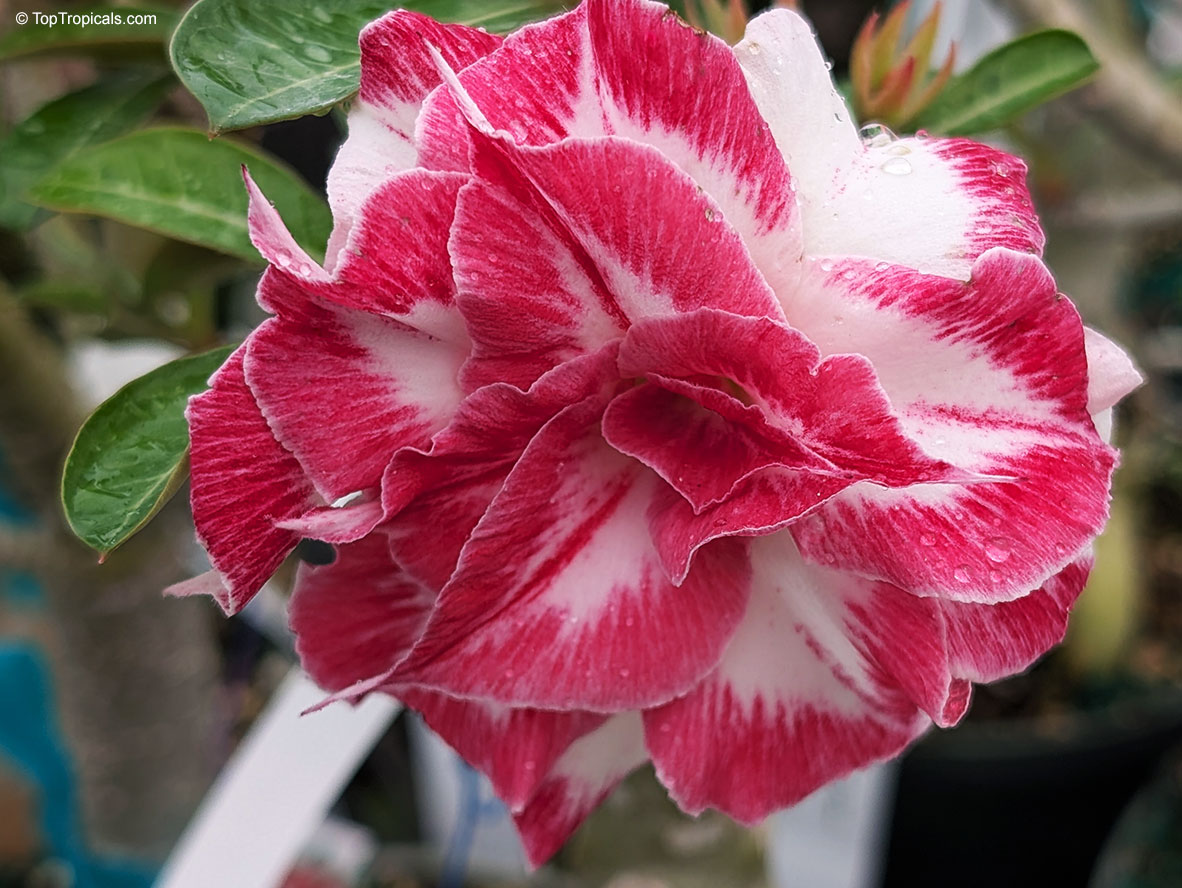
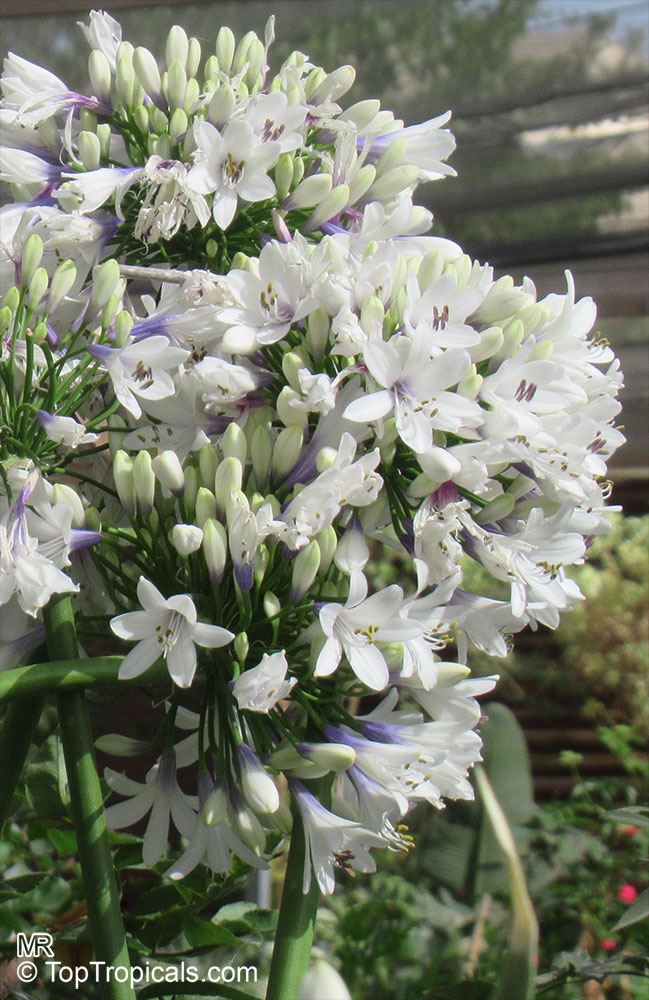
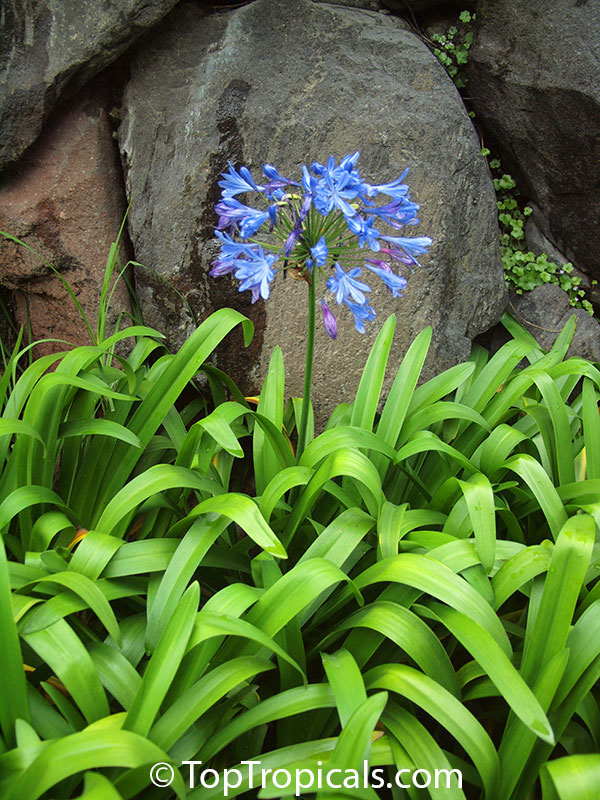
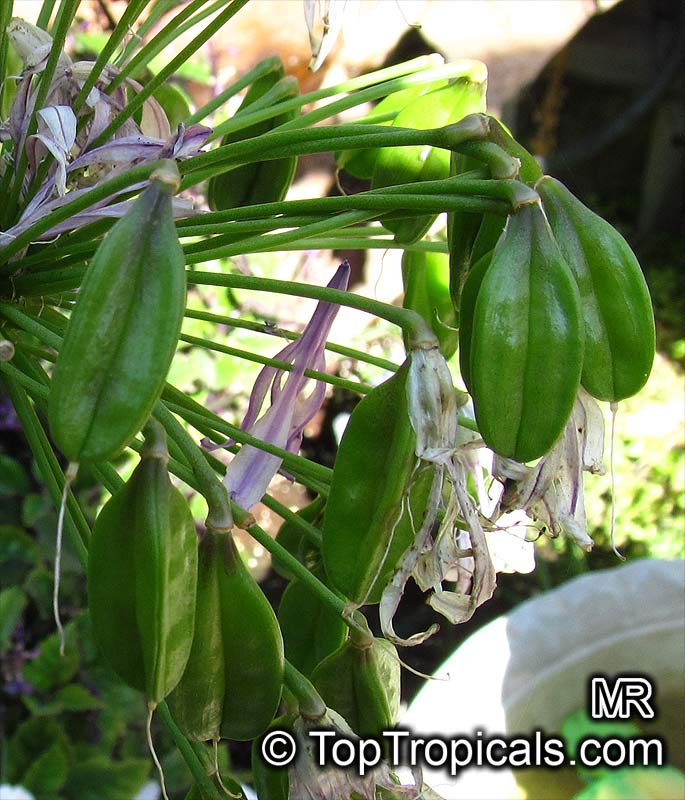
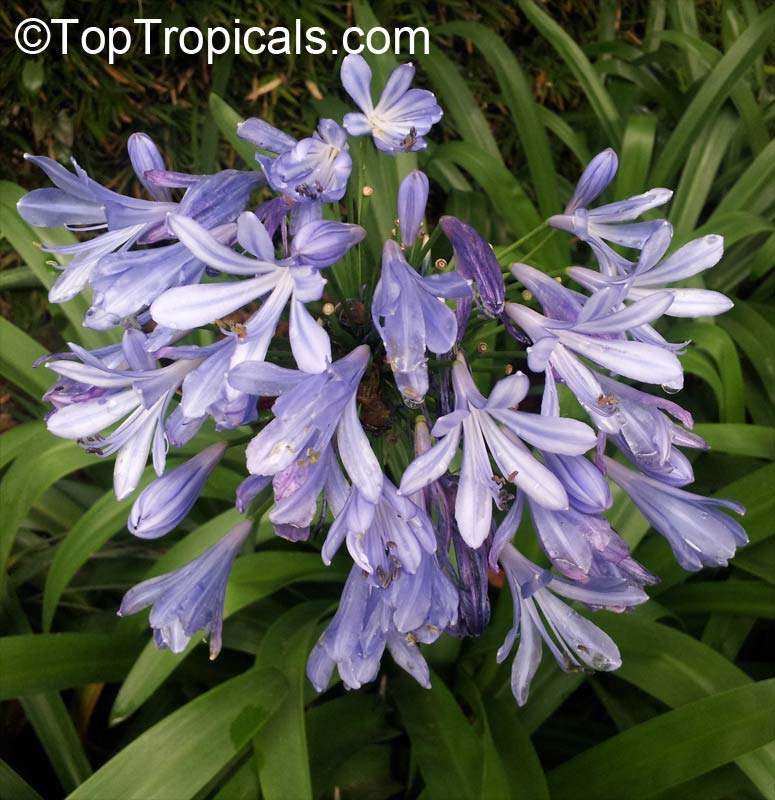
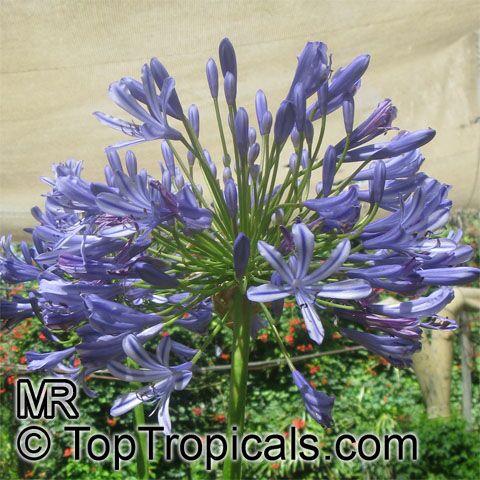
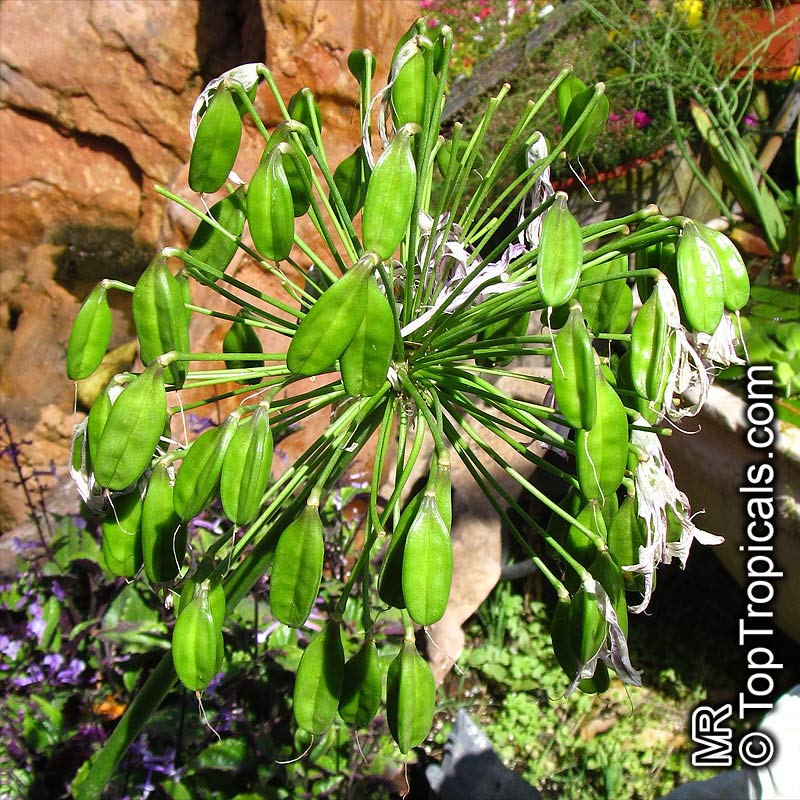
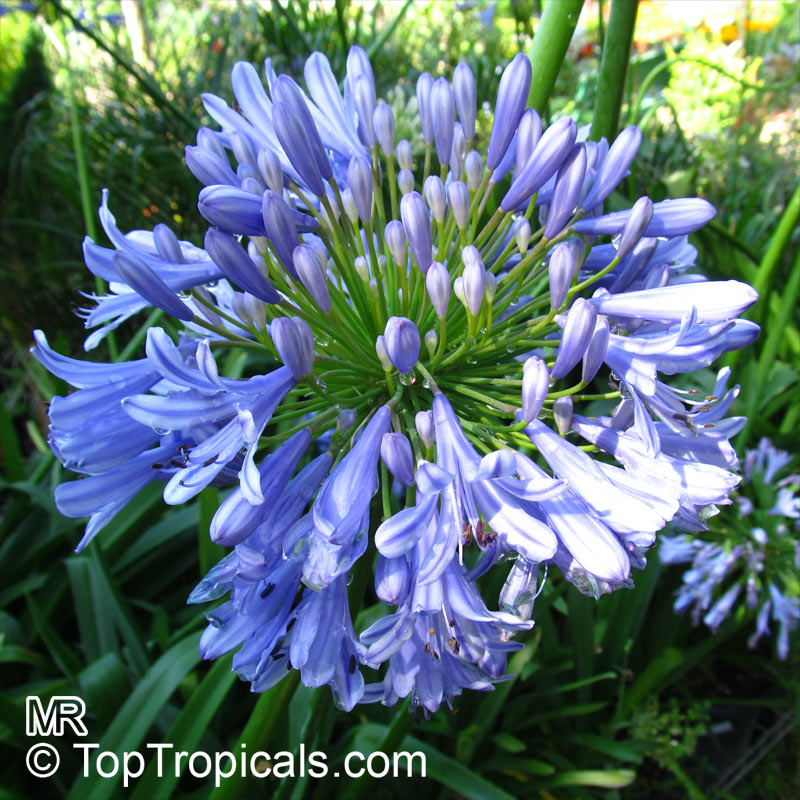
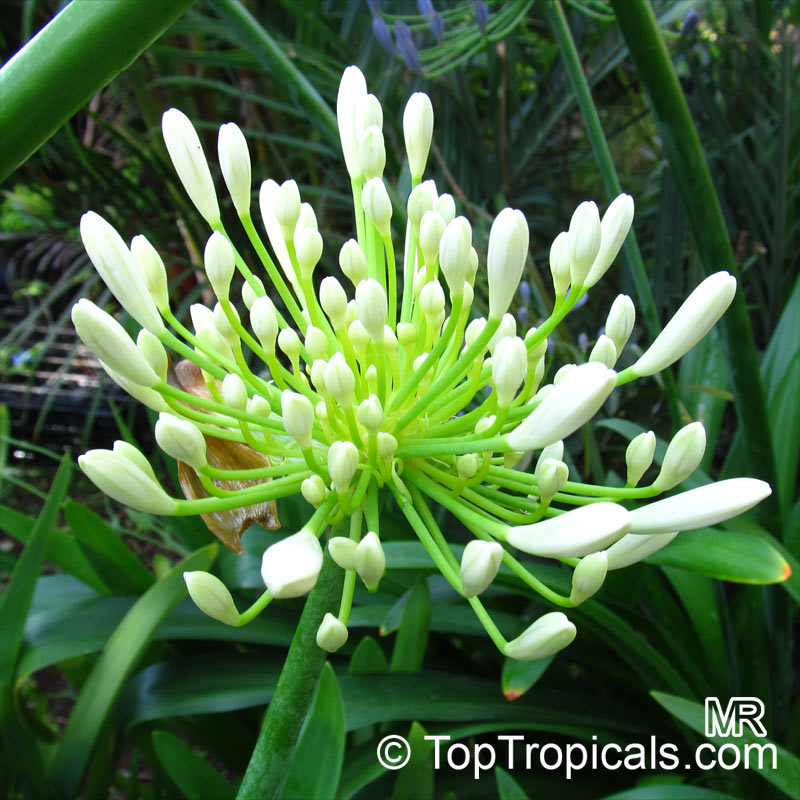
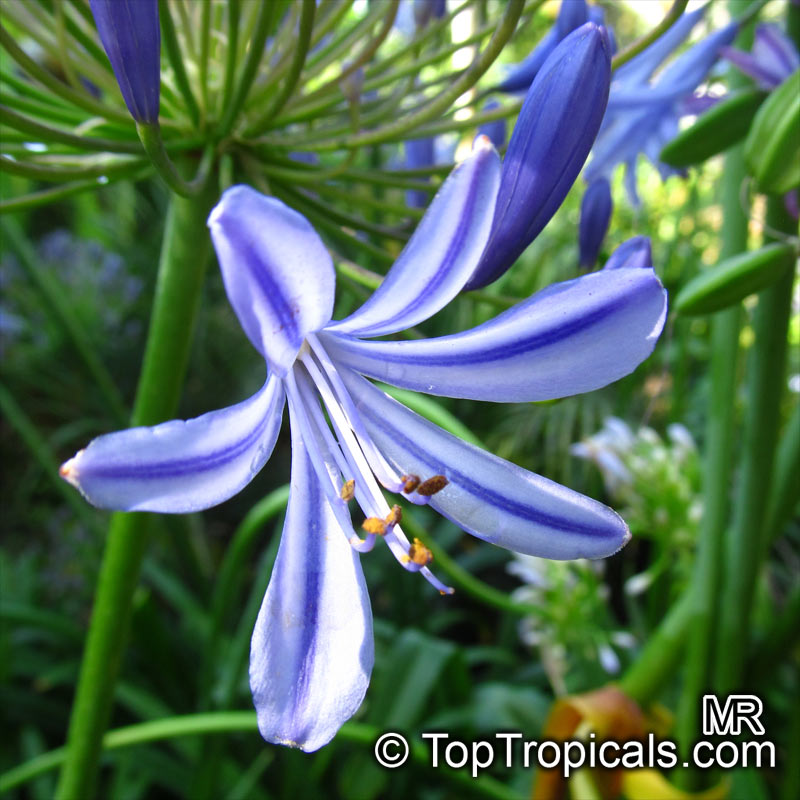
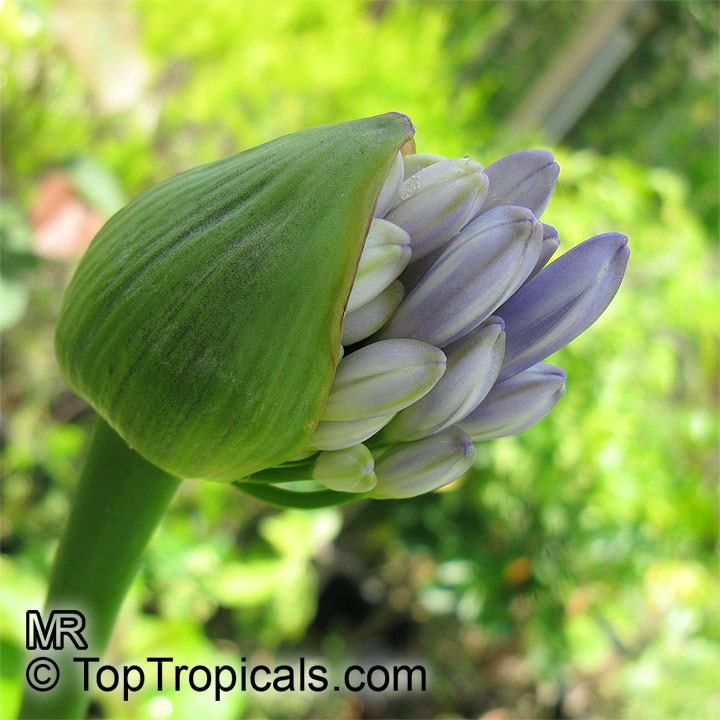
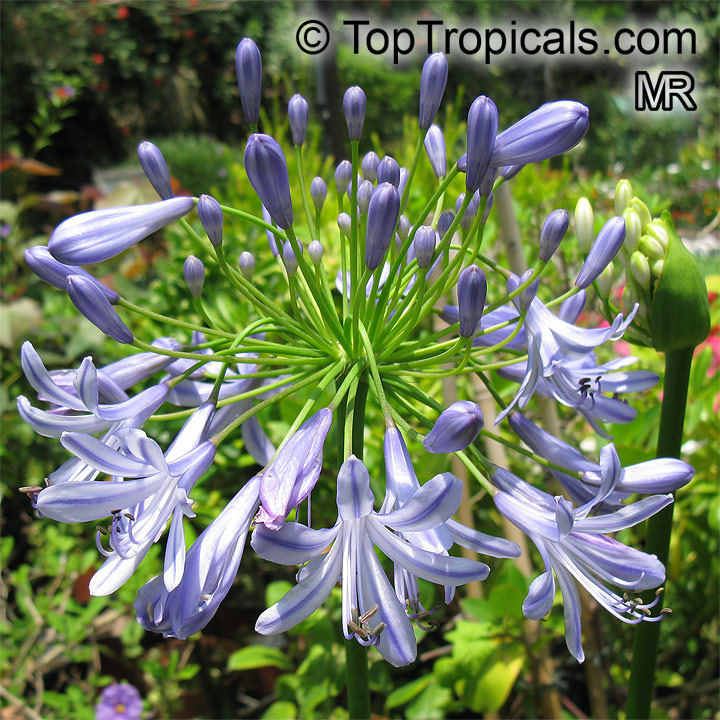
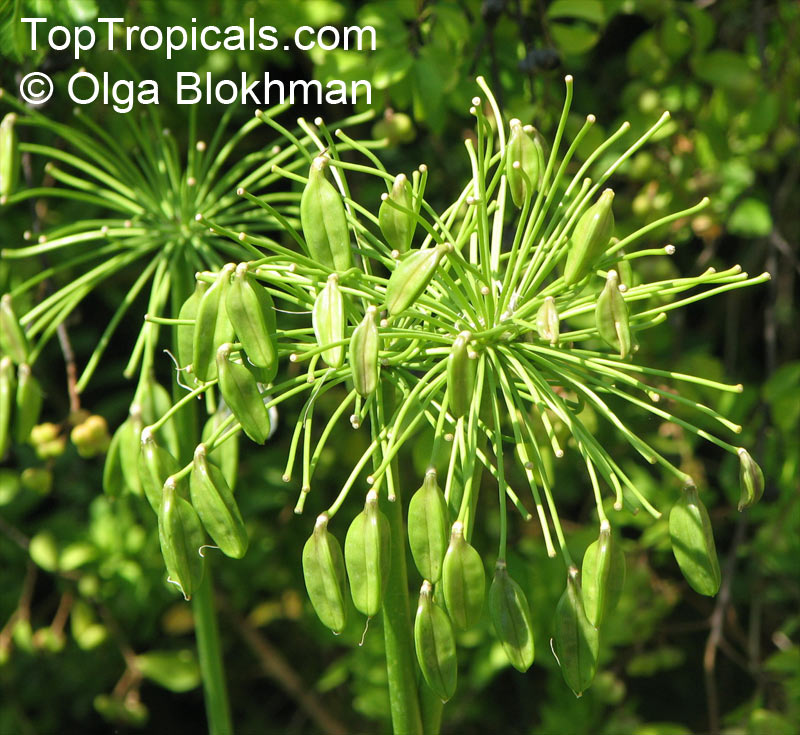
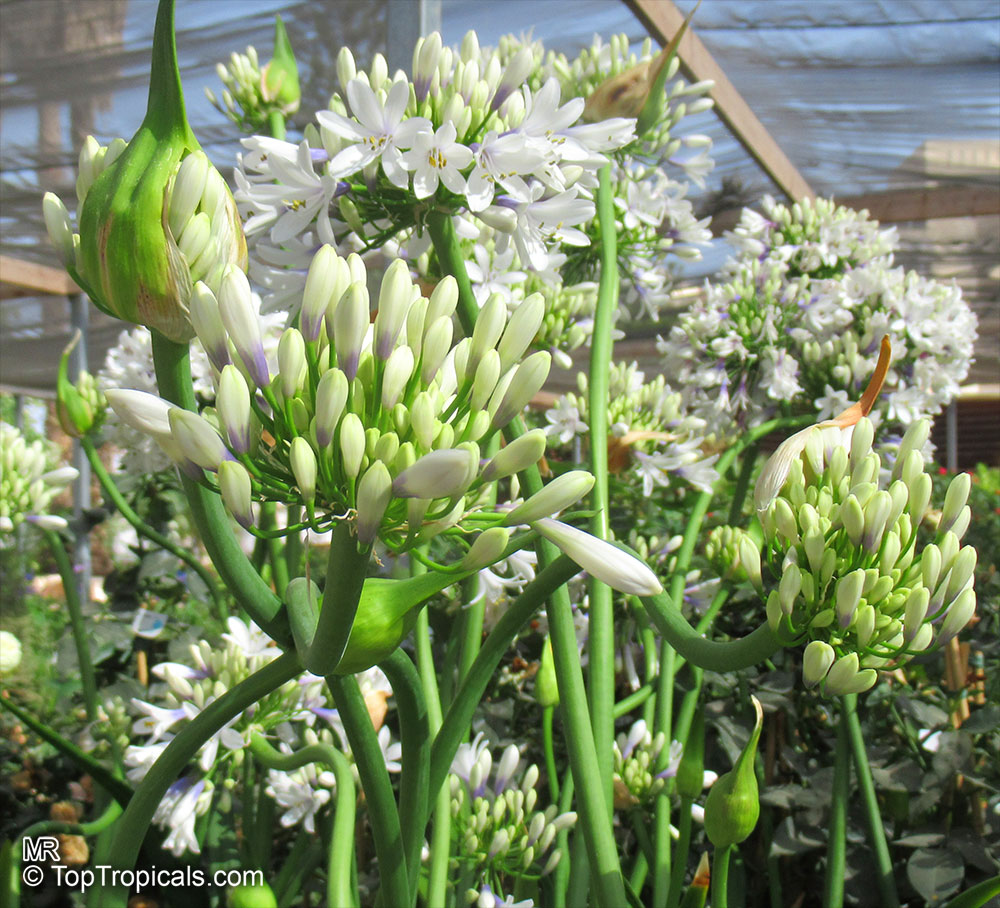
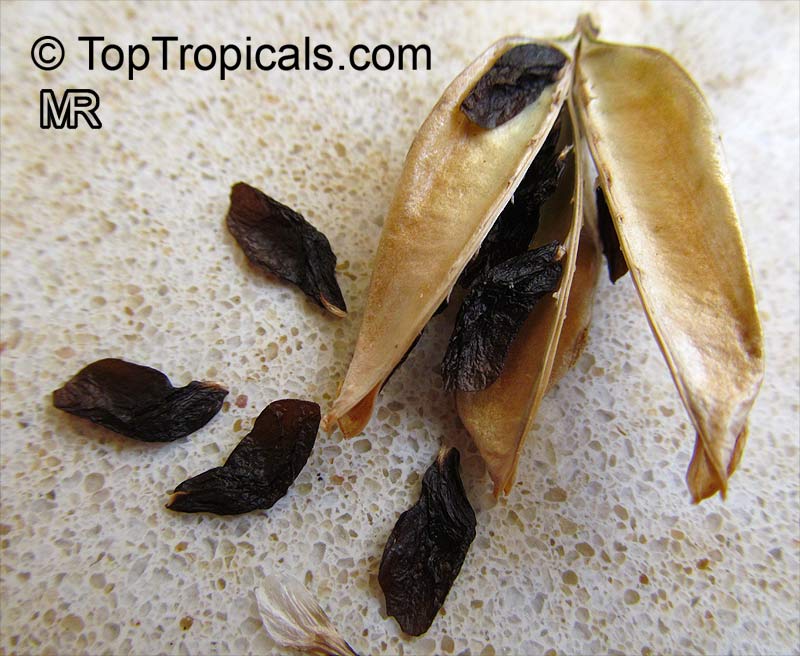
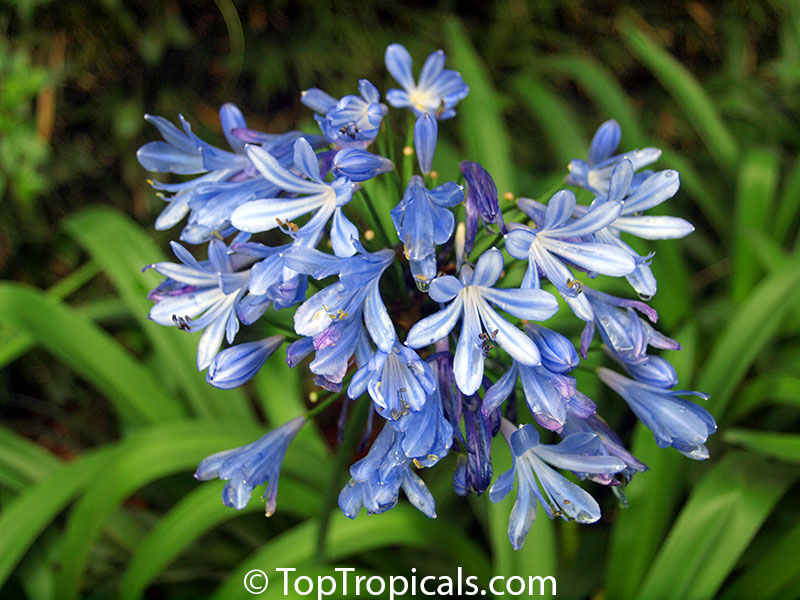

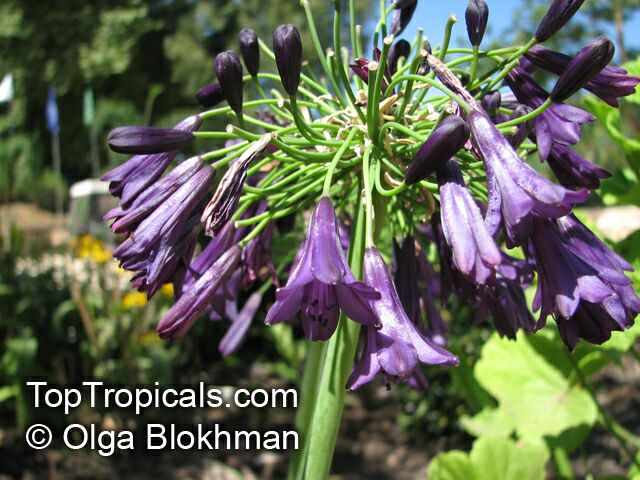

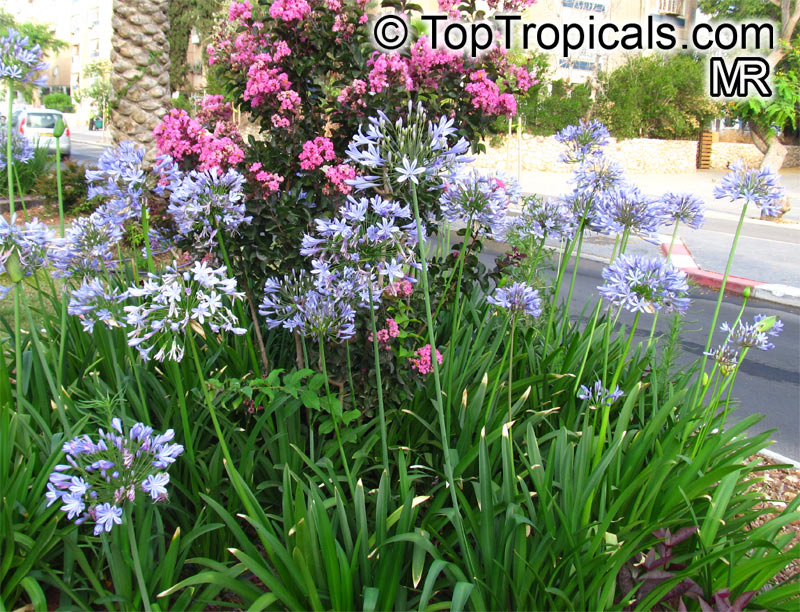
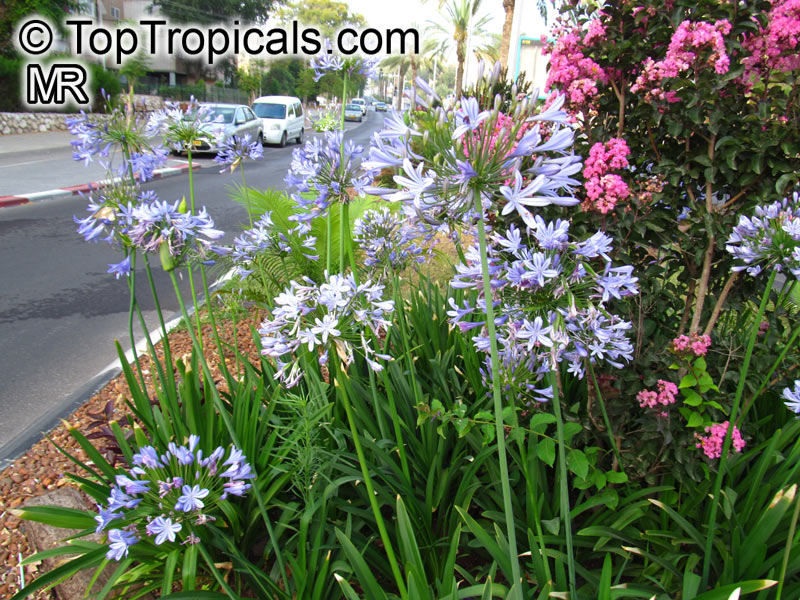
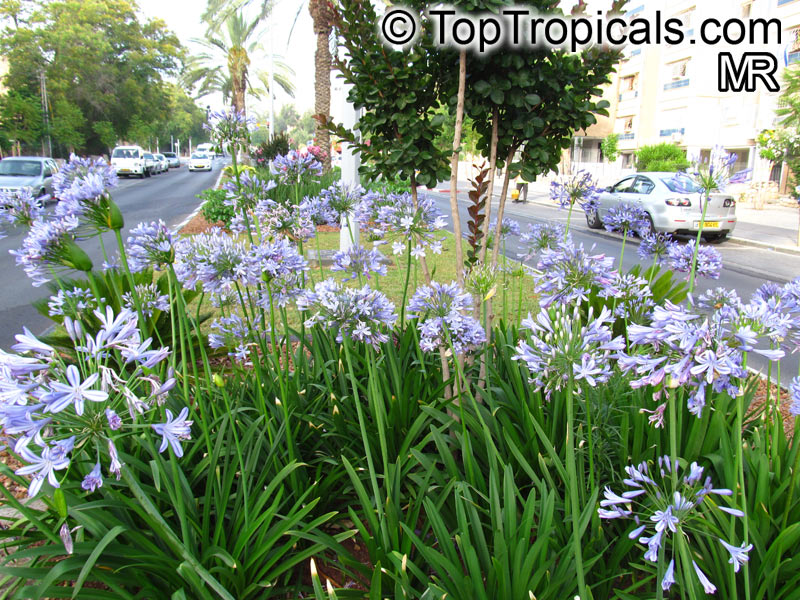
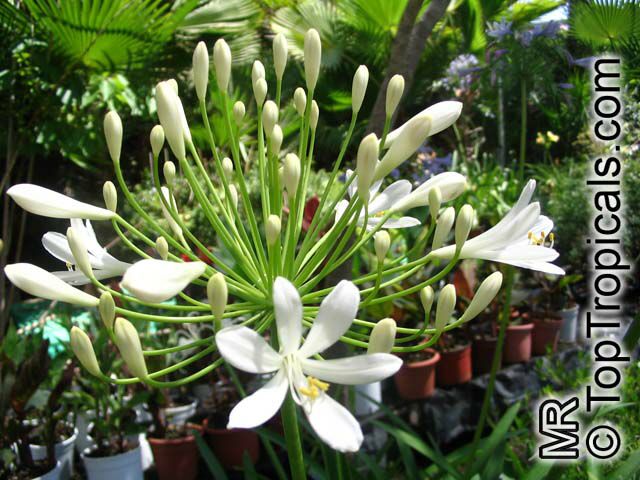
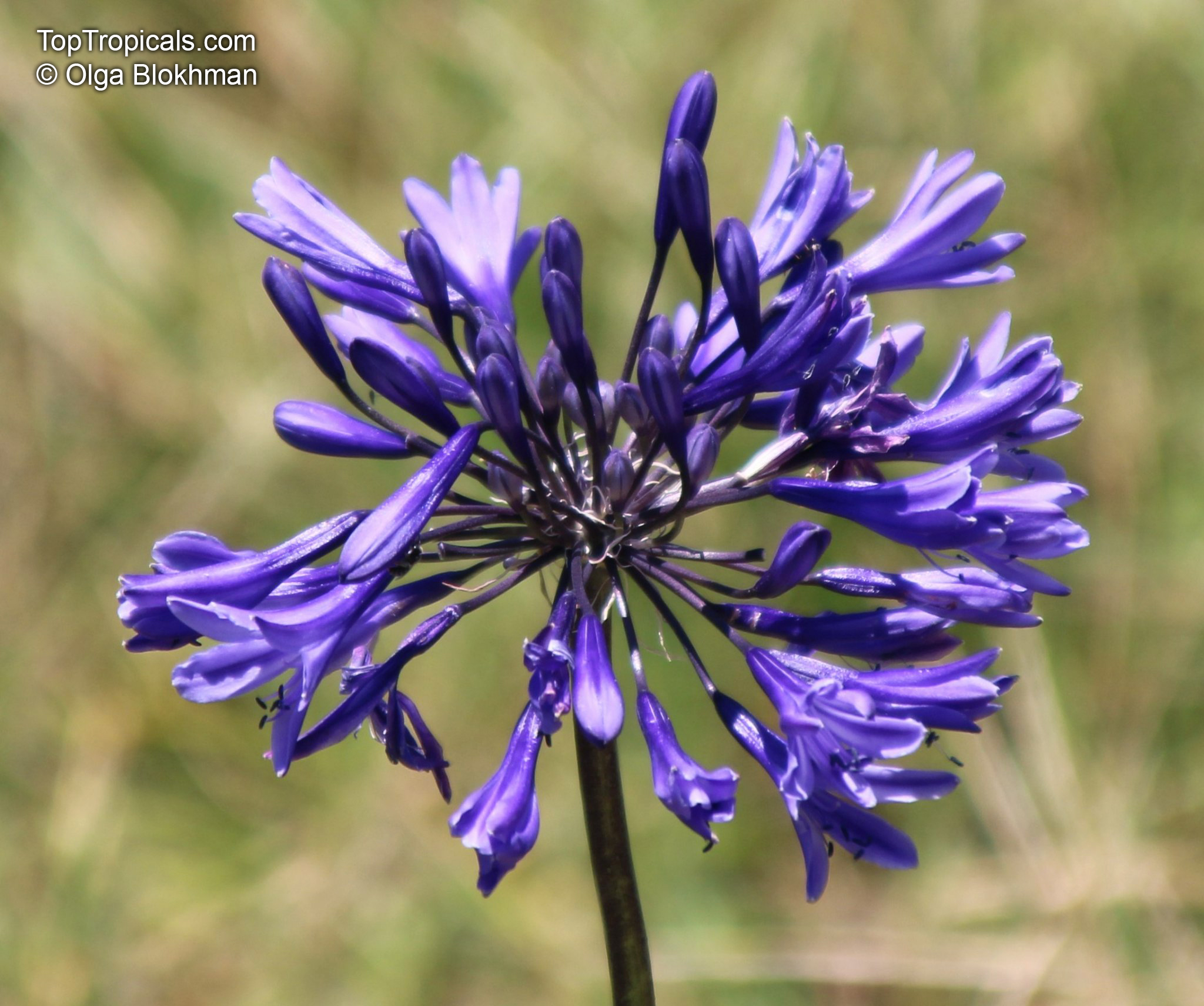
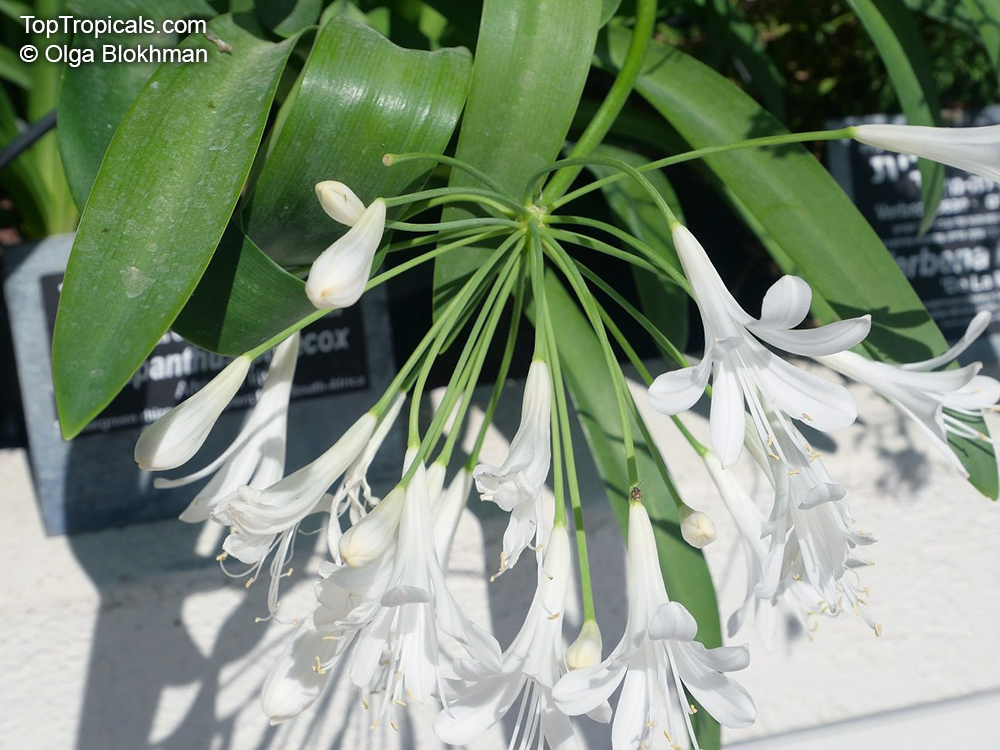
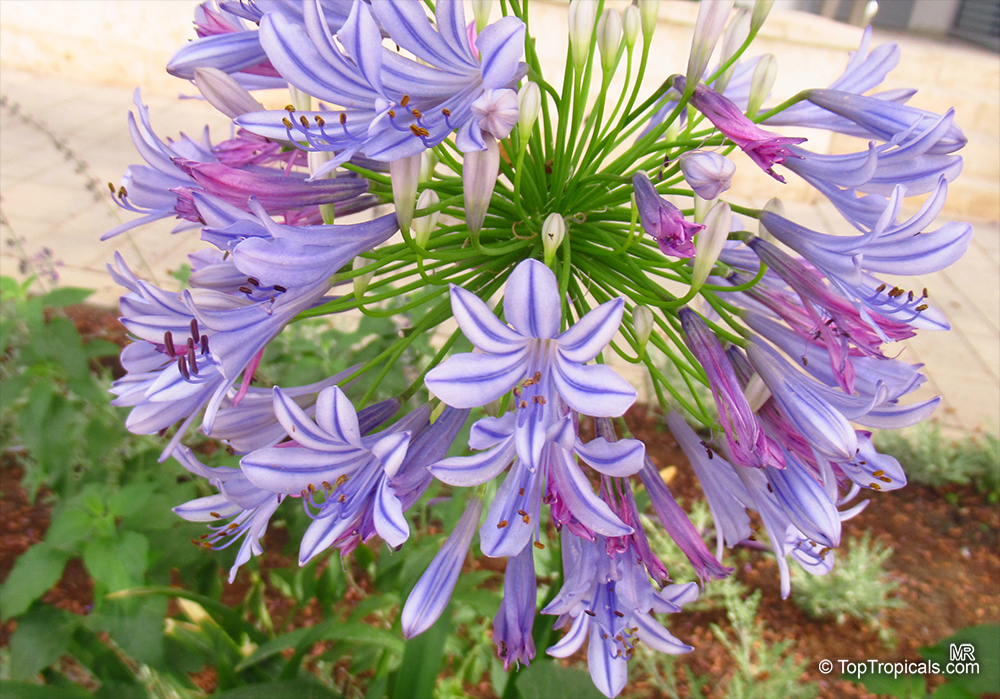
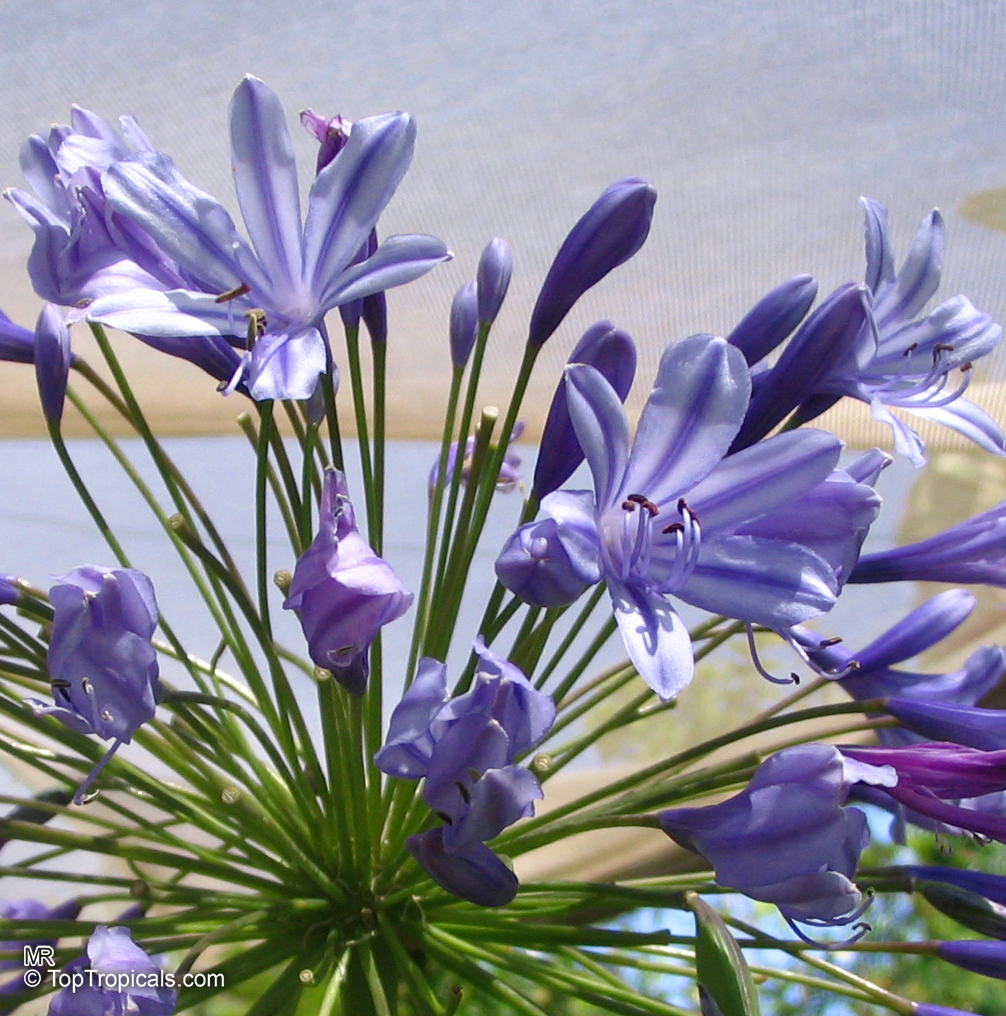
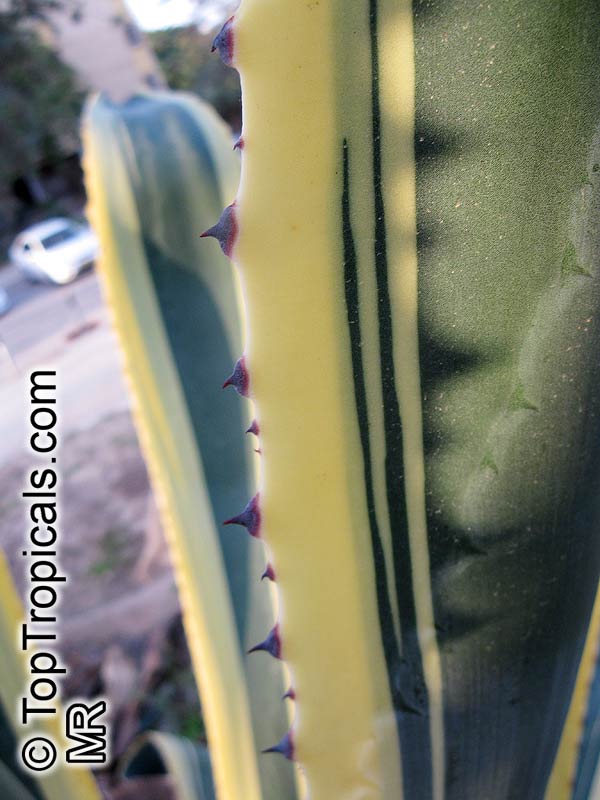
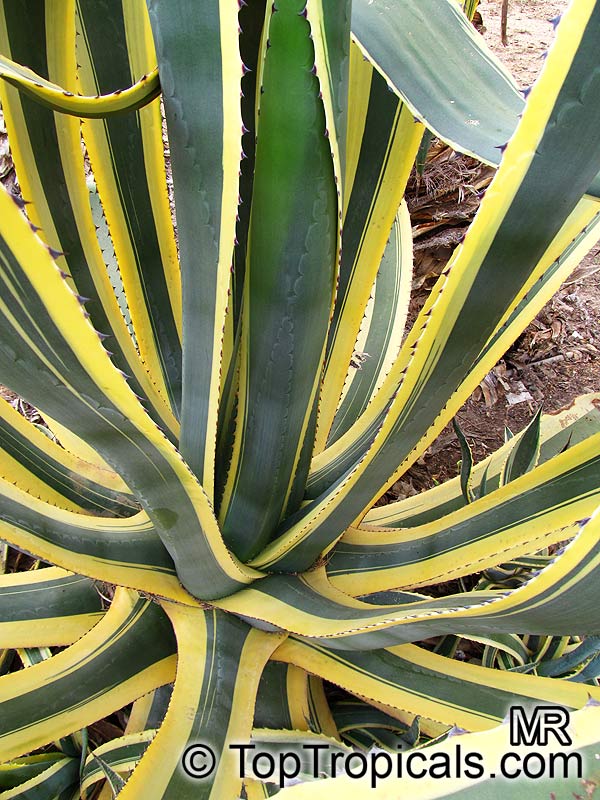
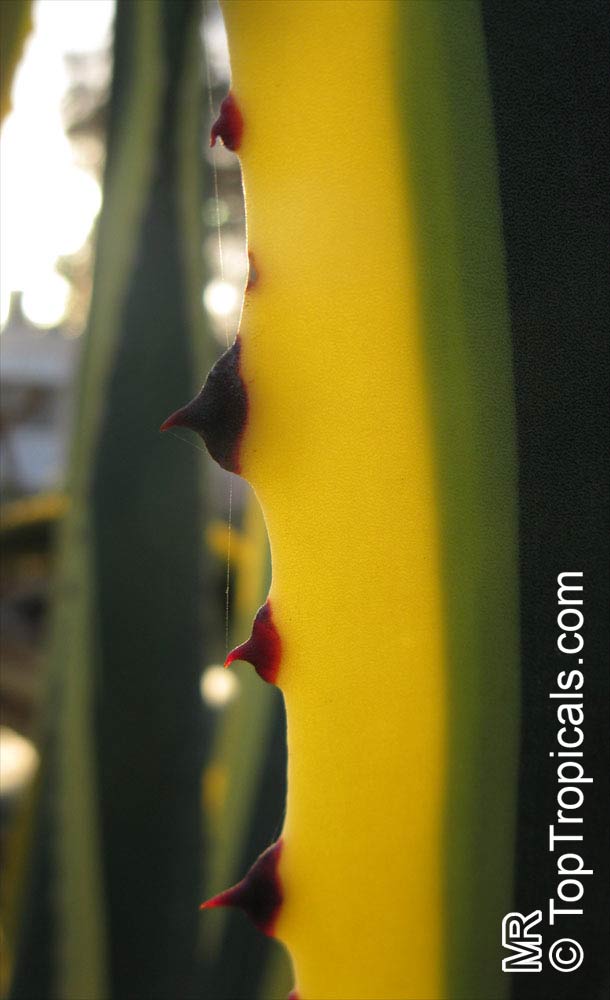
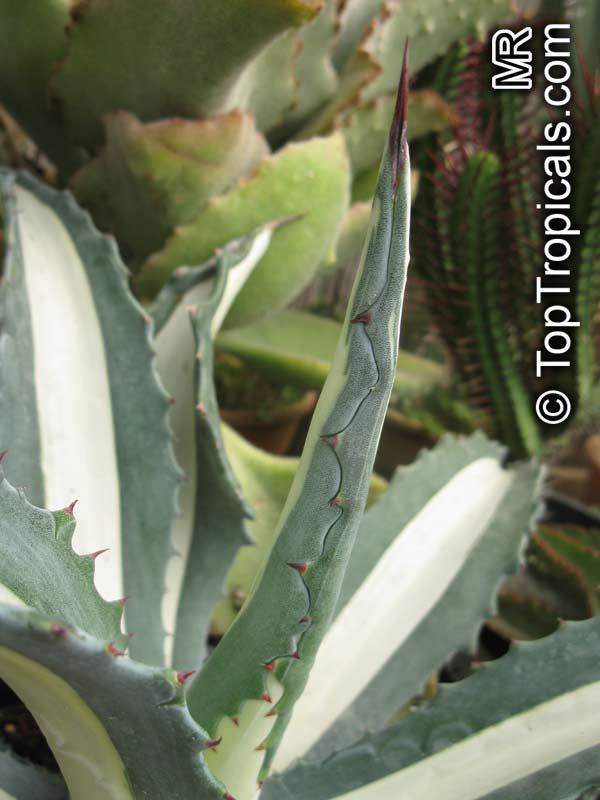
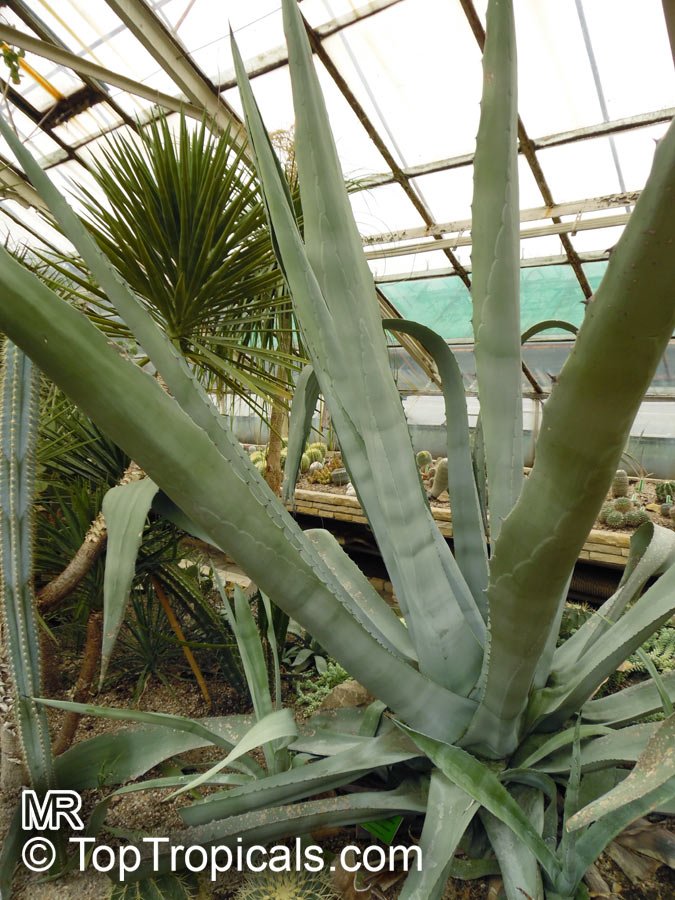
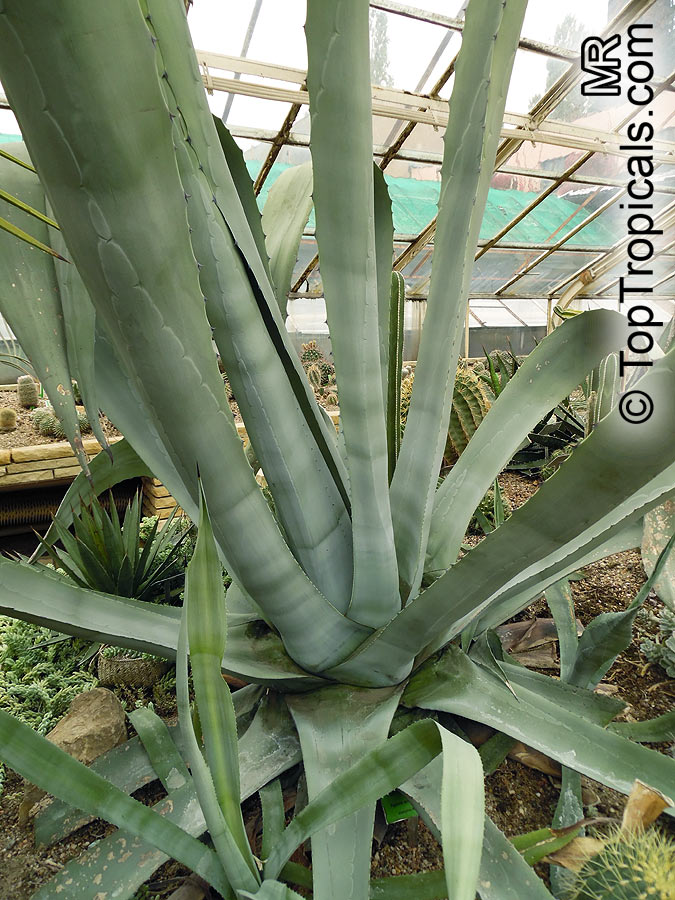
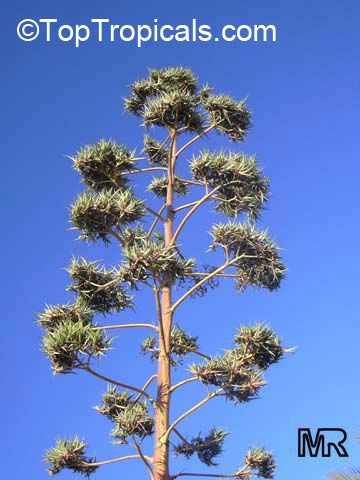
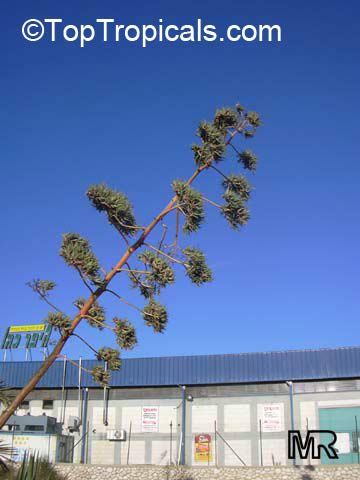
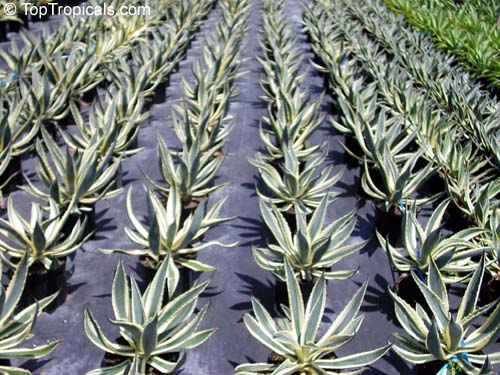
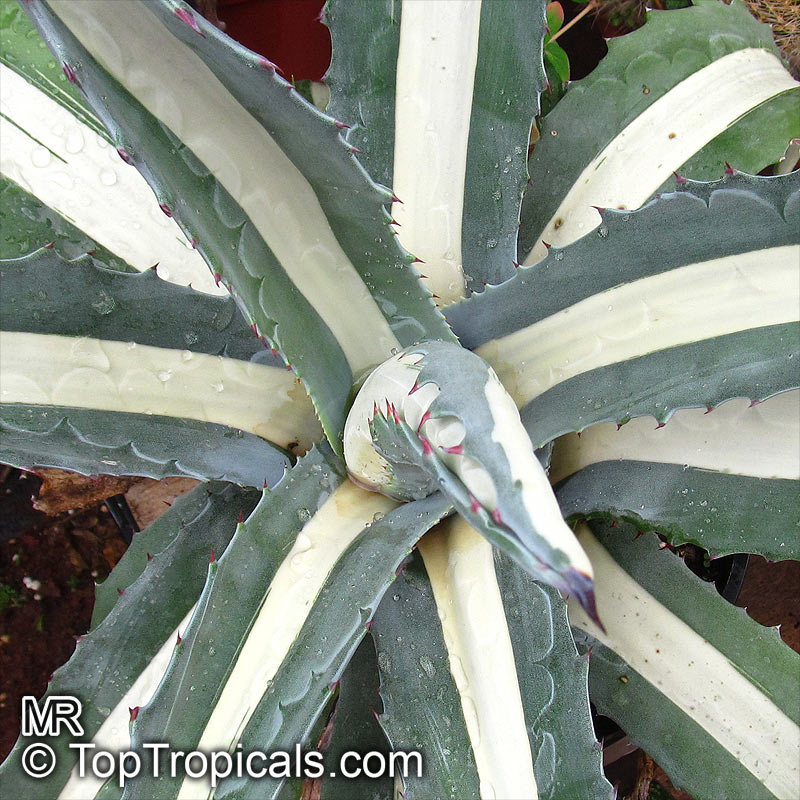
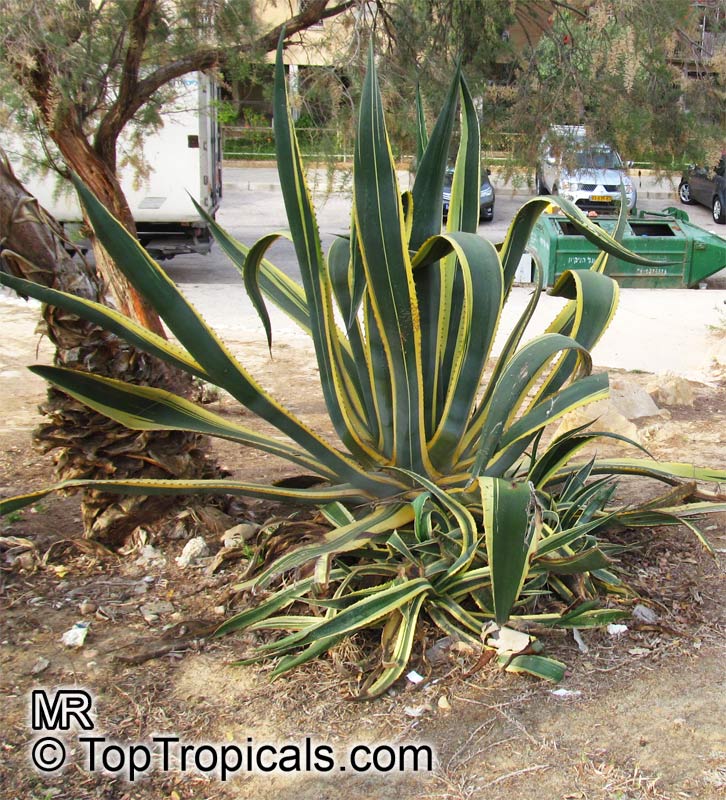
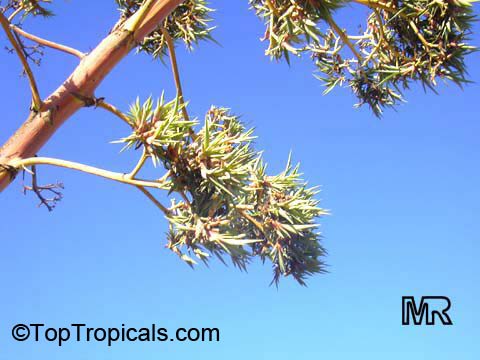
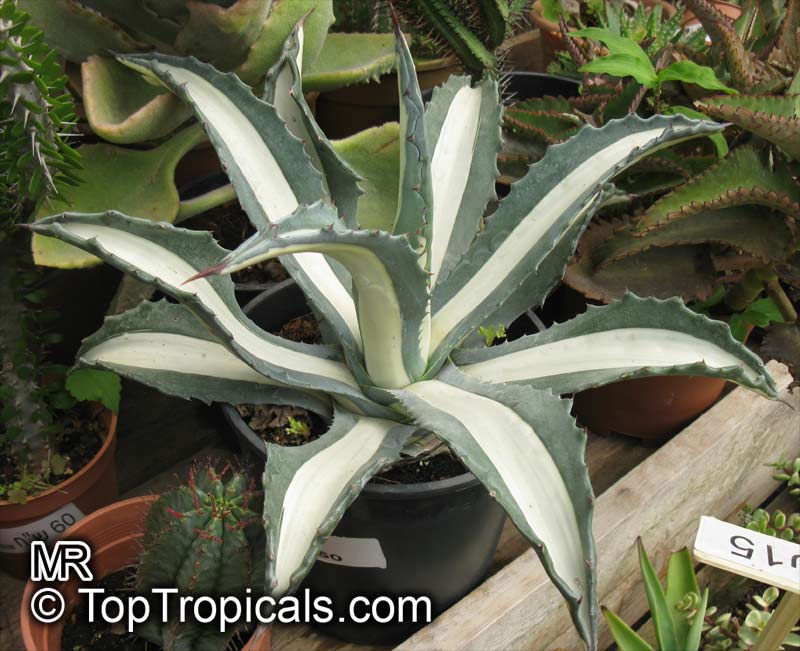
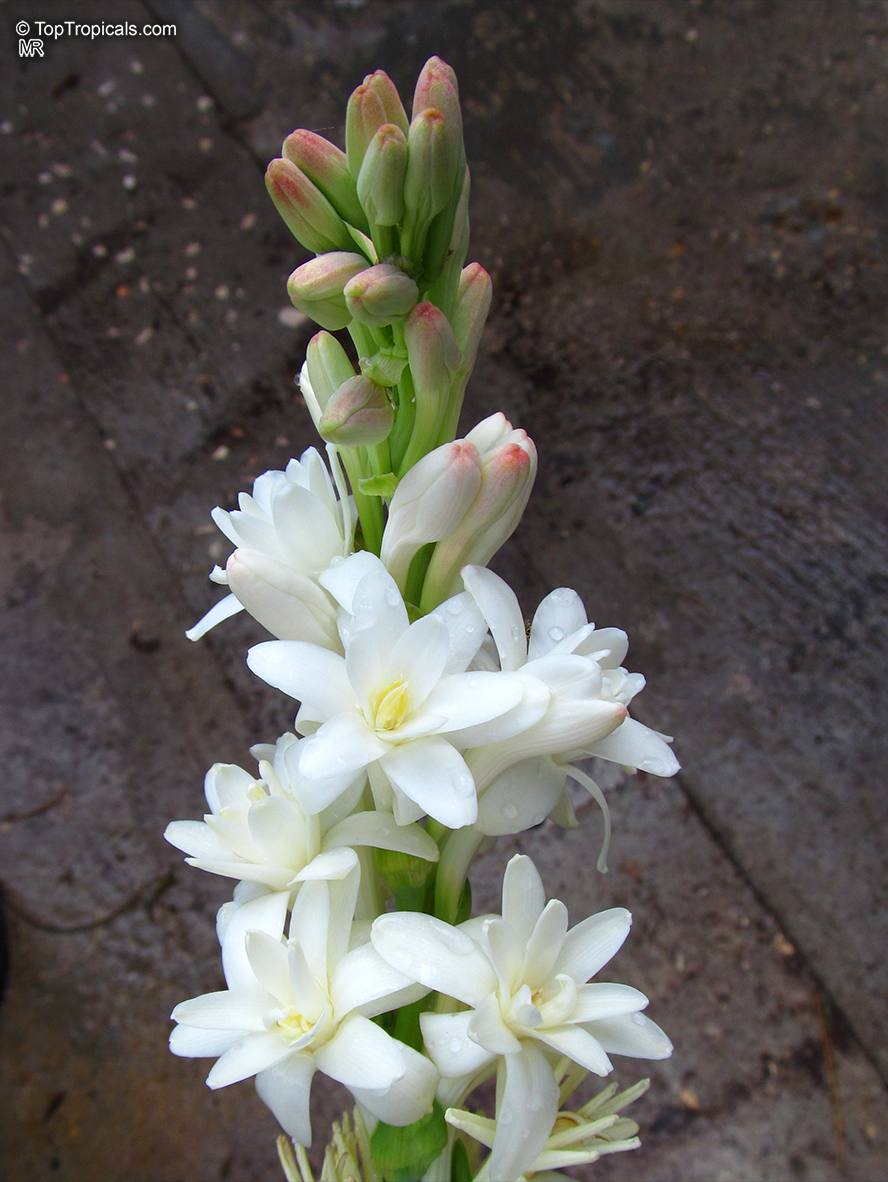
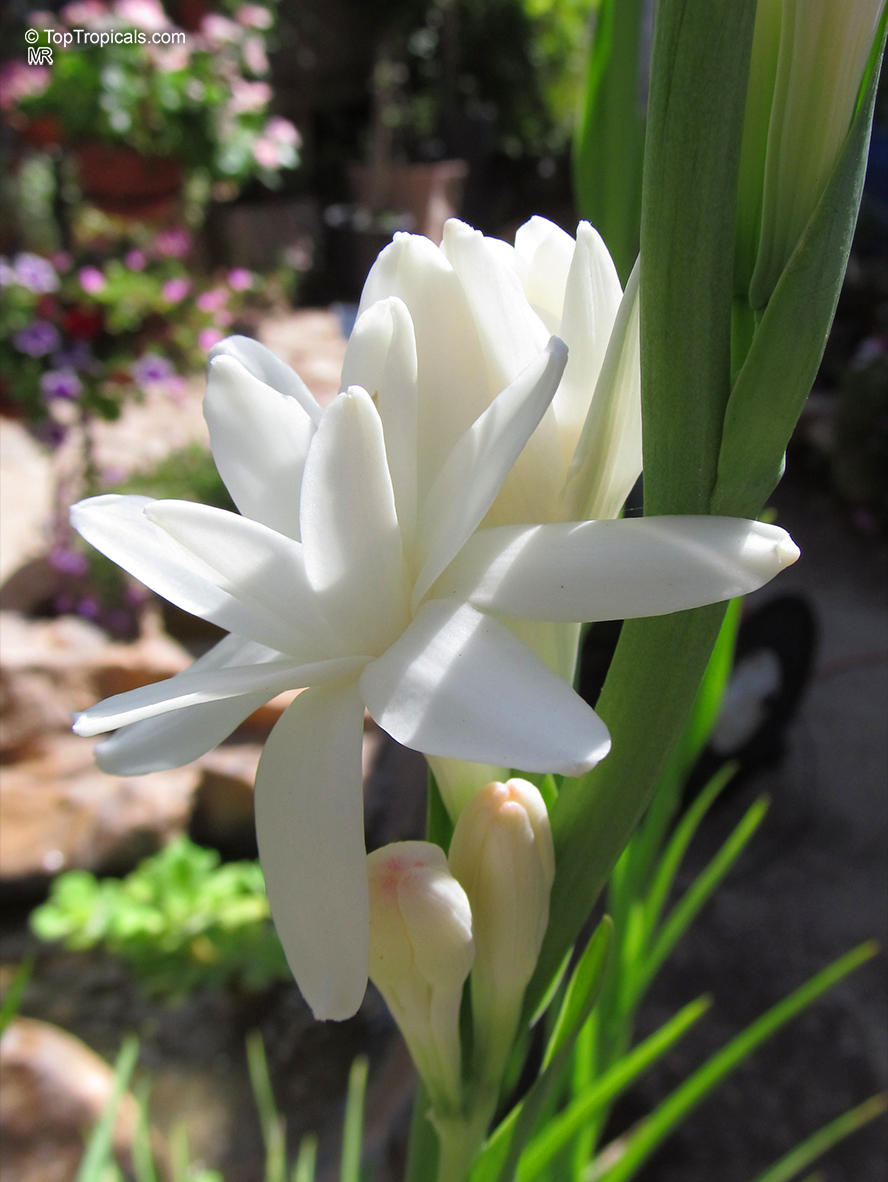
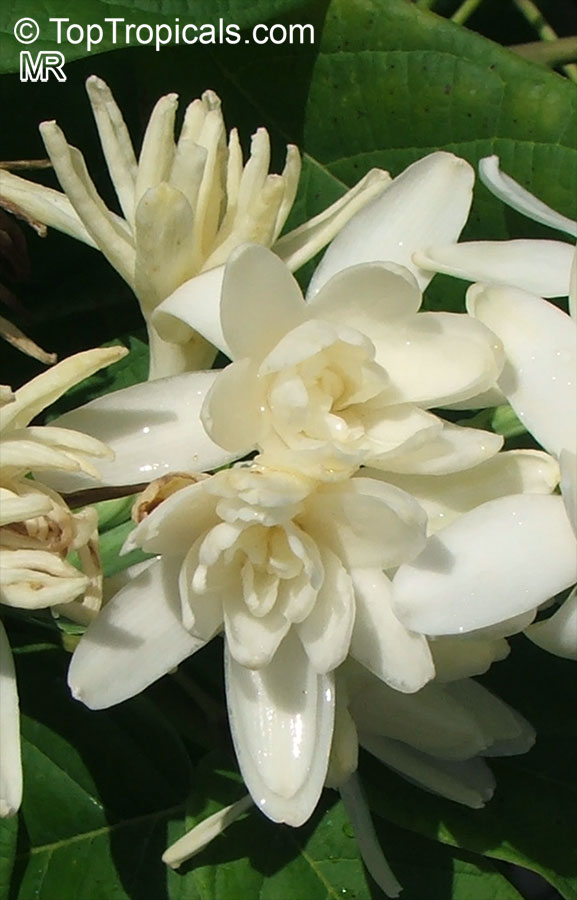
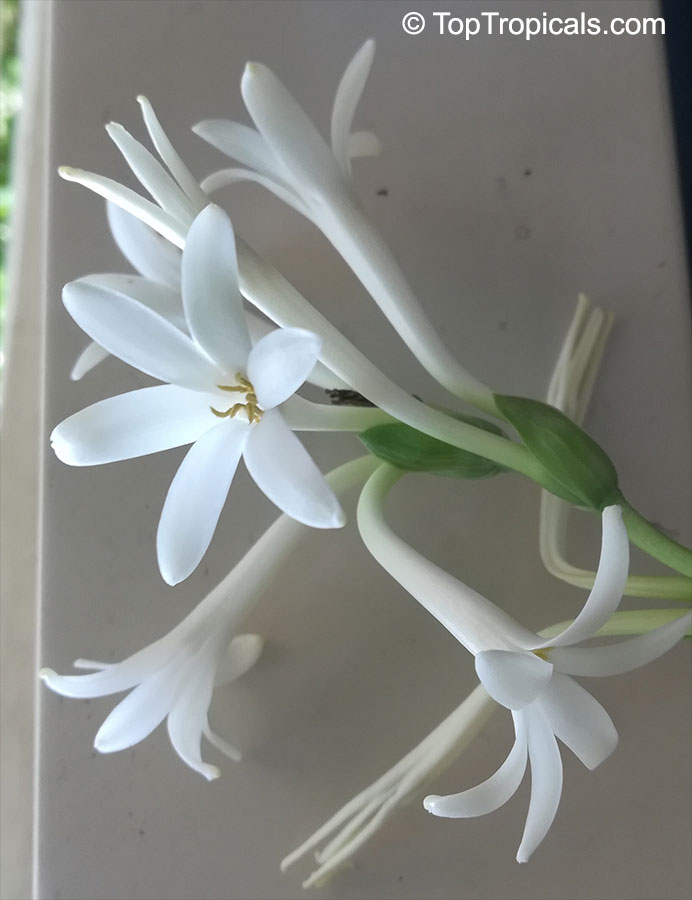

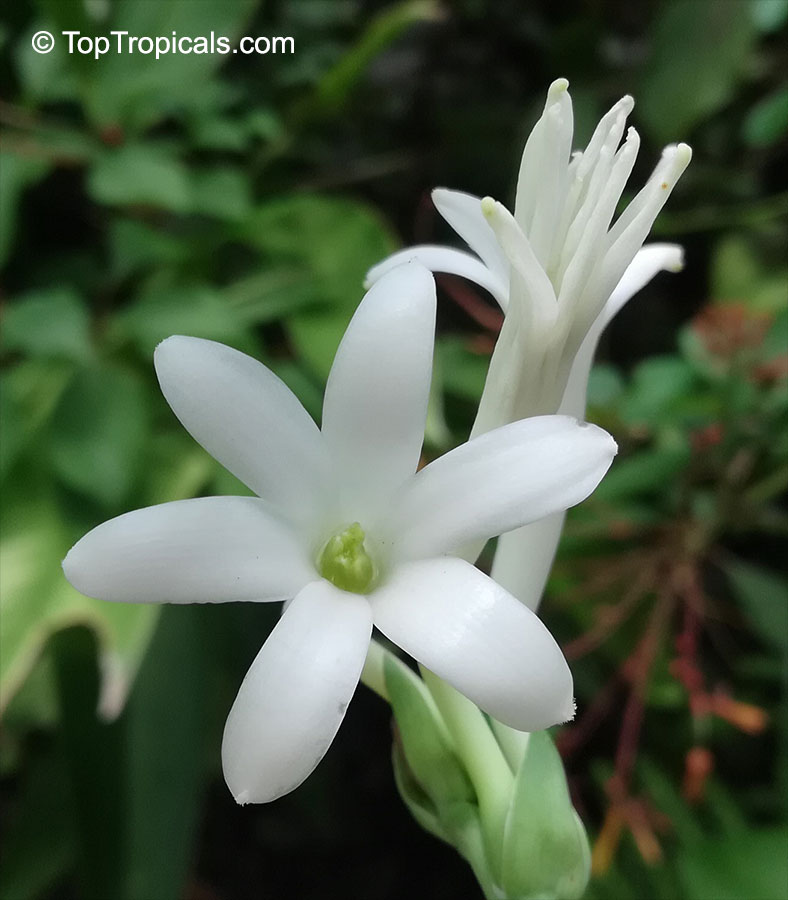
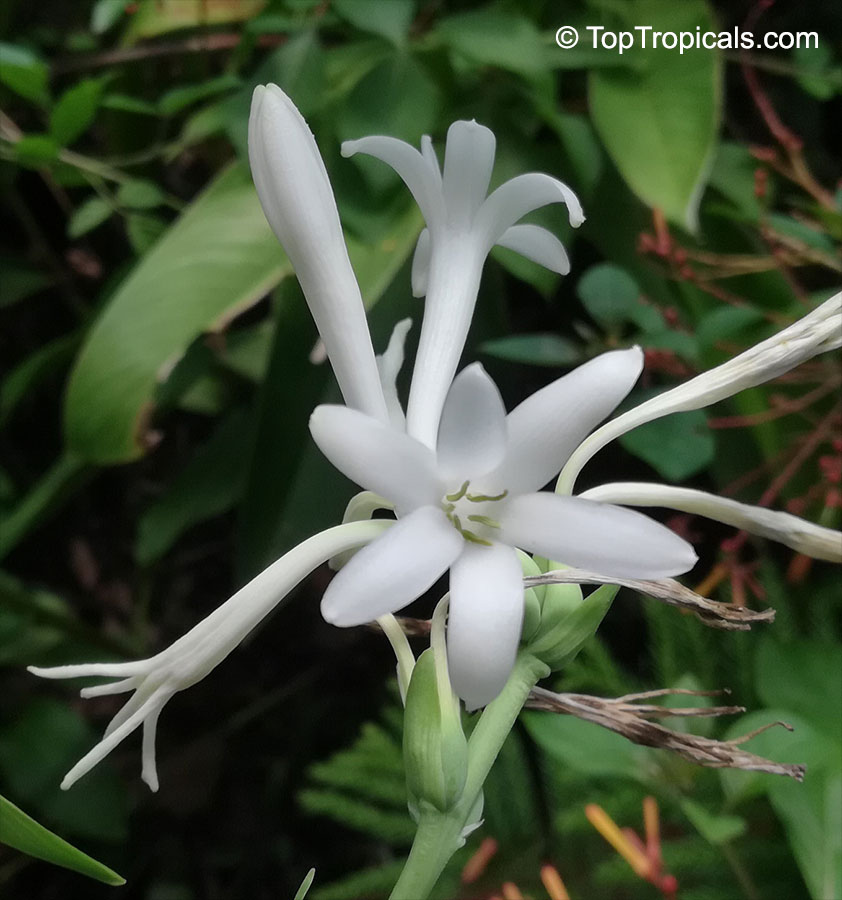
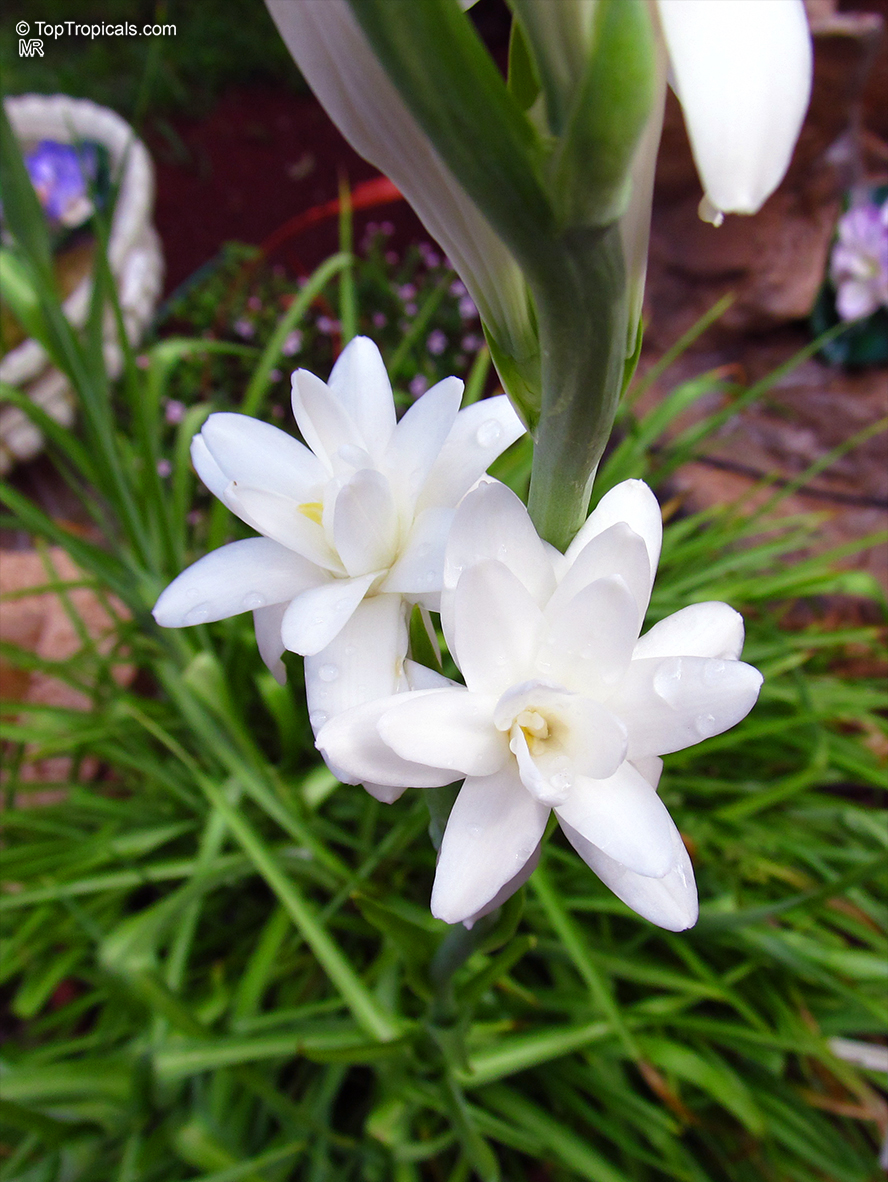
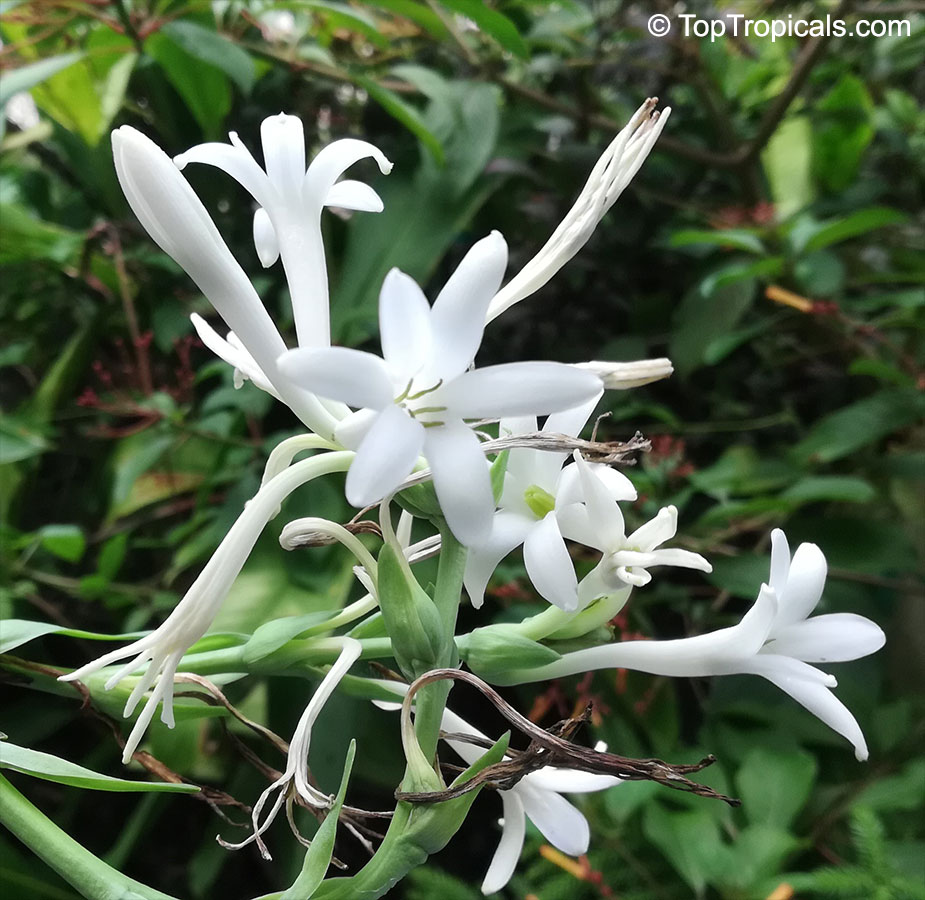
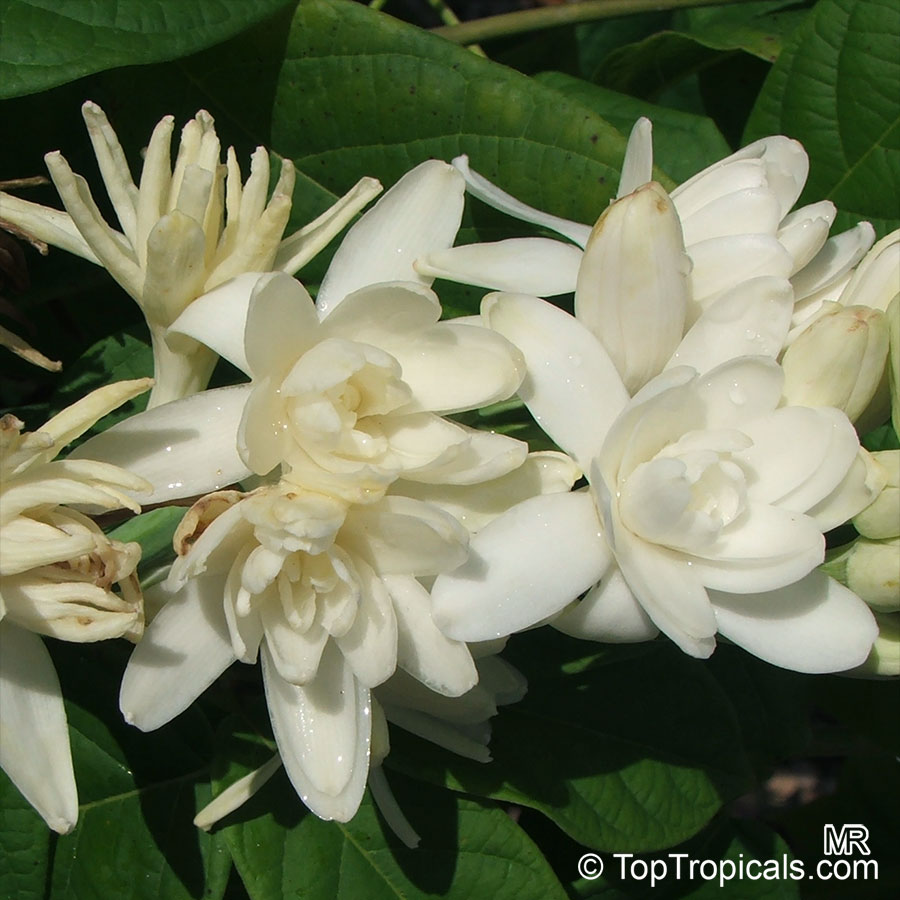
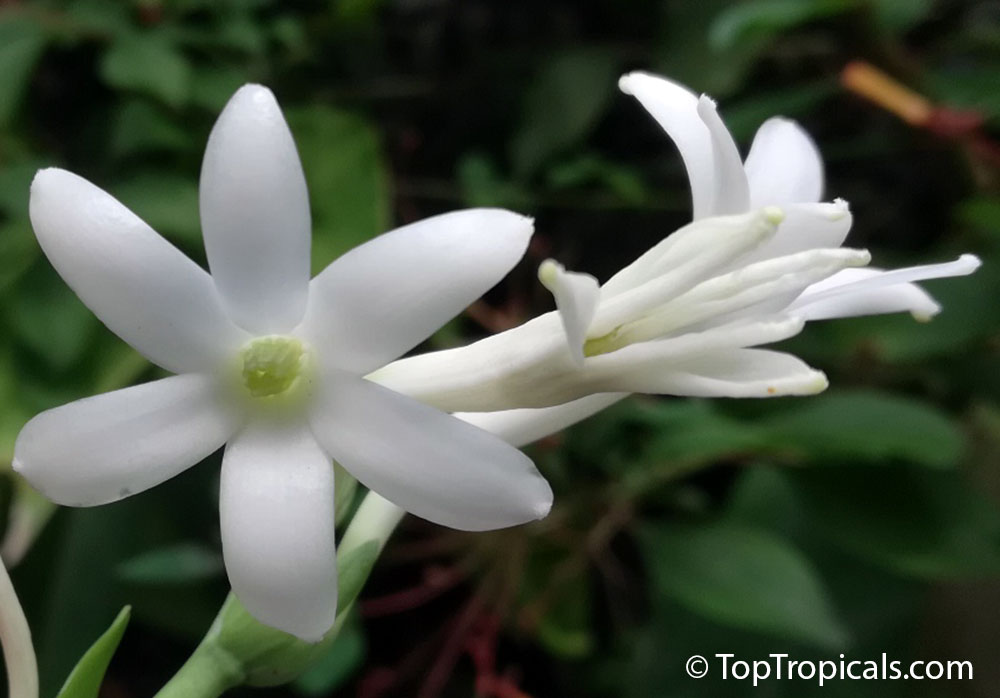
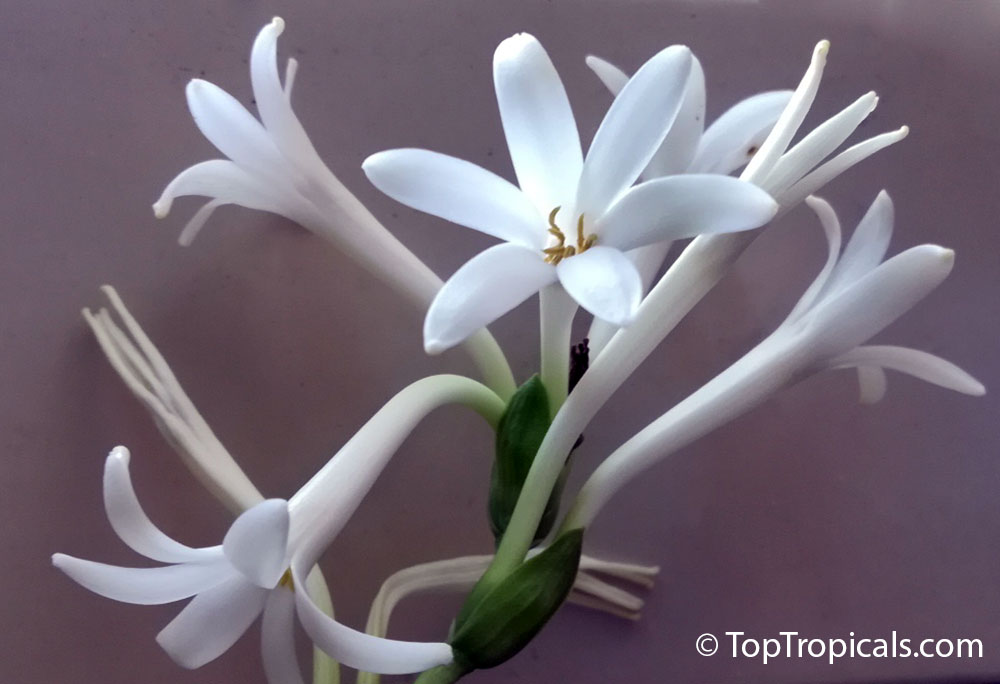
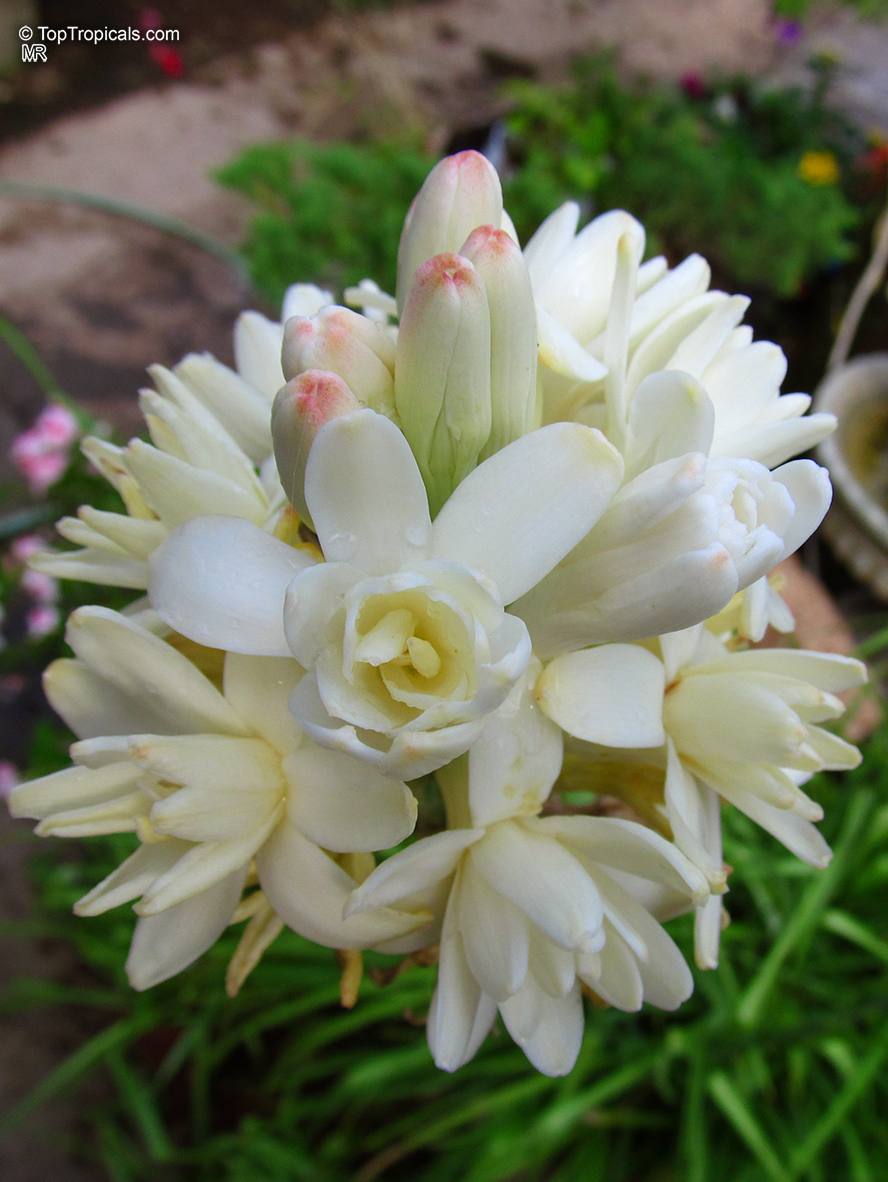
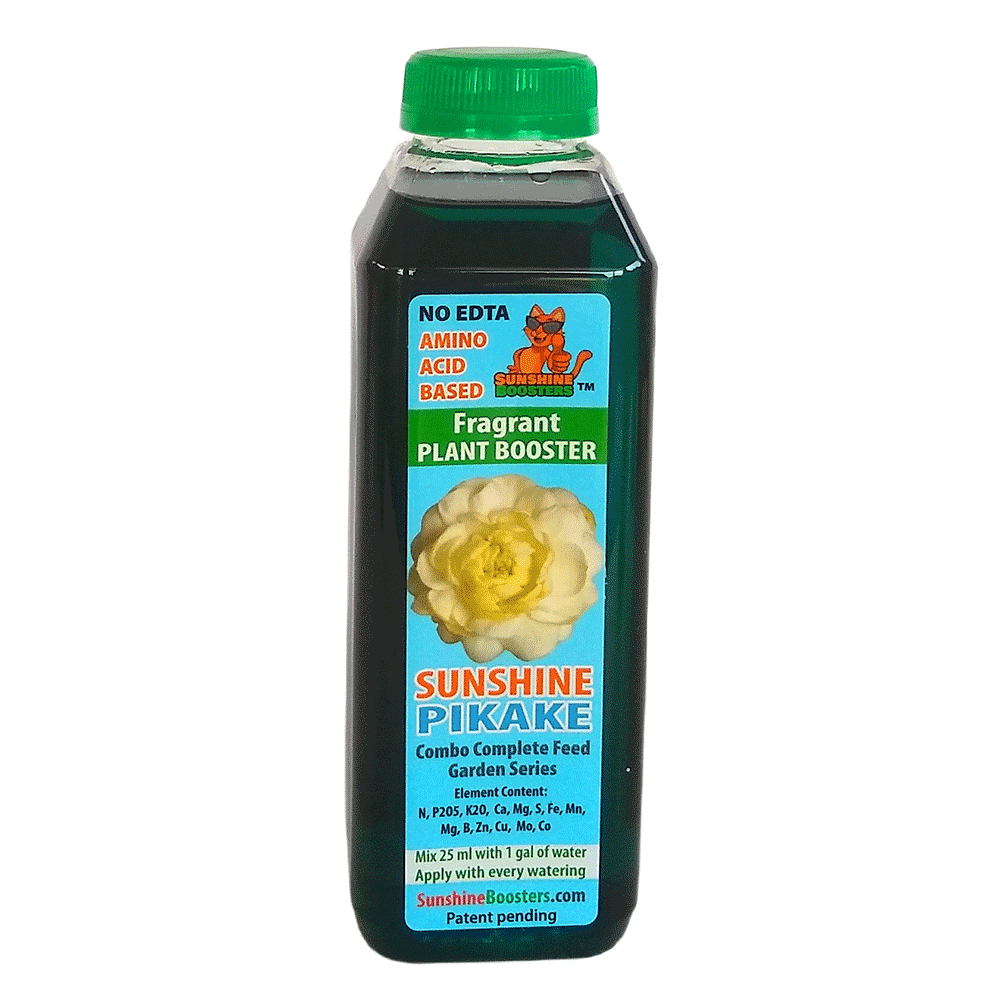 SUNSHINE Pikake (NPK 2-2-4) - eco-friendly concentrated nutrition booster for fragrant flowers. Improves quantity and quality of flowers. Encourages profuse blooming. Increases flower fragrance intensity. Can be used with every watering. For best results, use in combination with
SUNSHINE Pikake (NPK 2-2-4) - eco-friendly concentrated nutrition booster for fragrant flowers. Improves quantity and quality of flowers. Encourages profuse blooming. Increases flower fragrance intensity. Can be used with every watering. For best results, use in combination with 